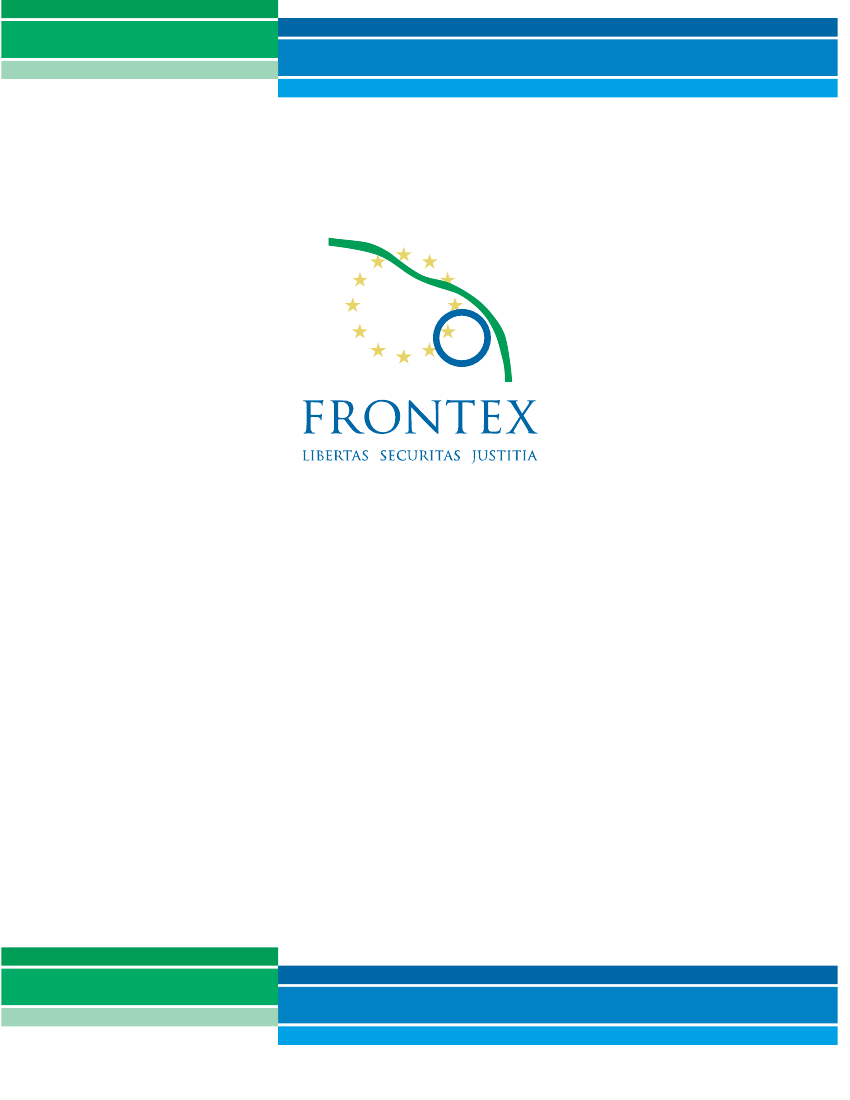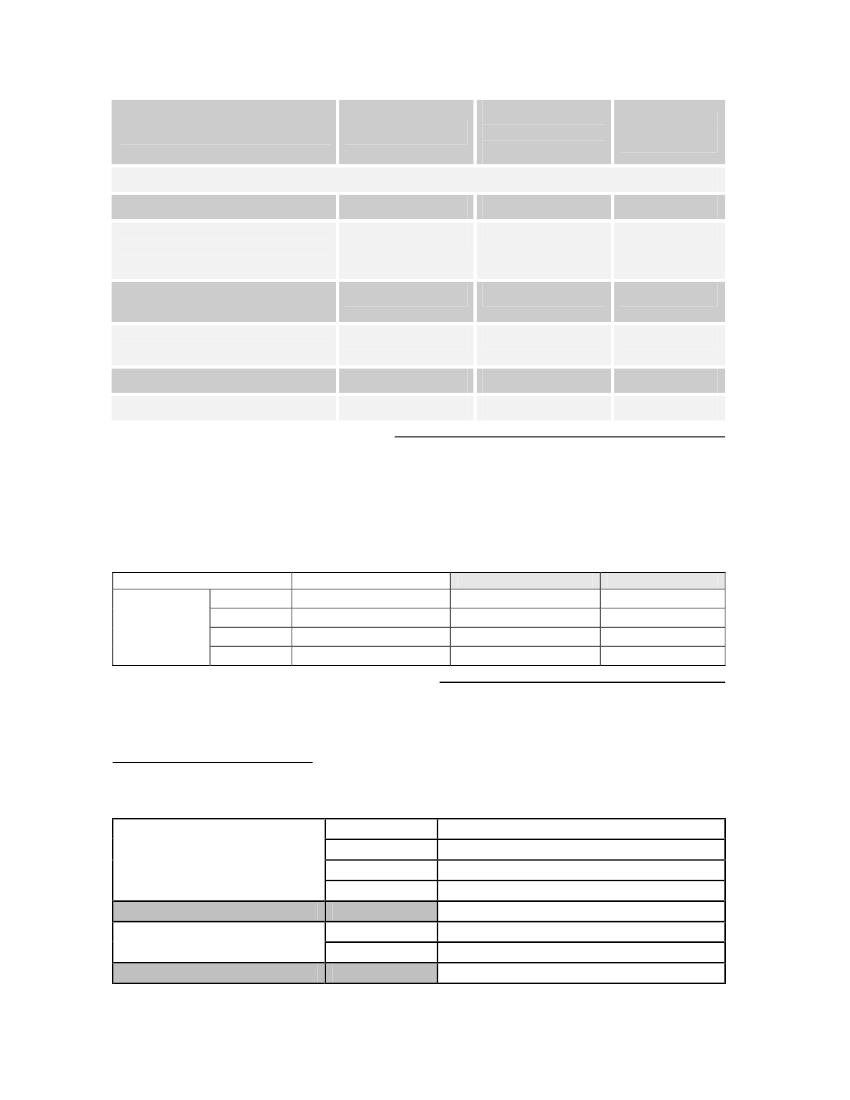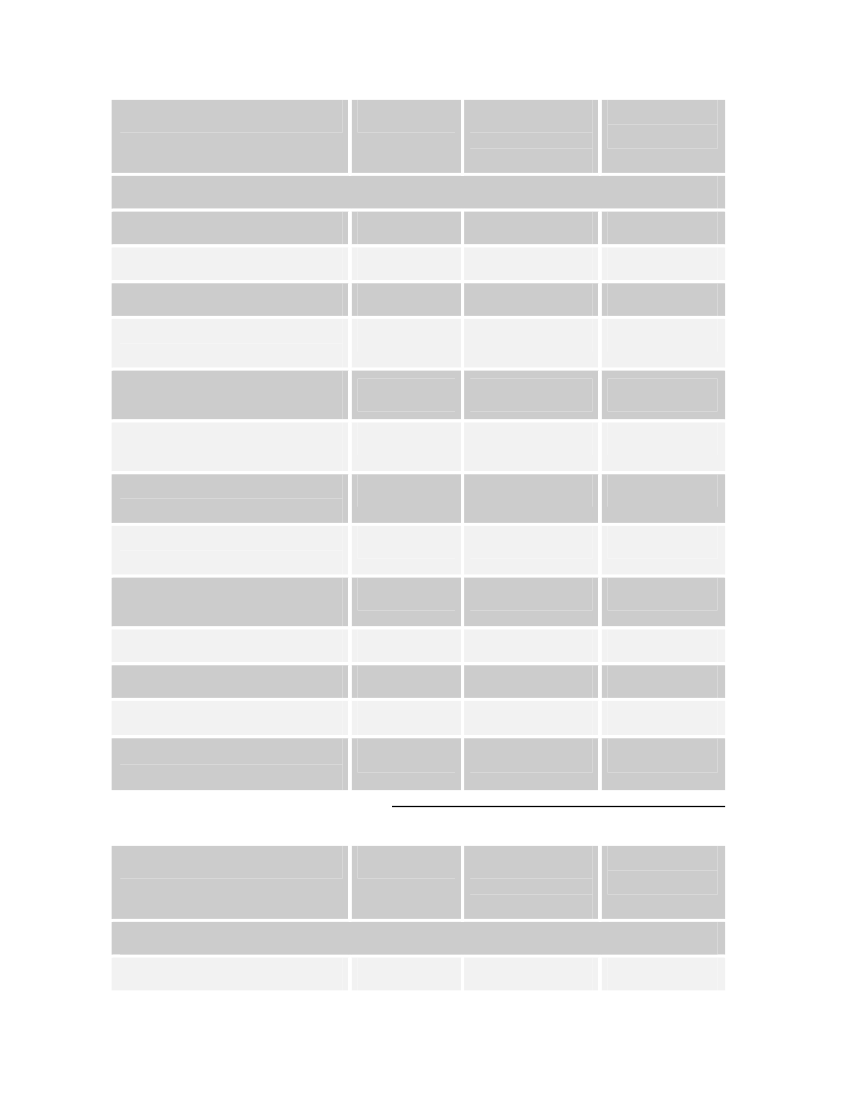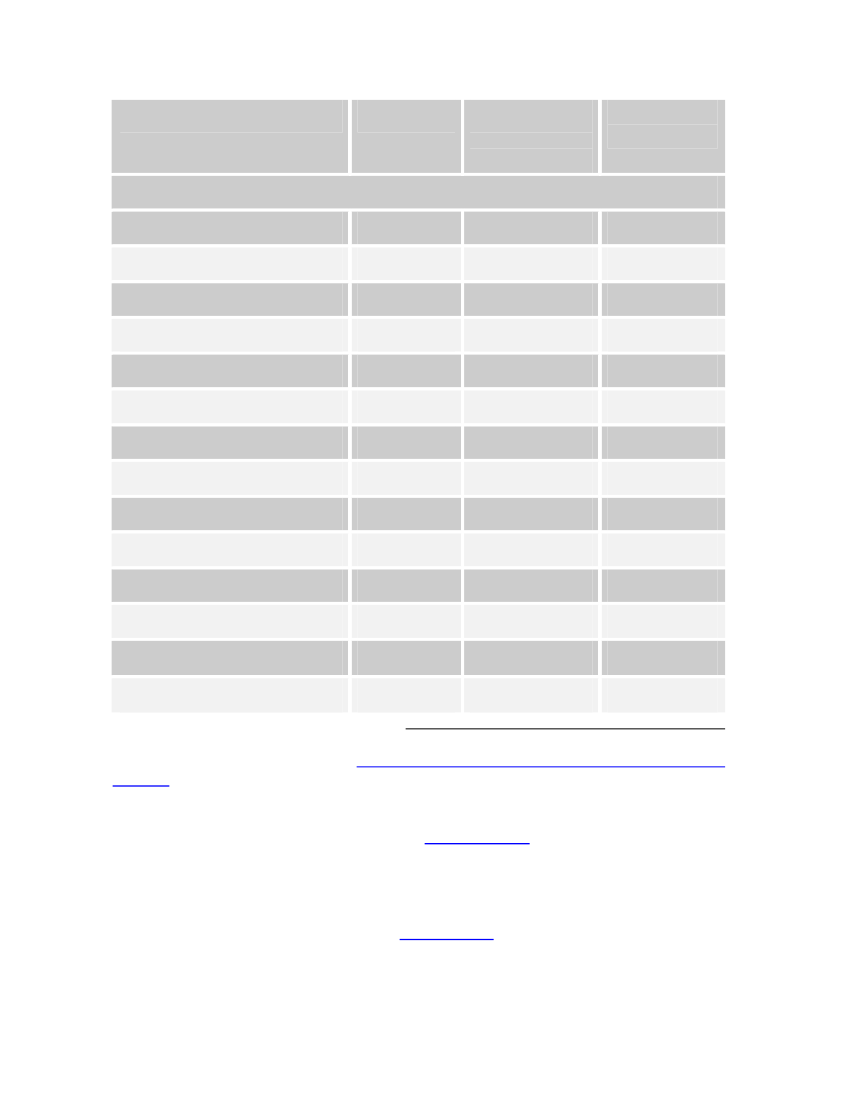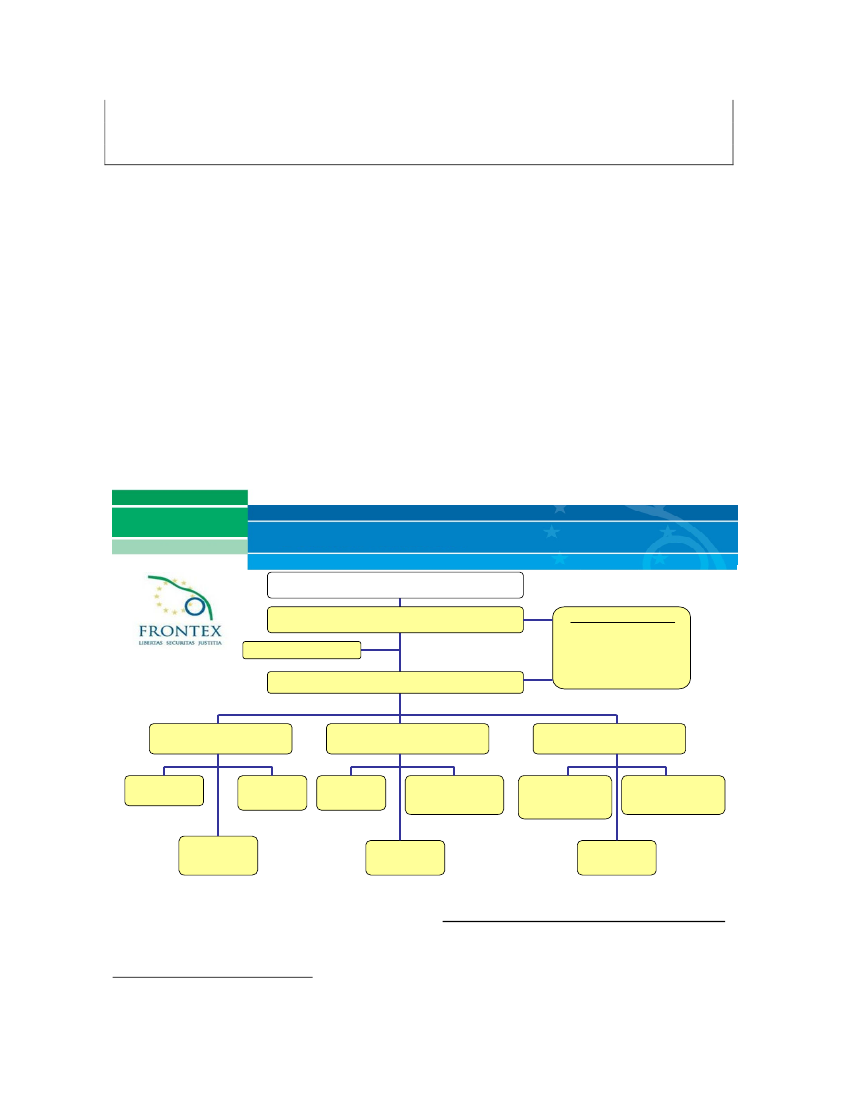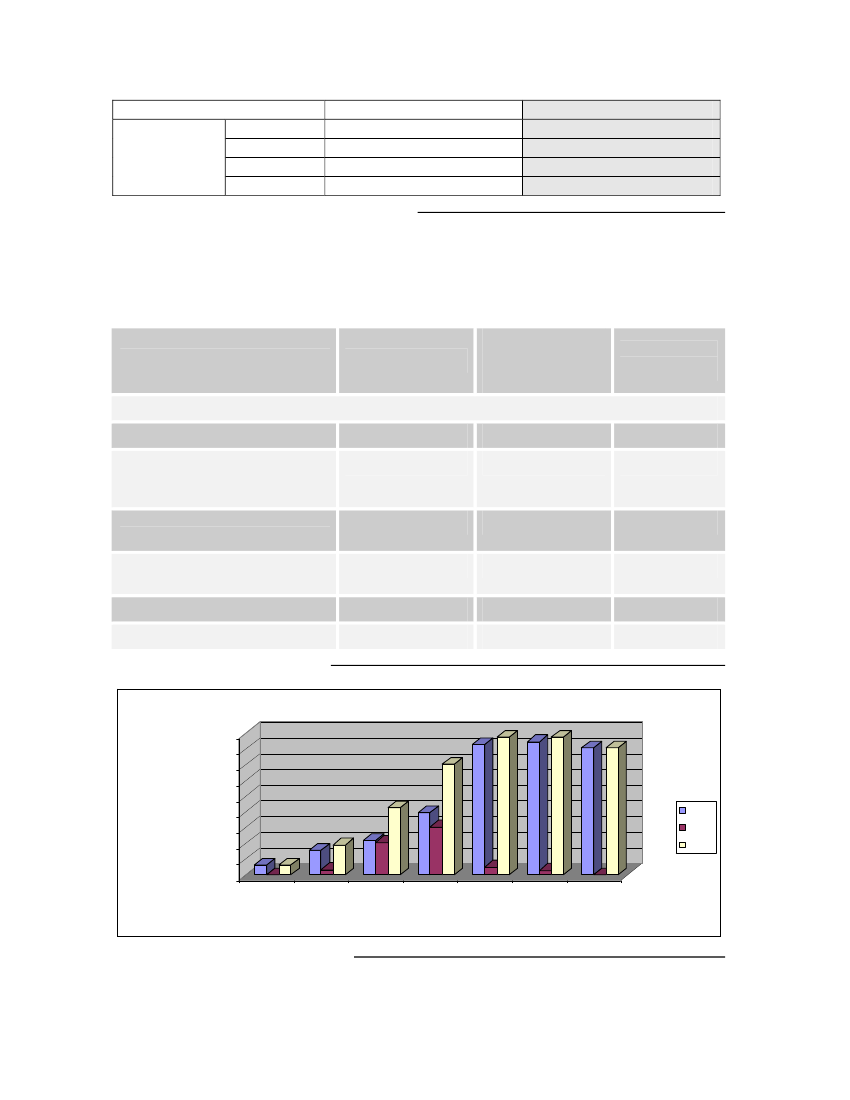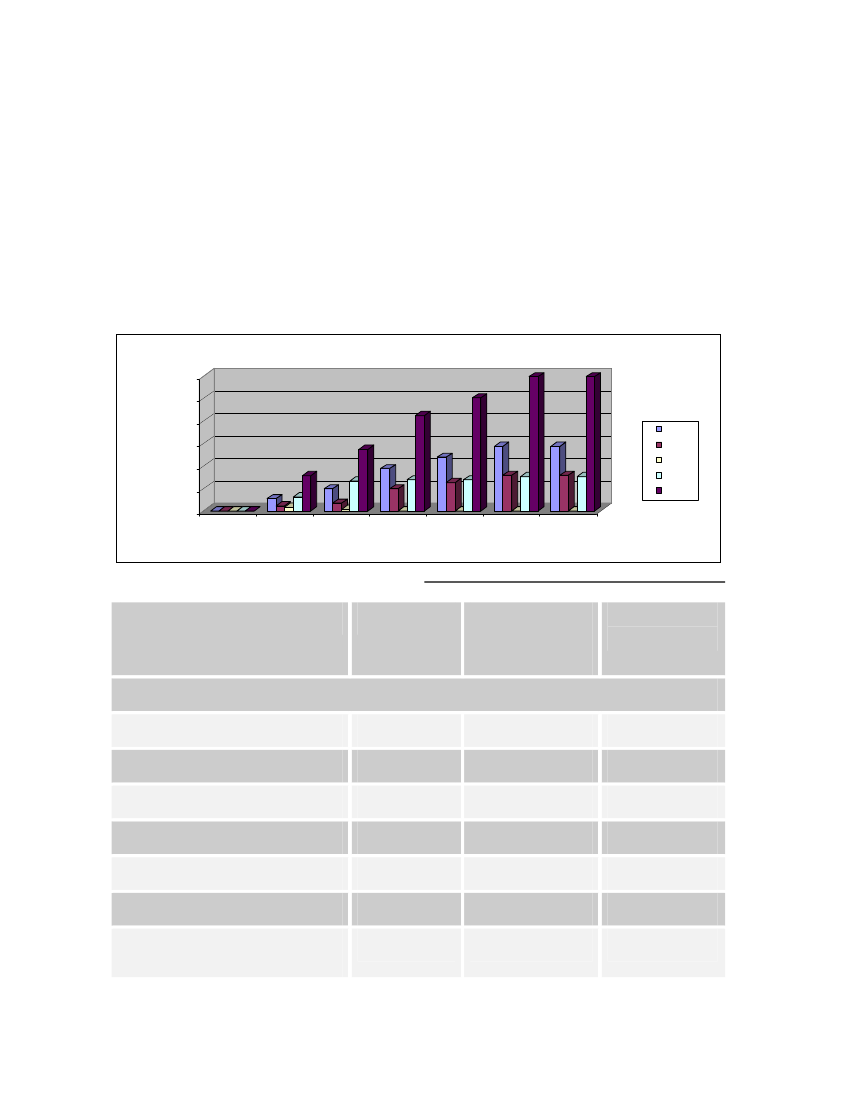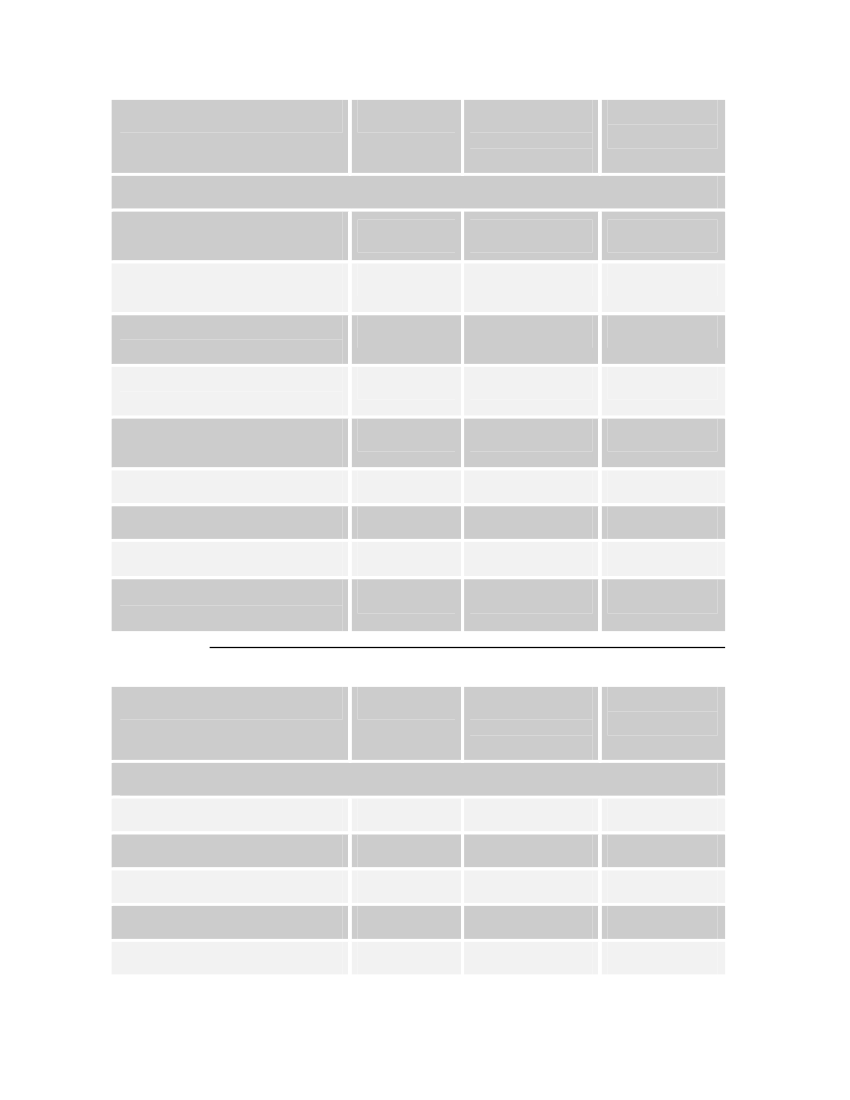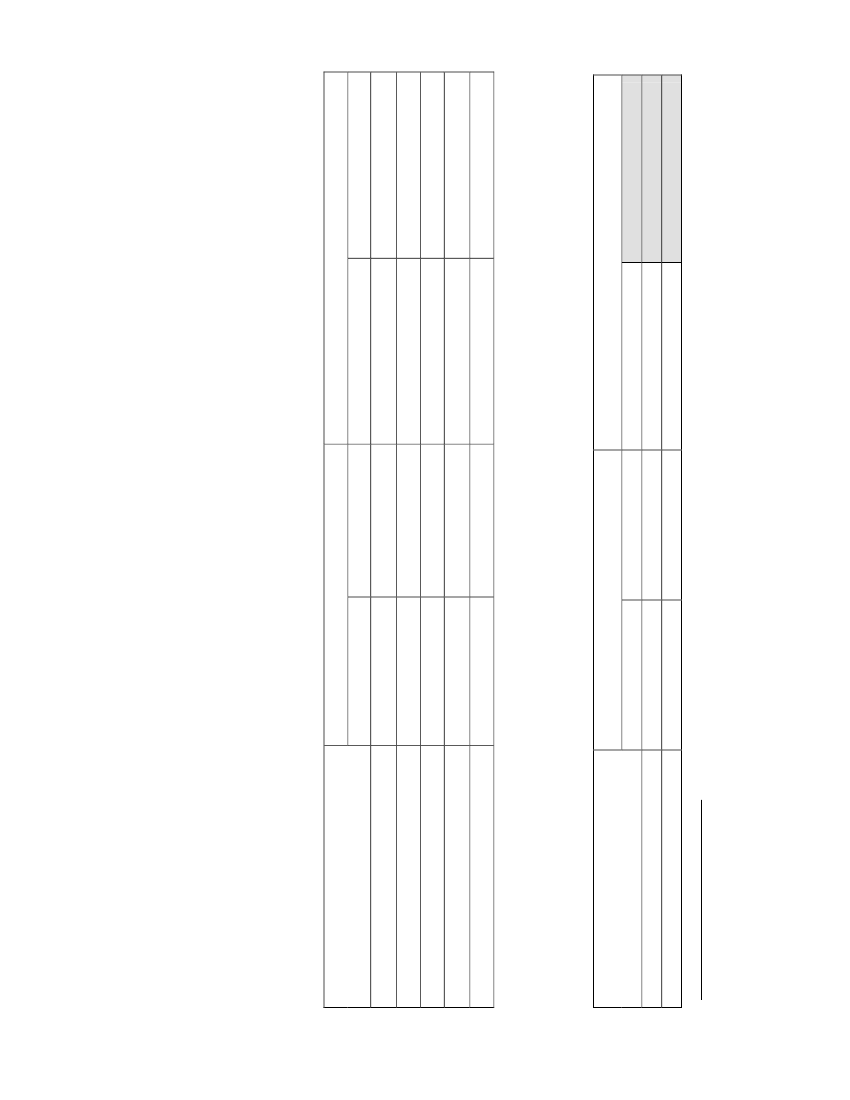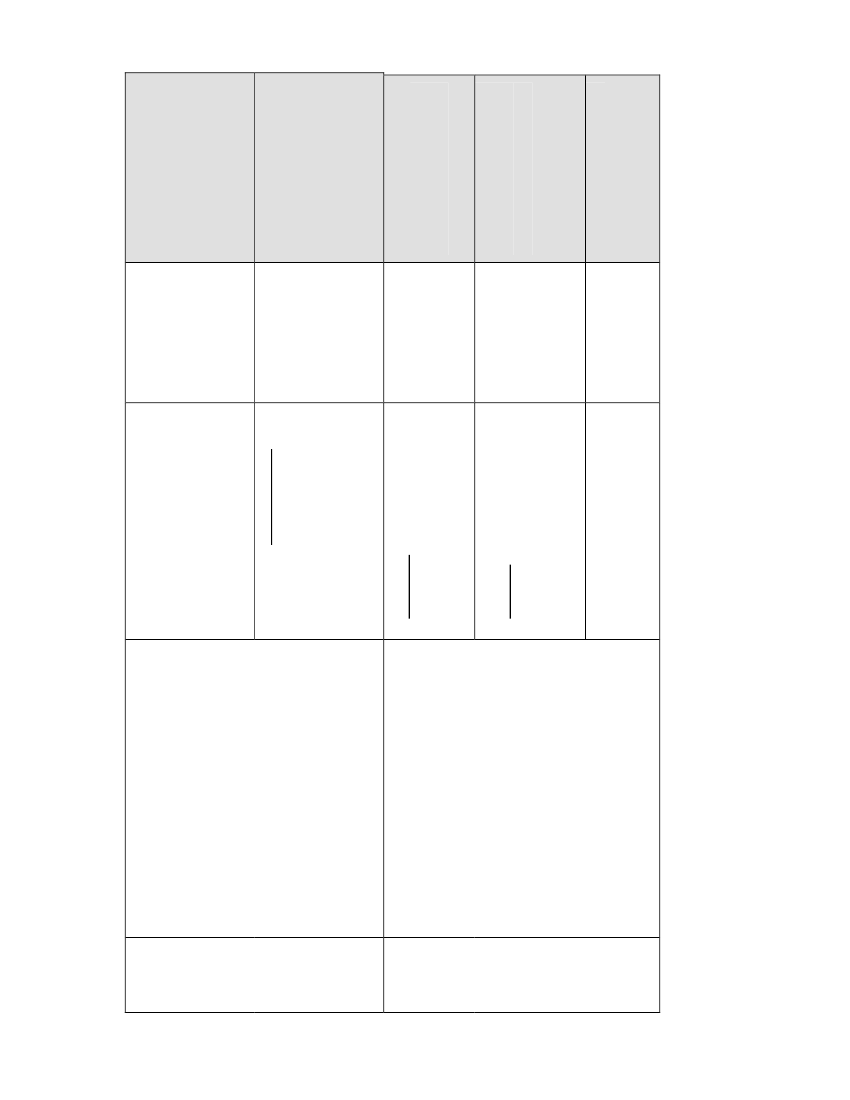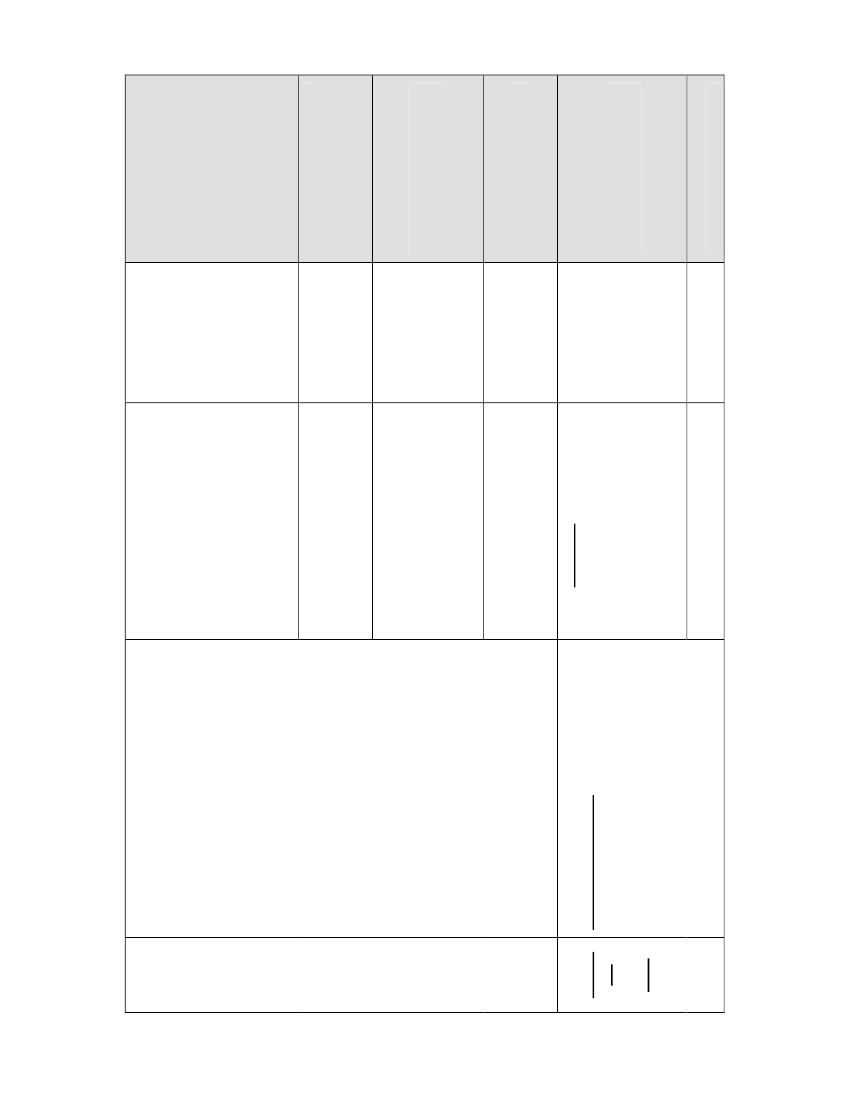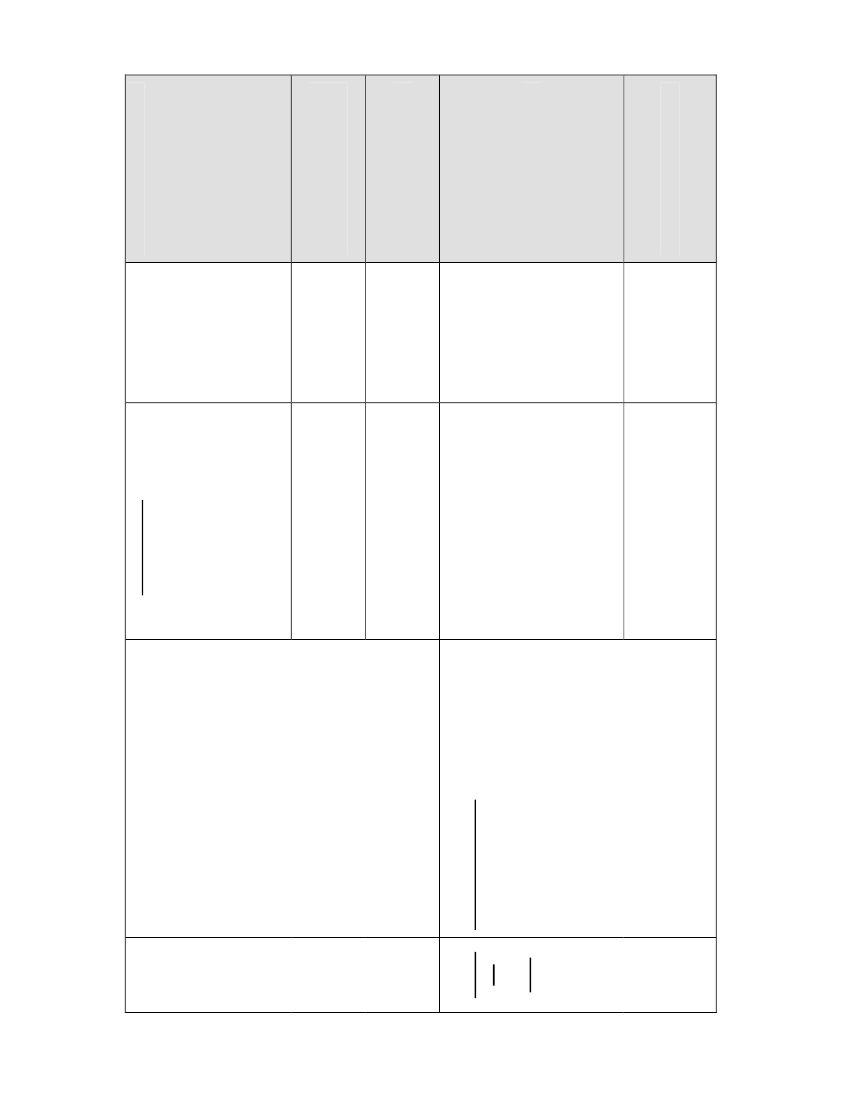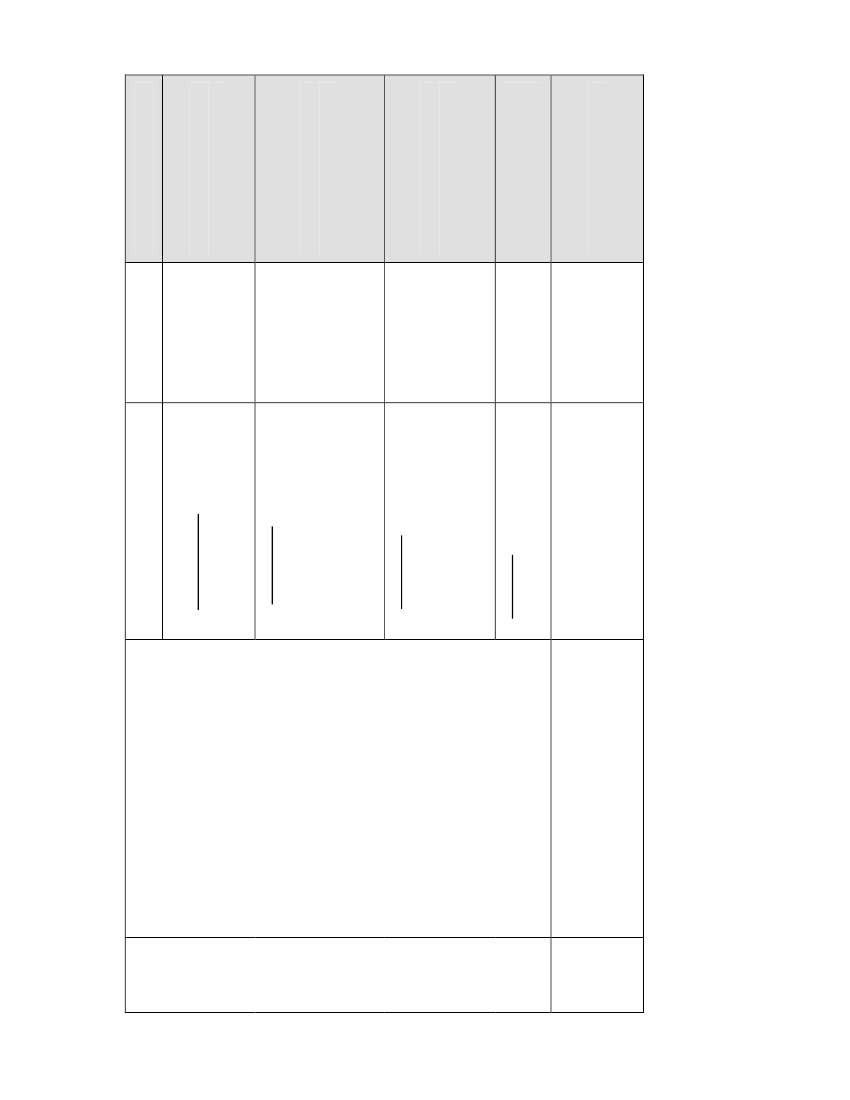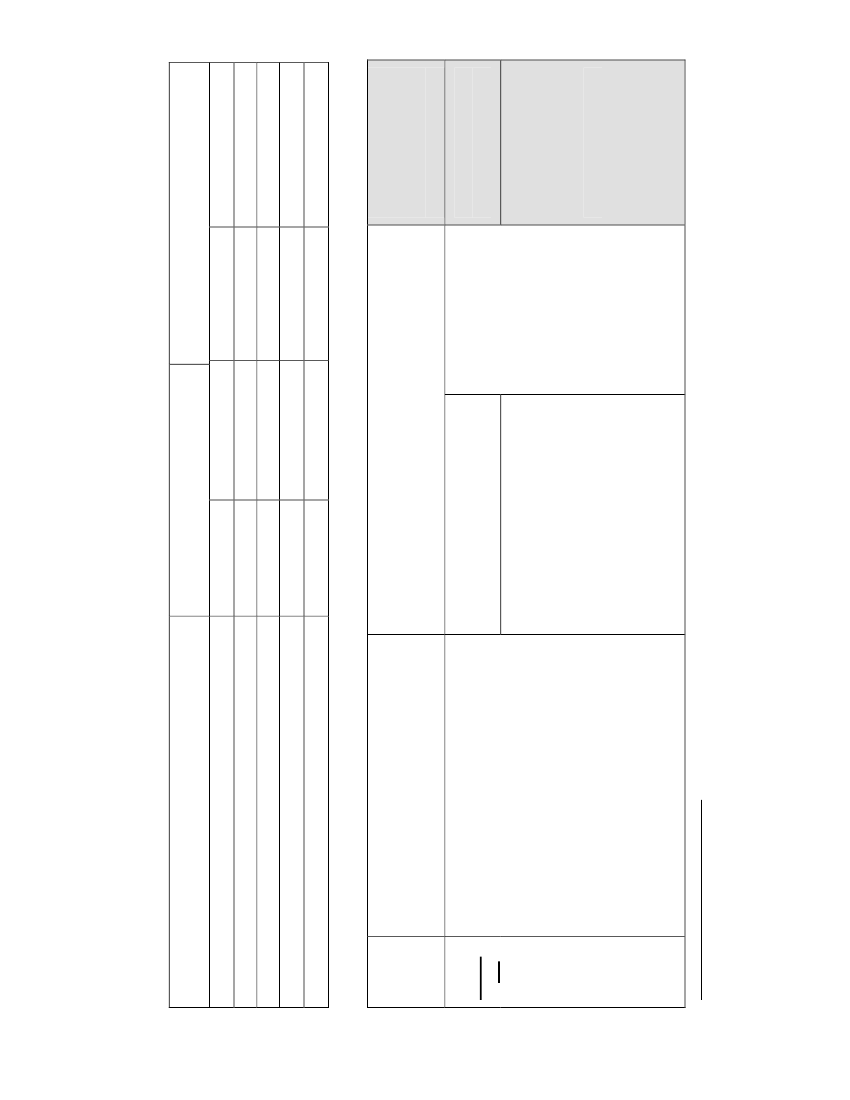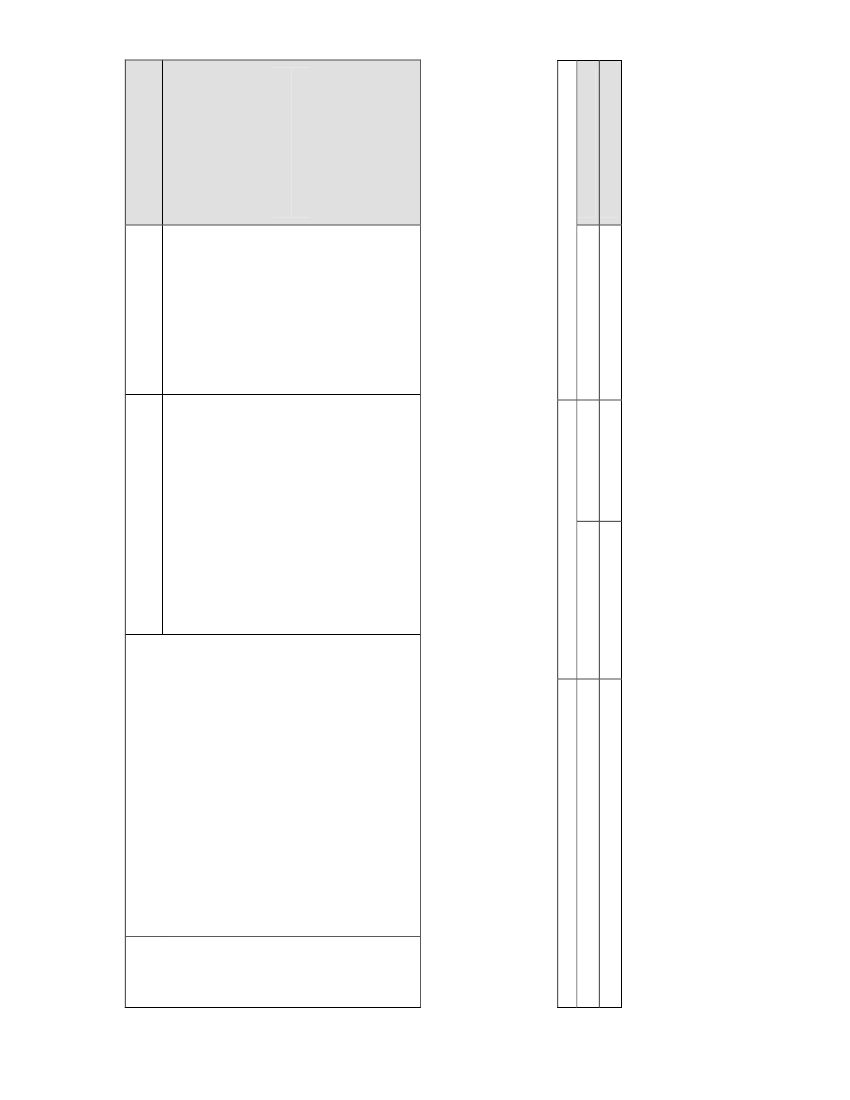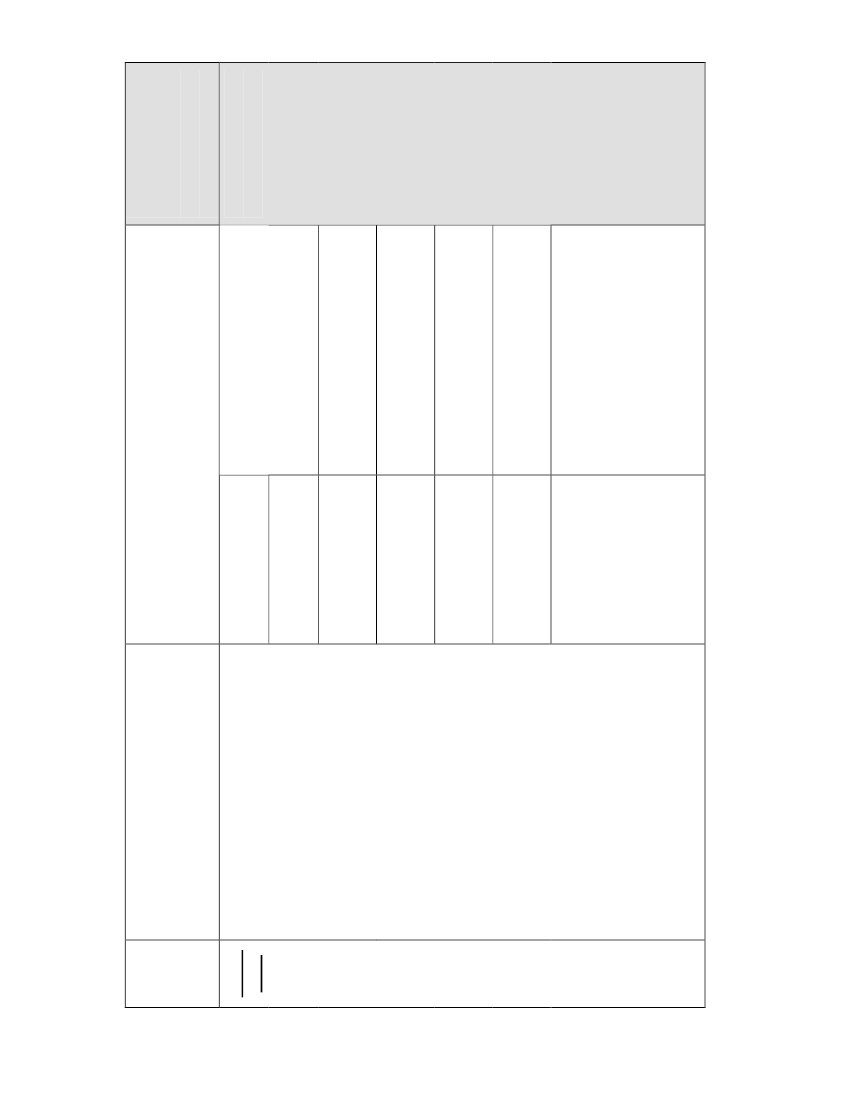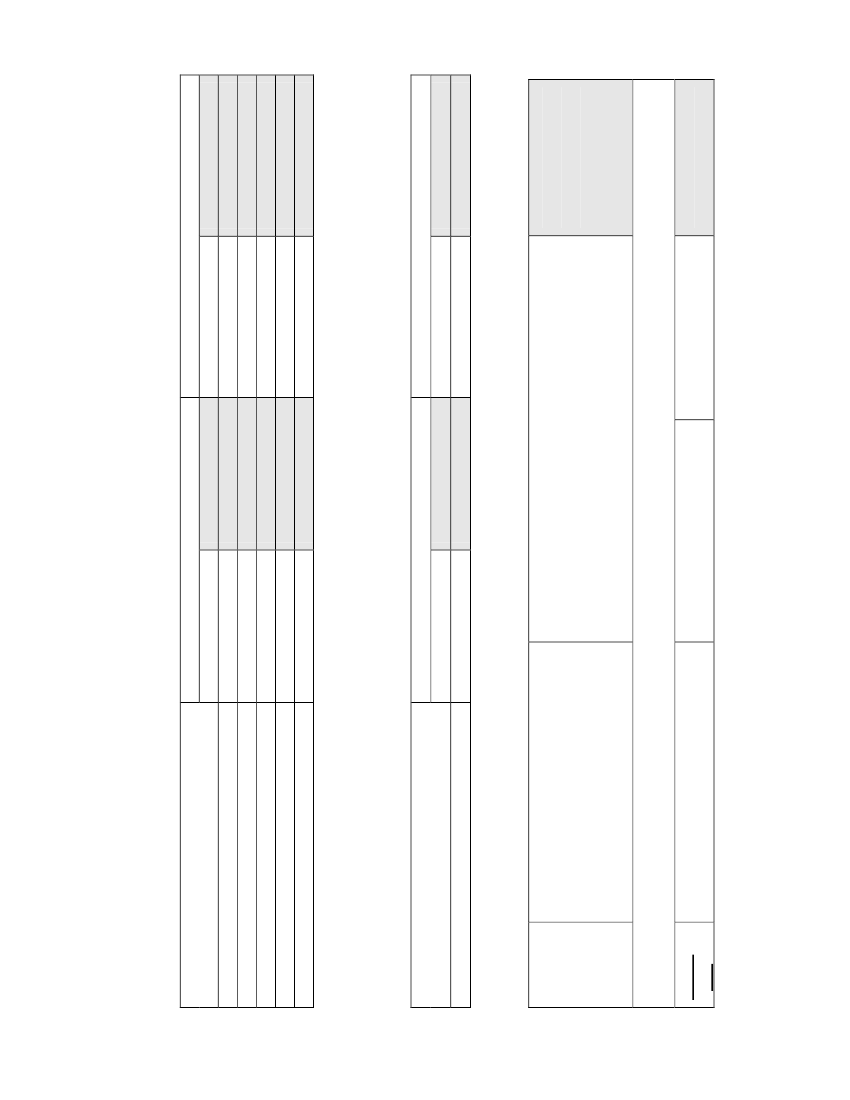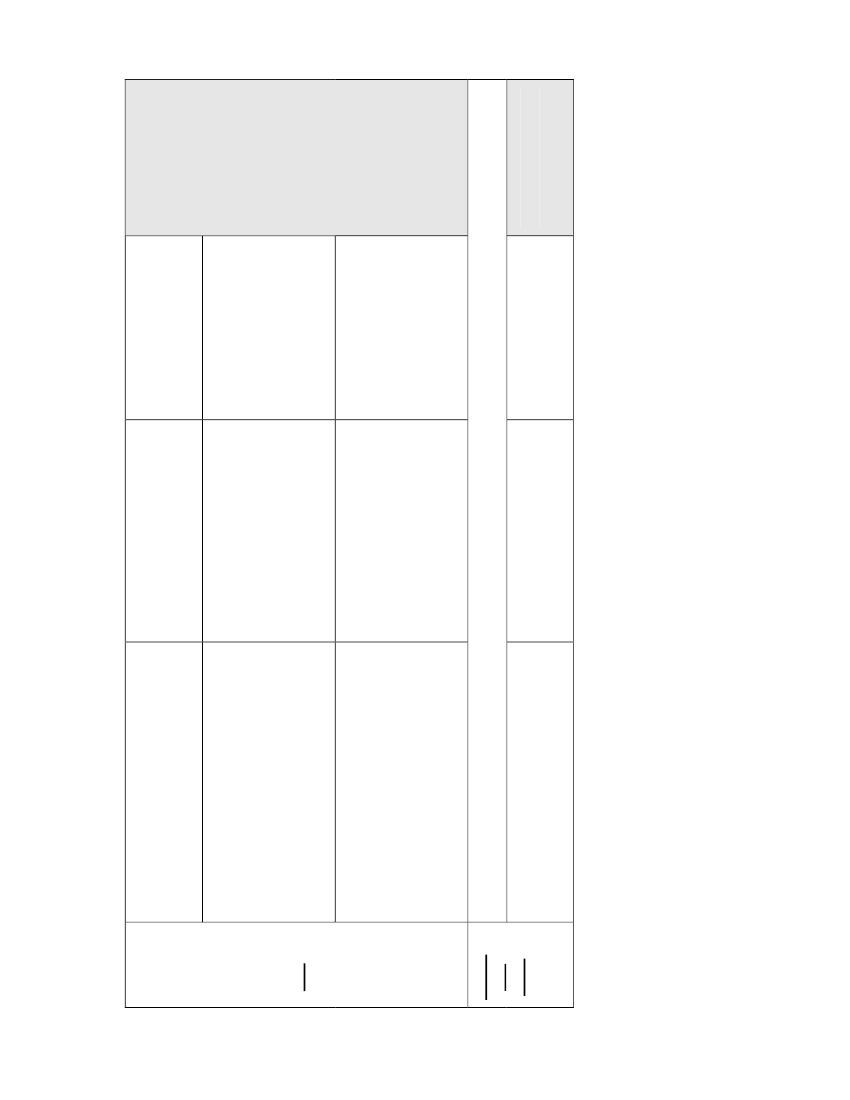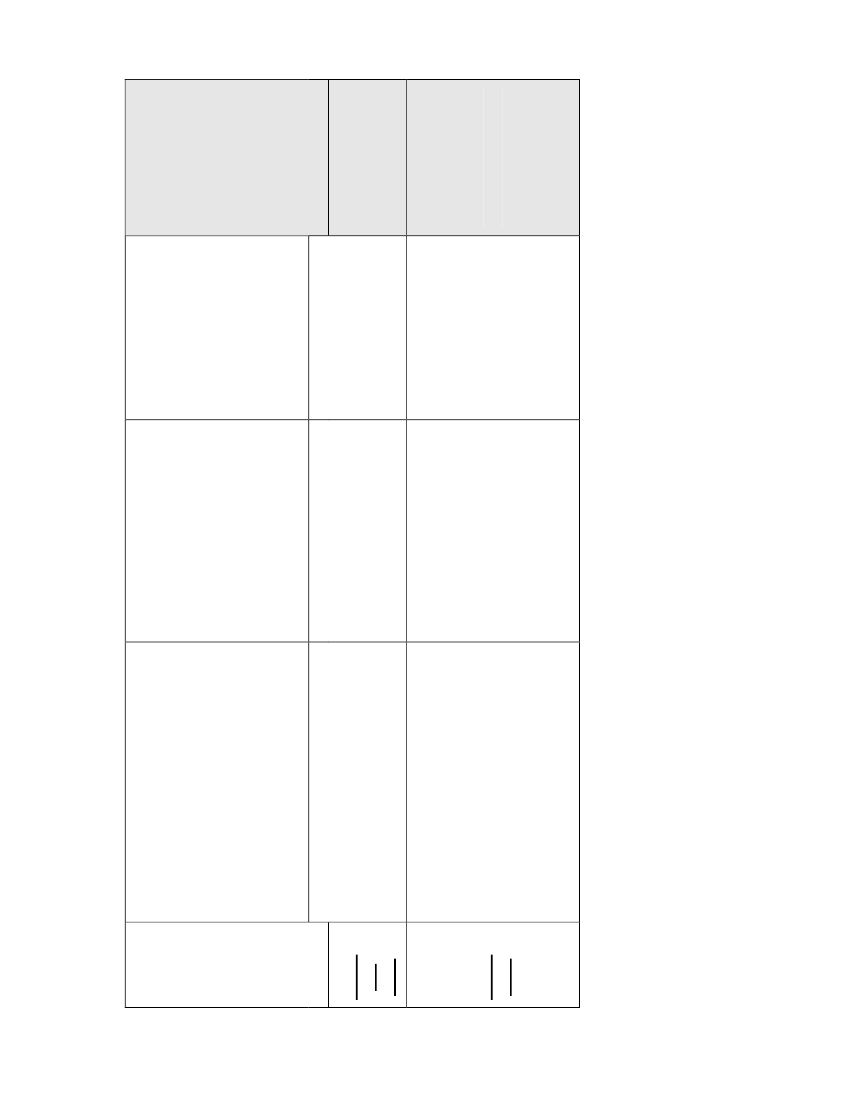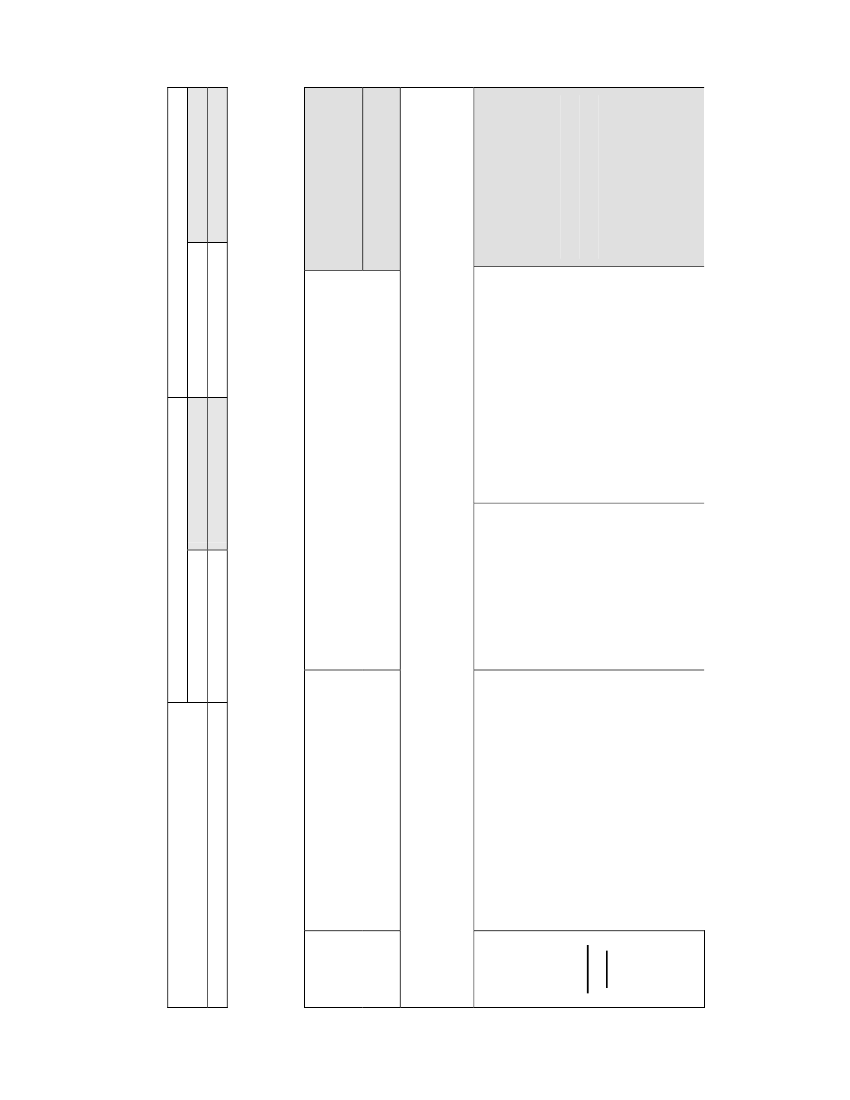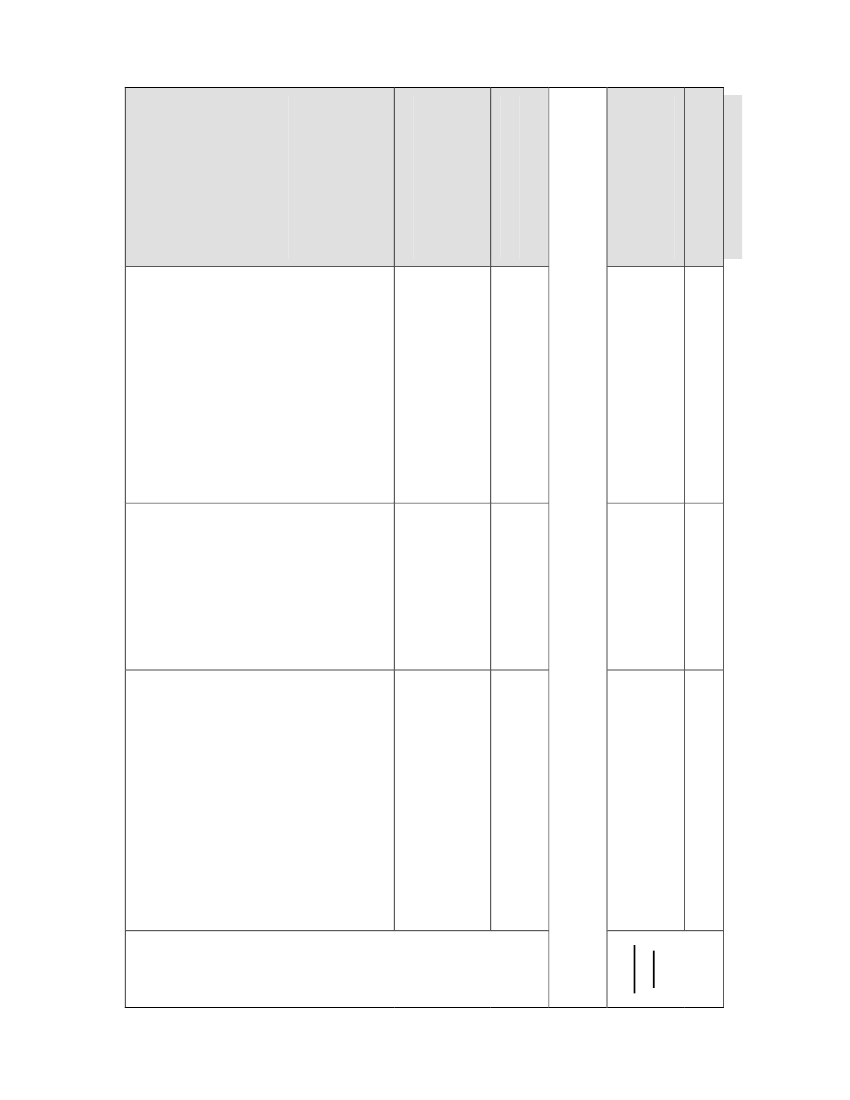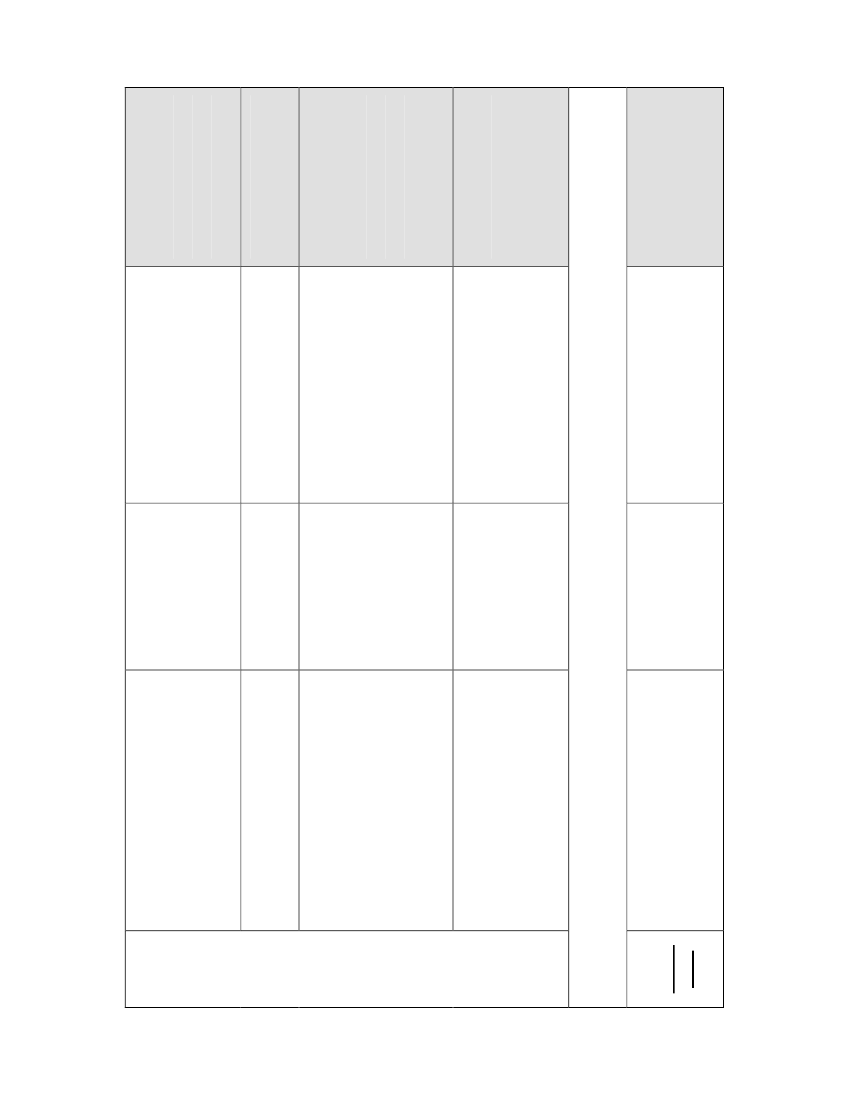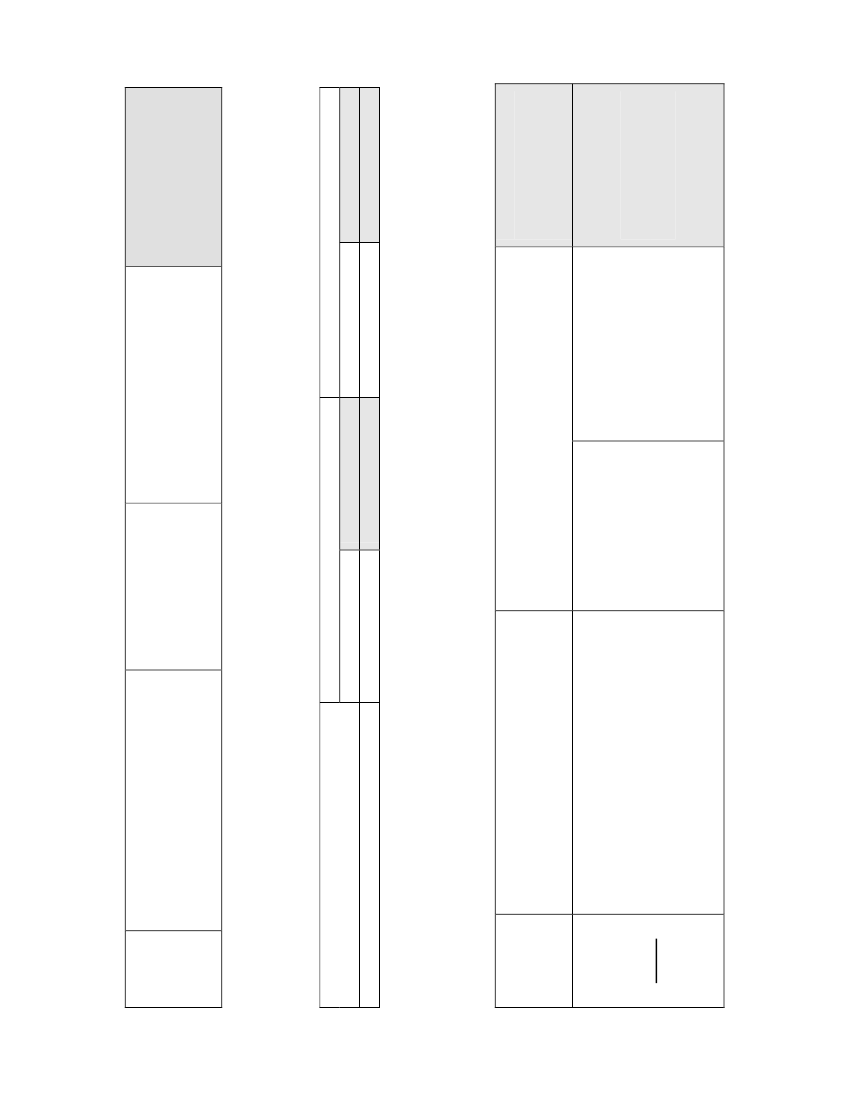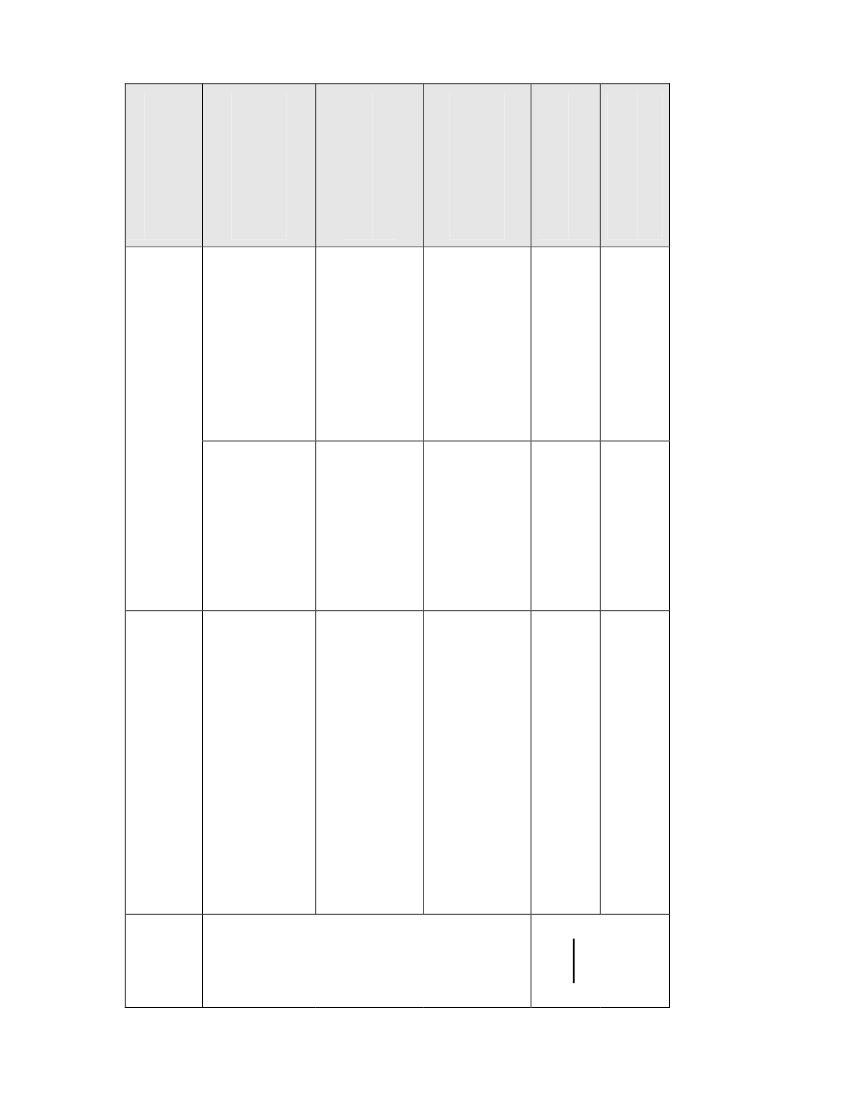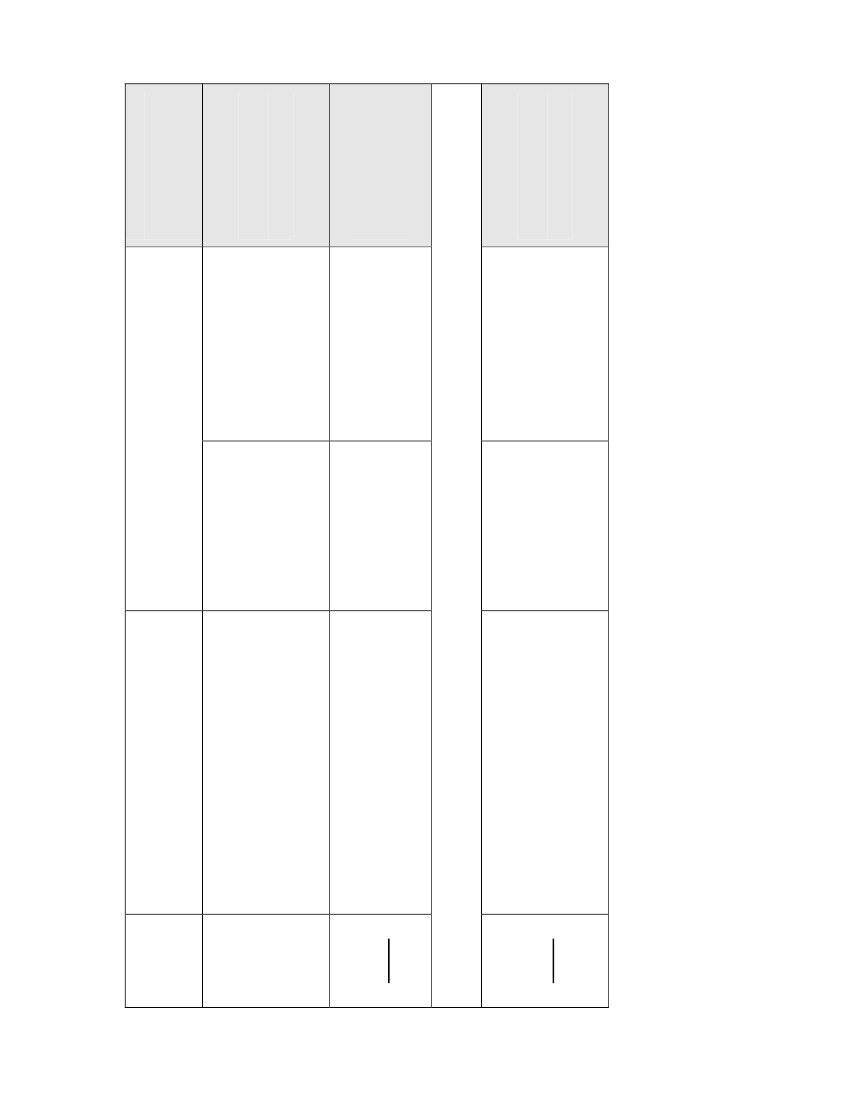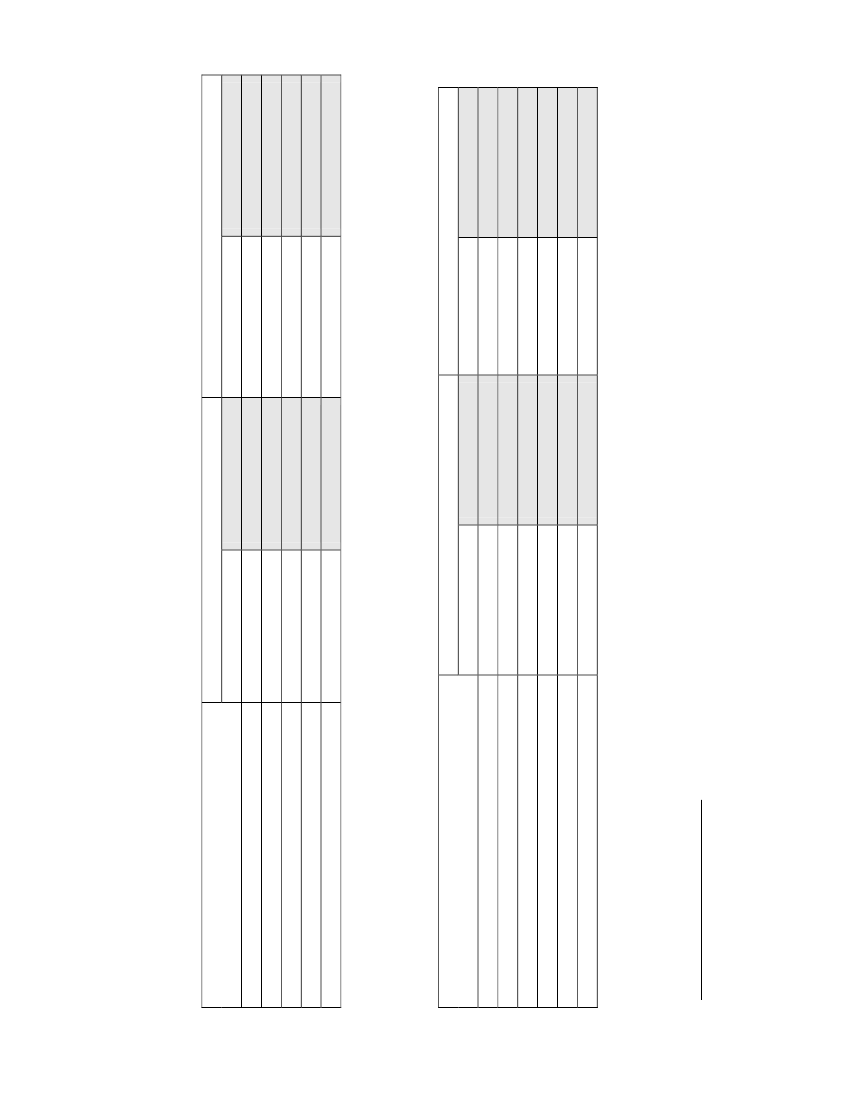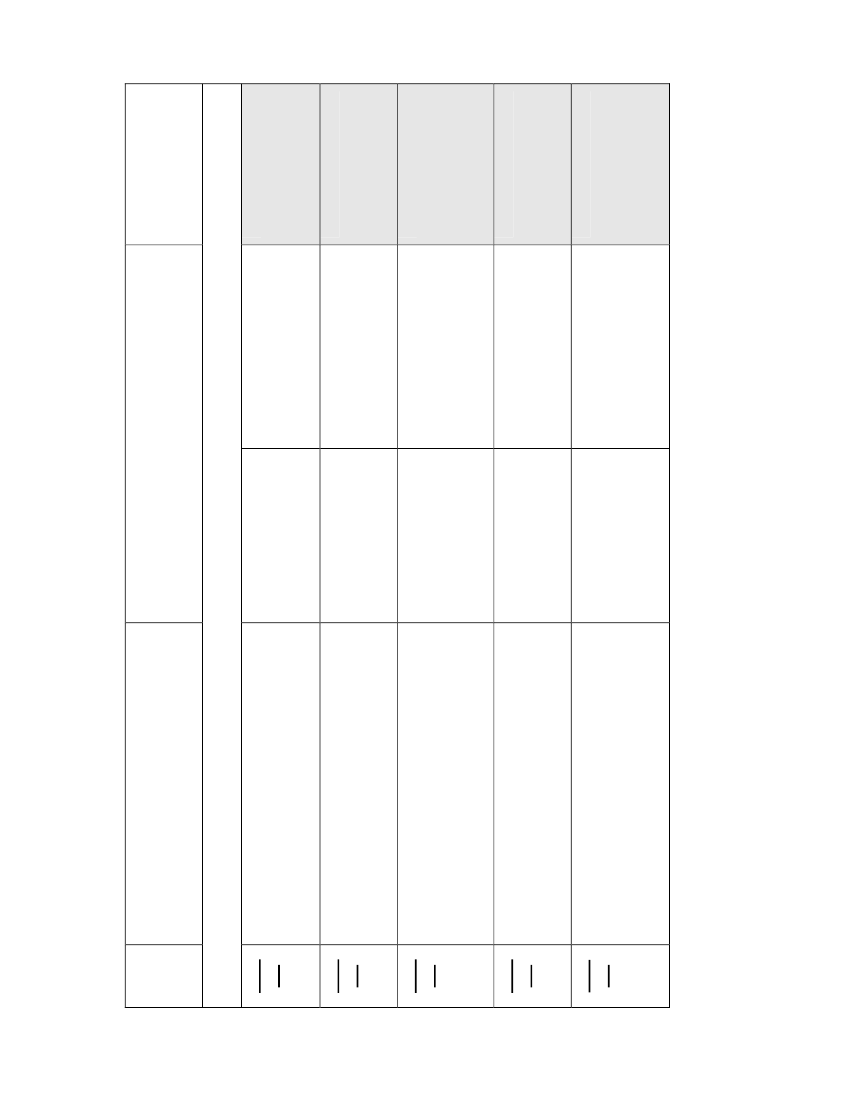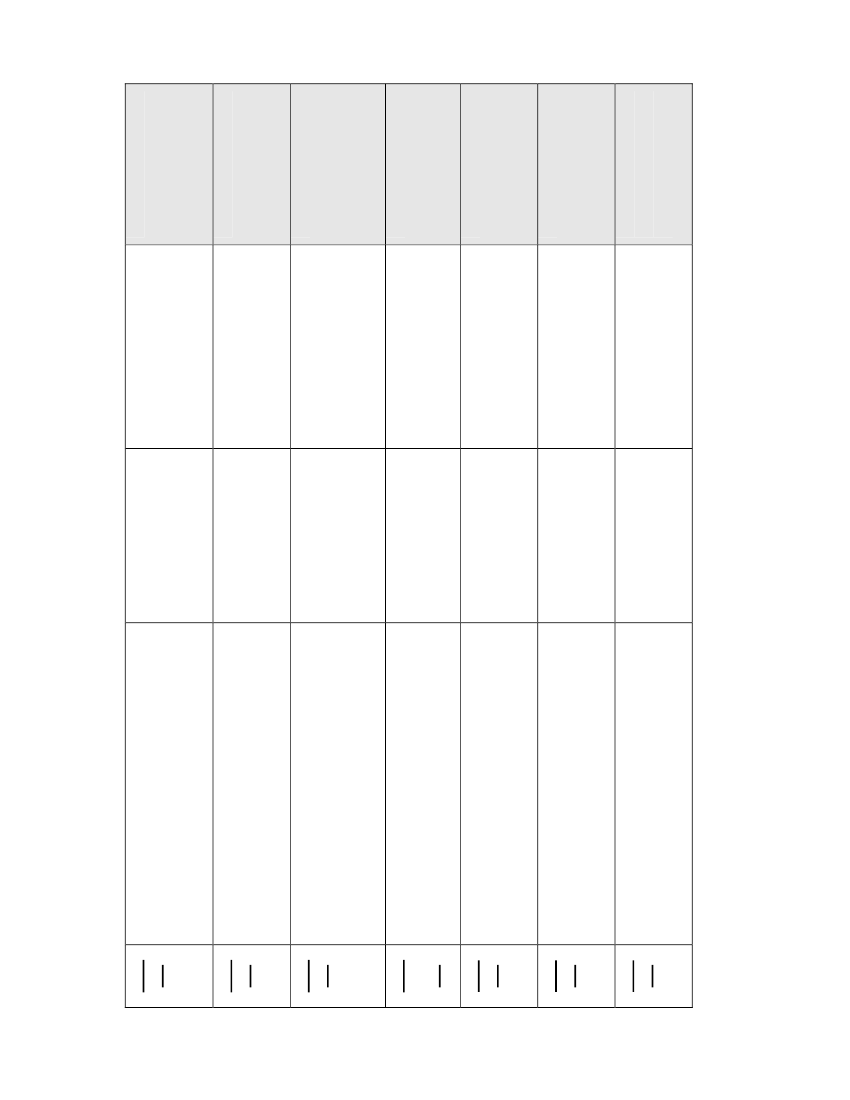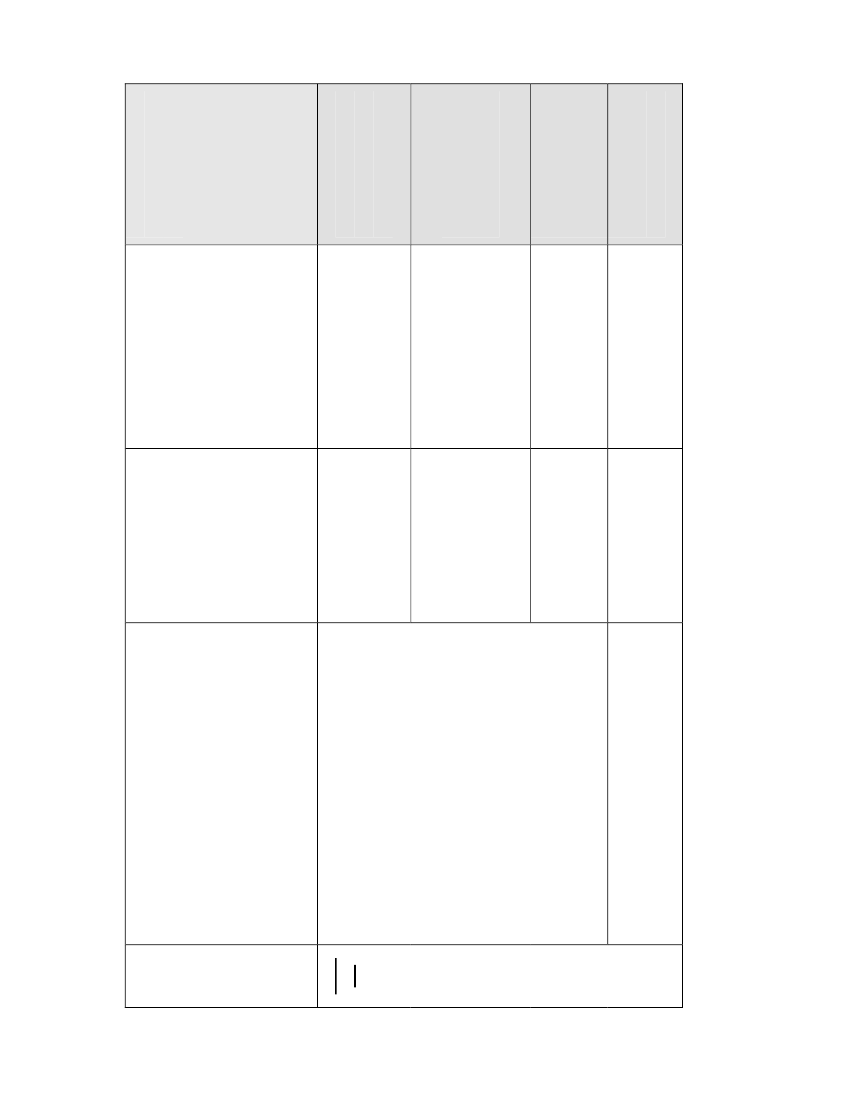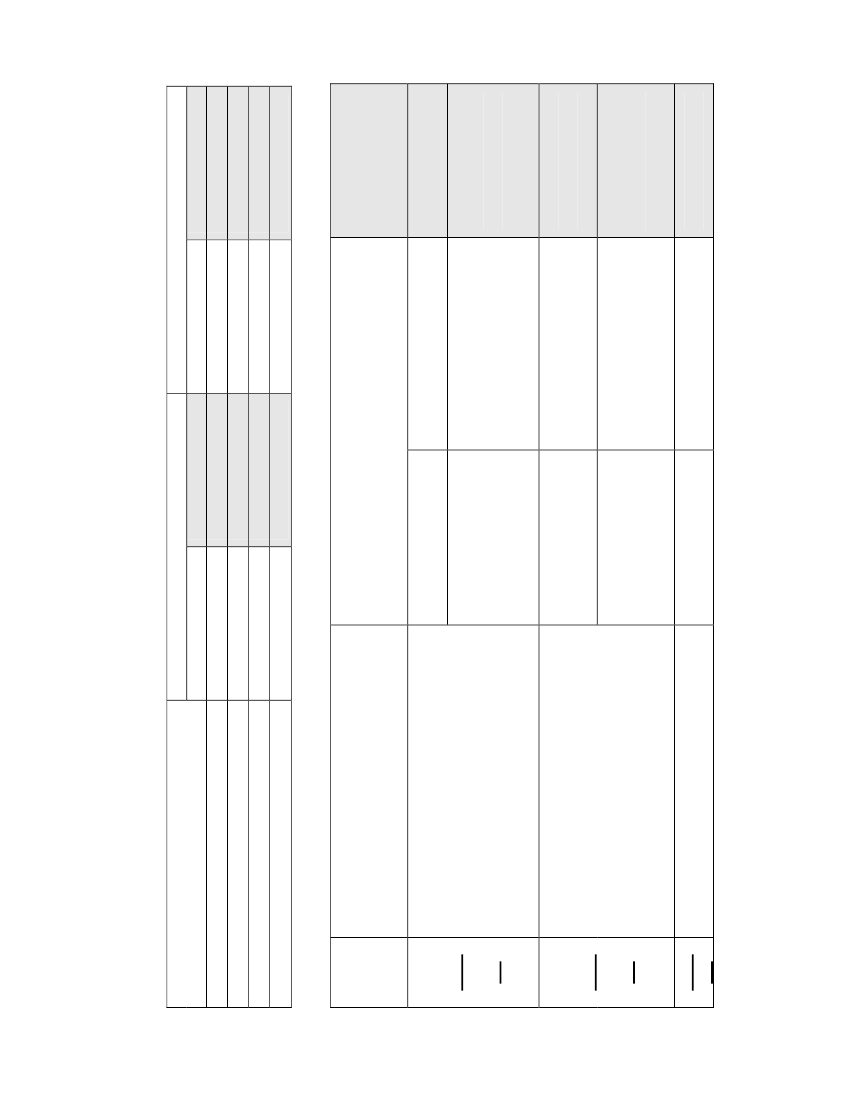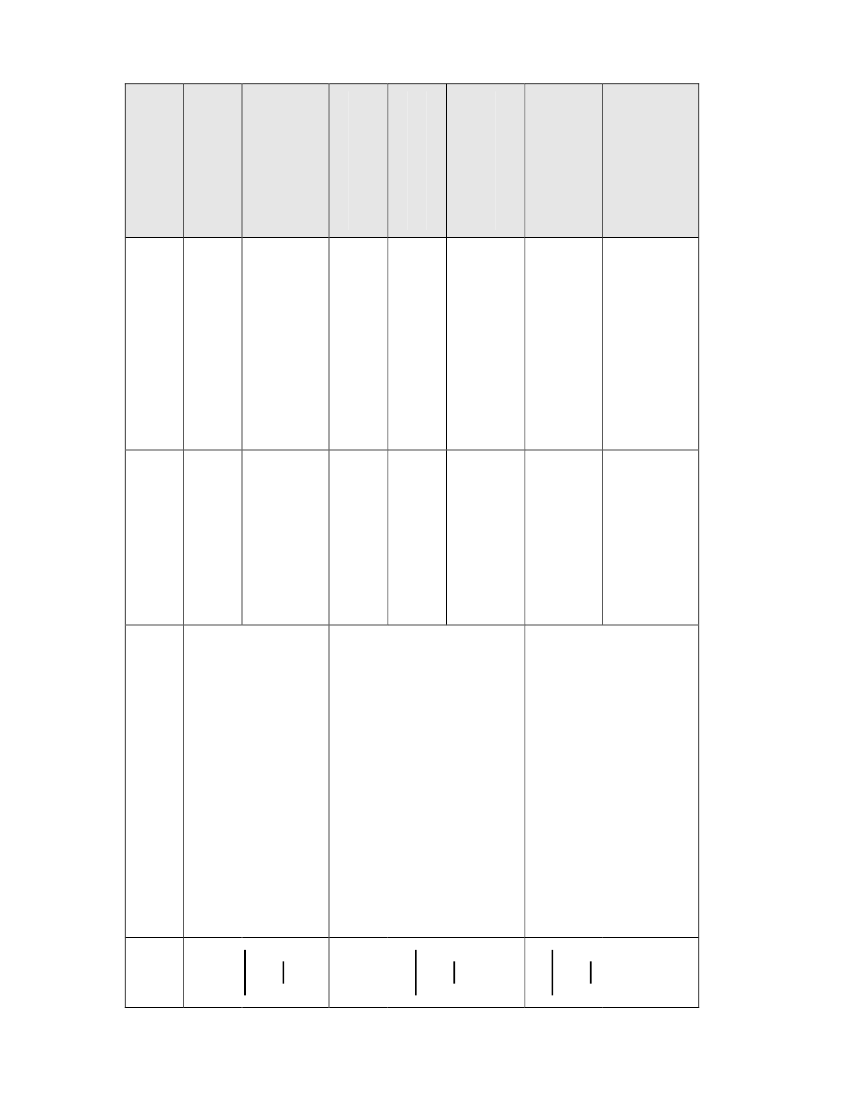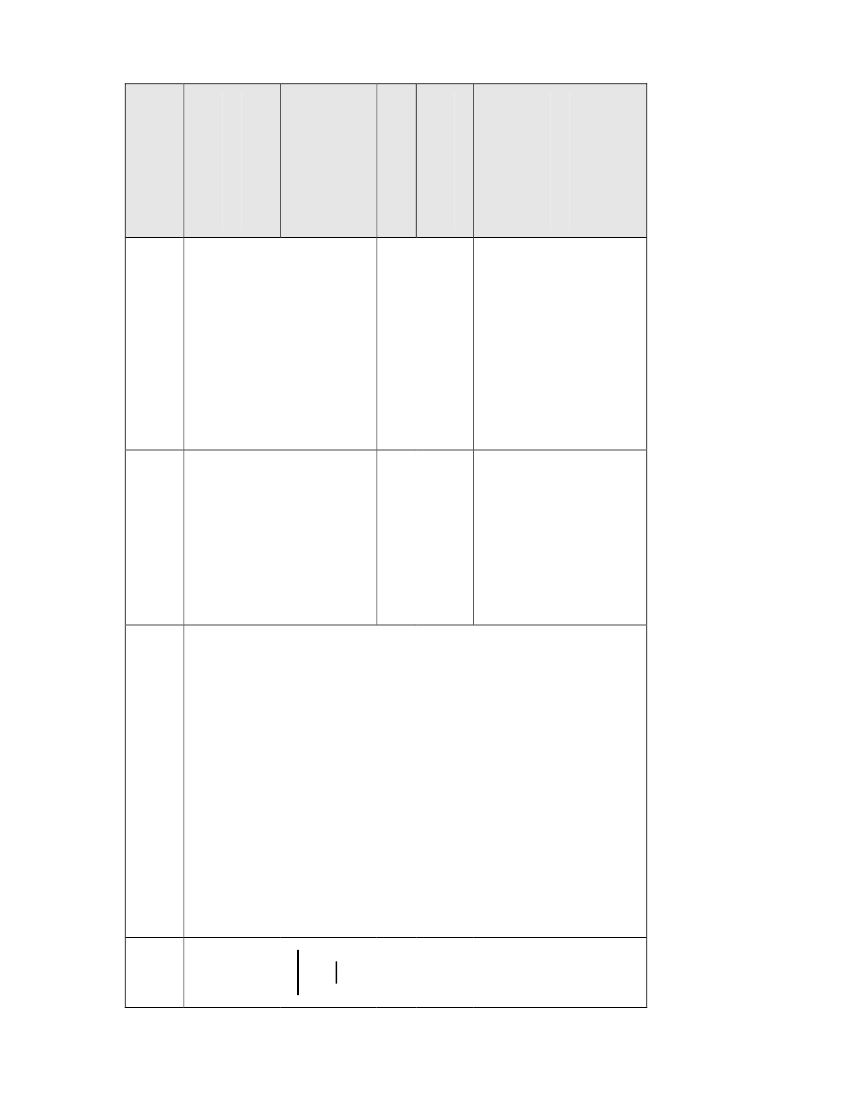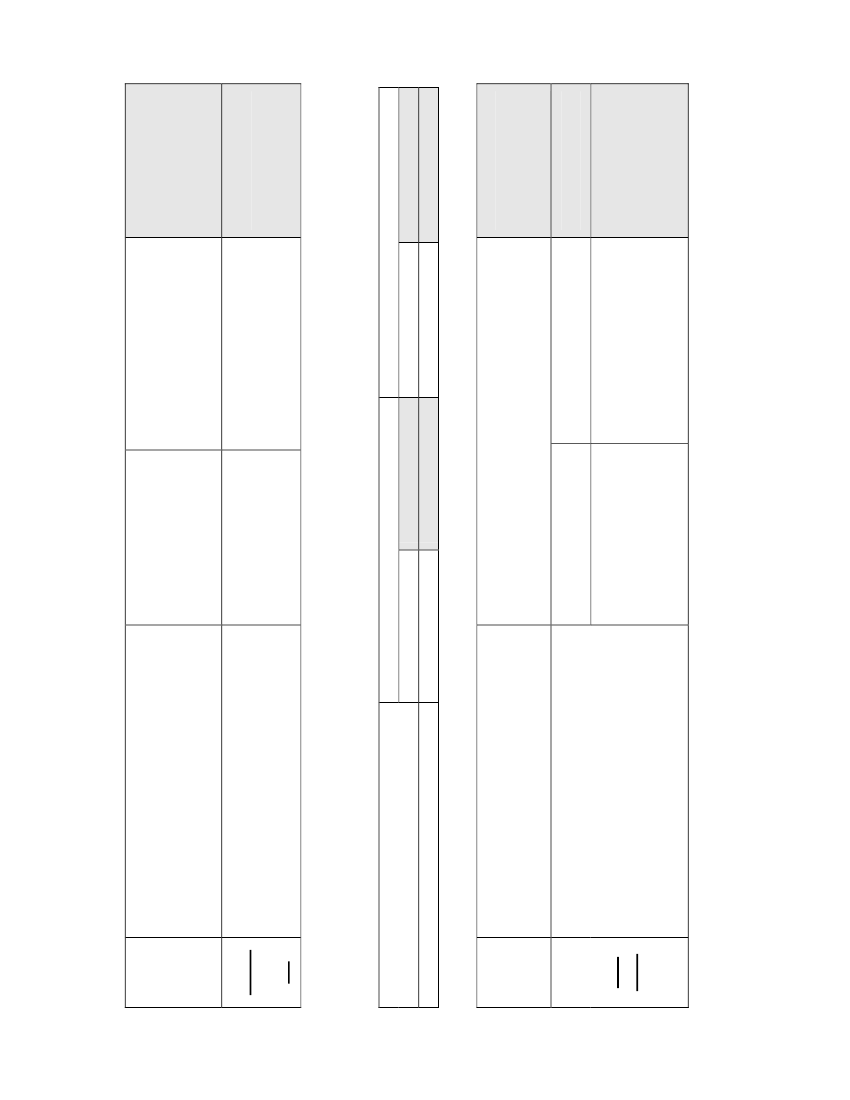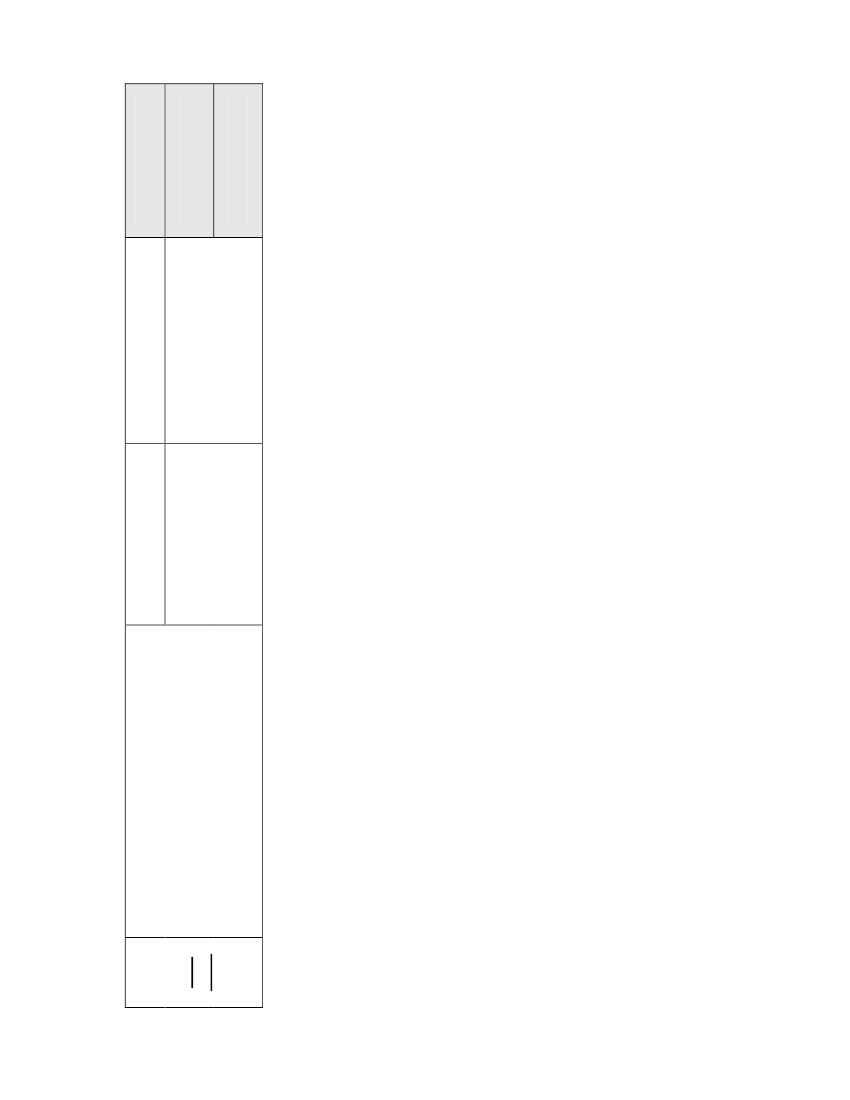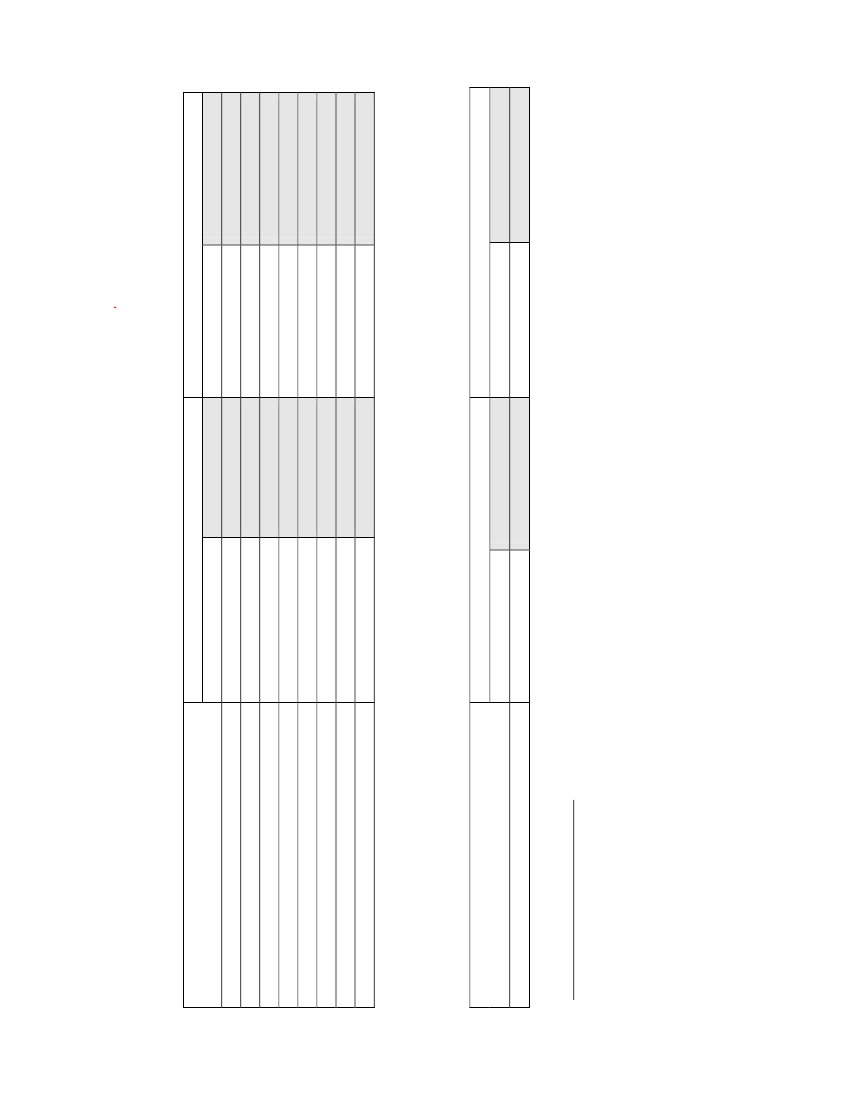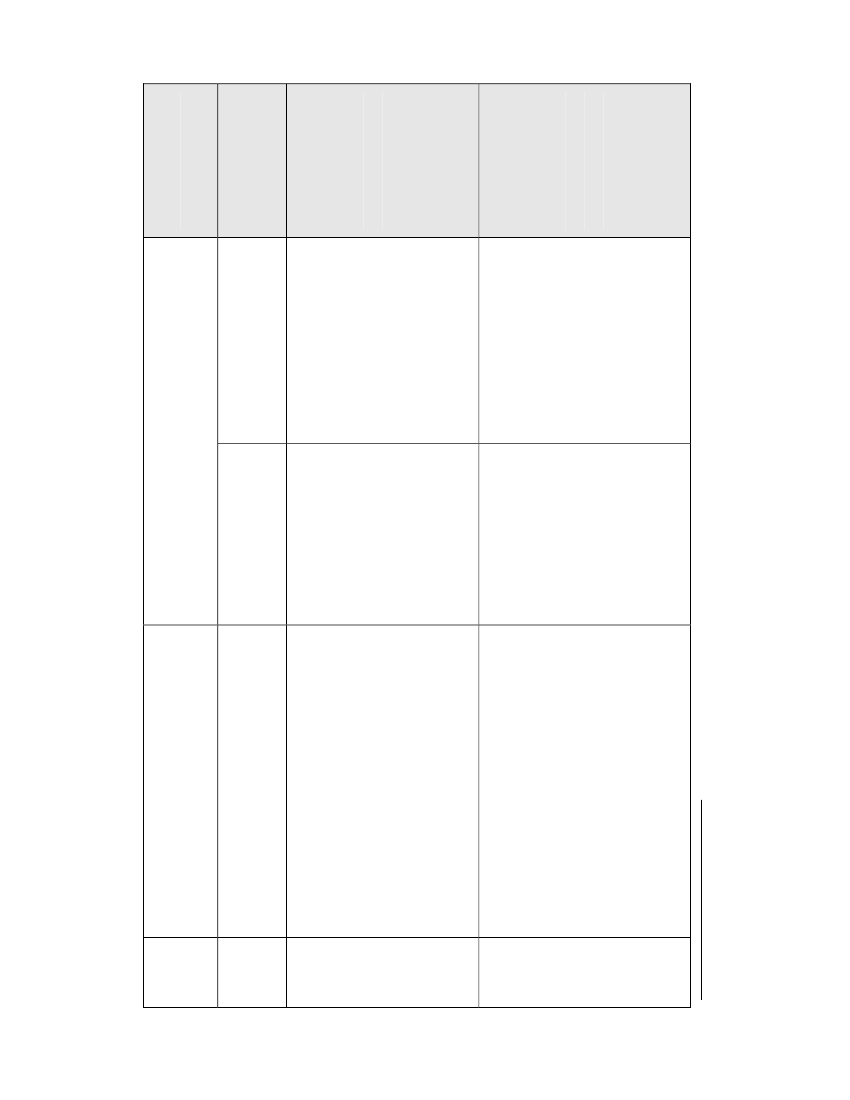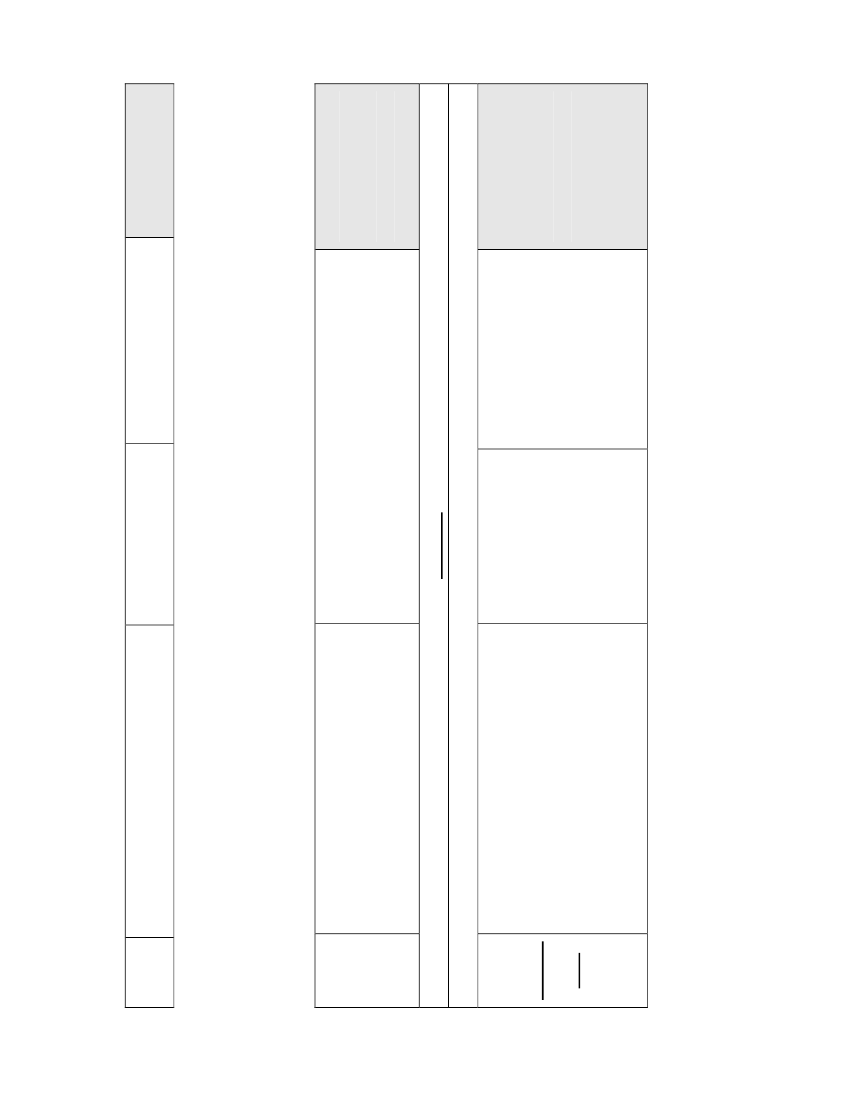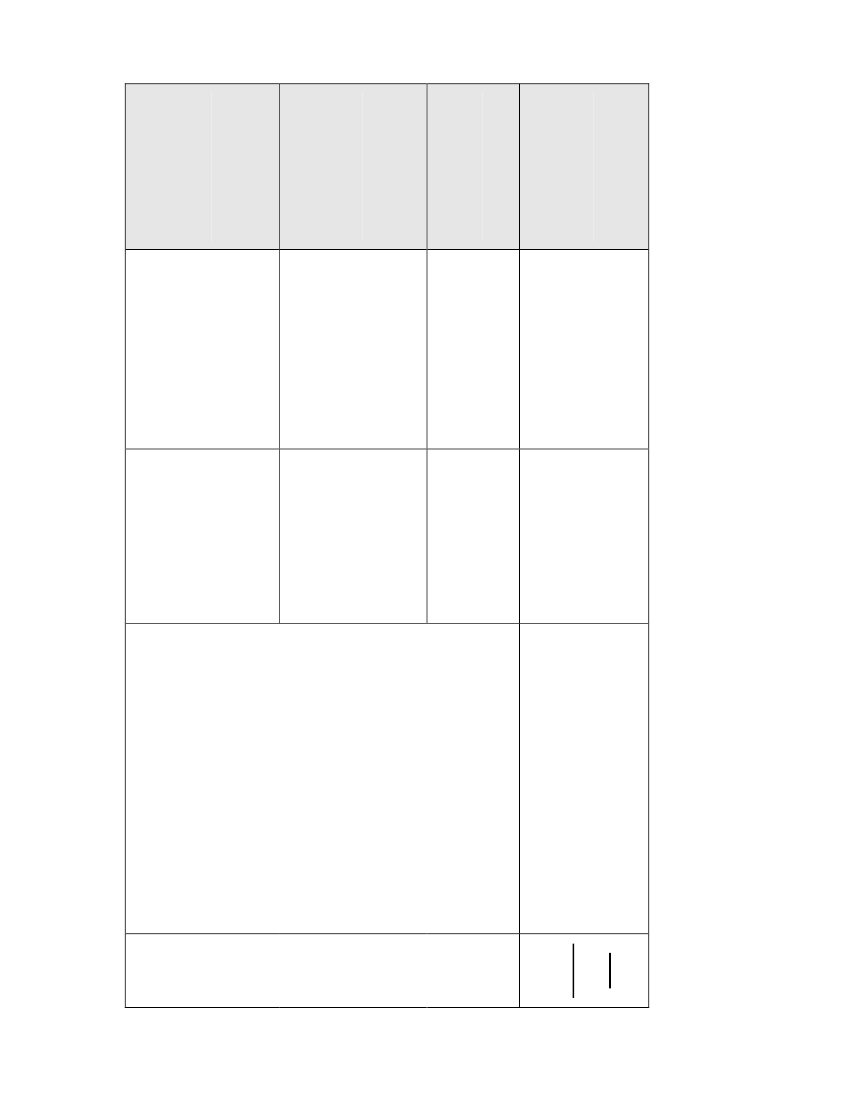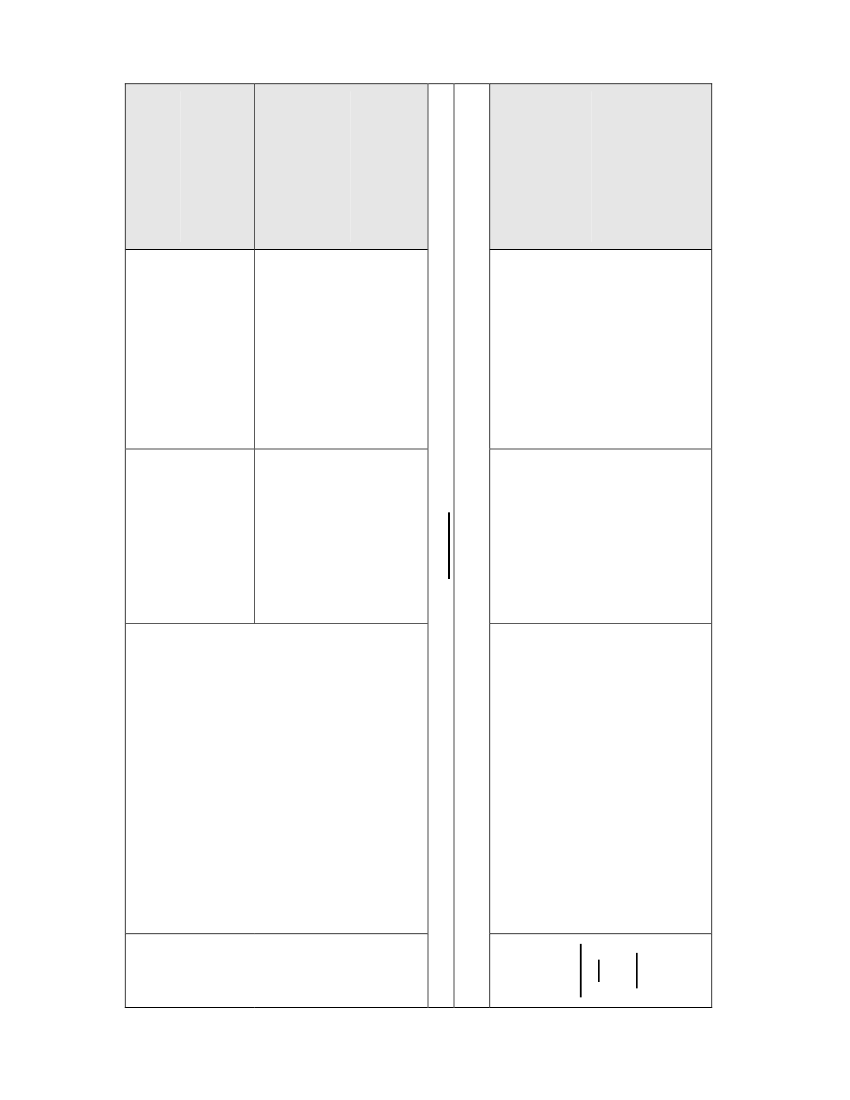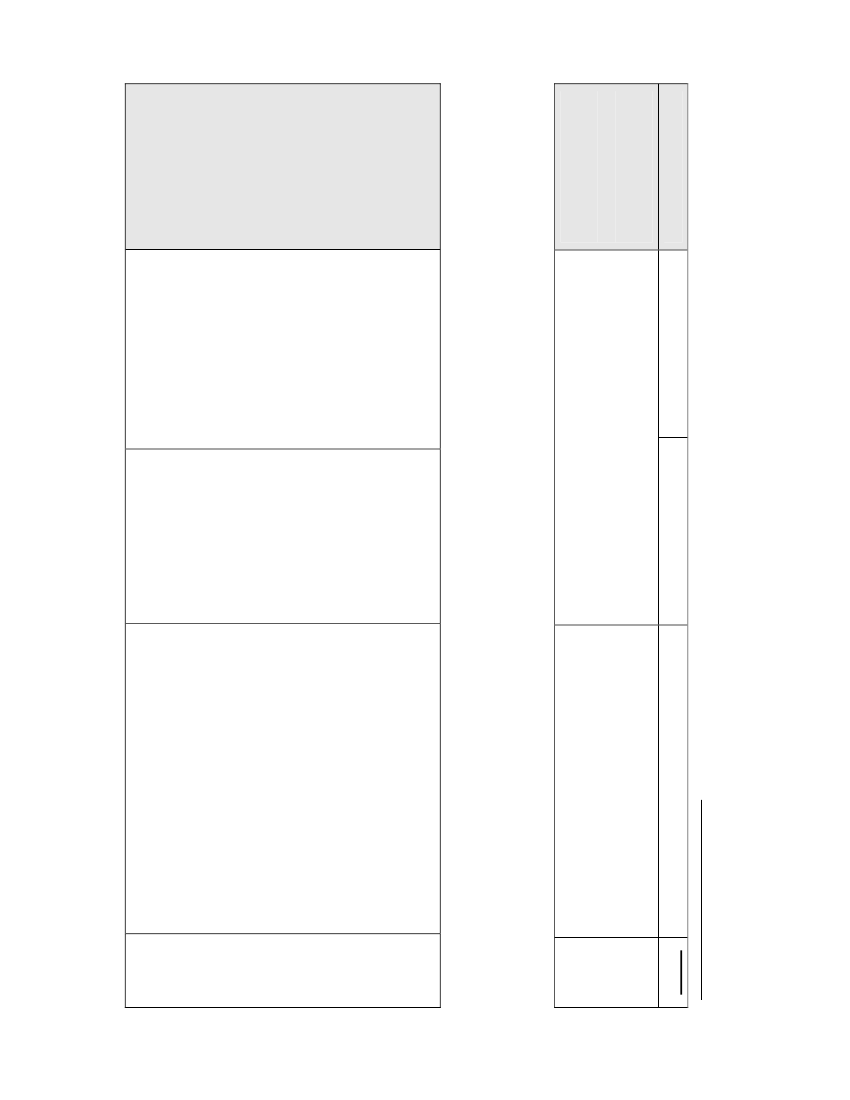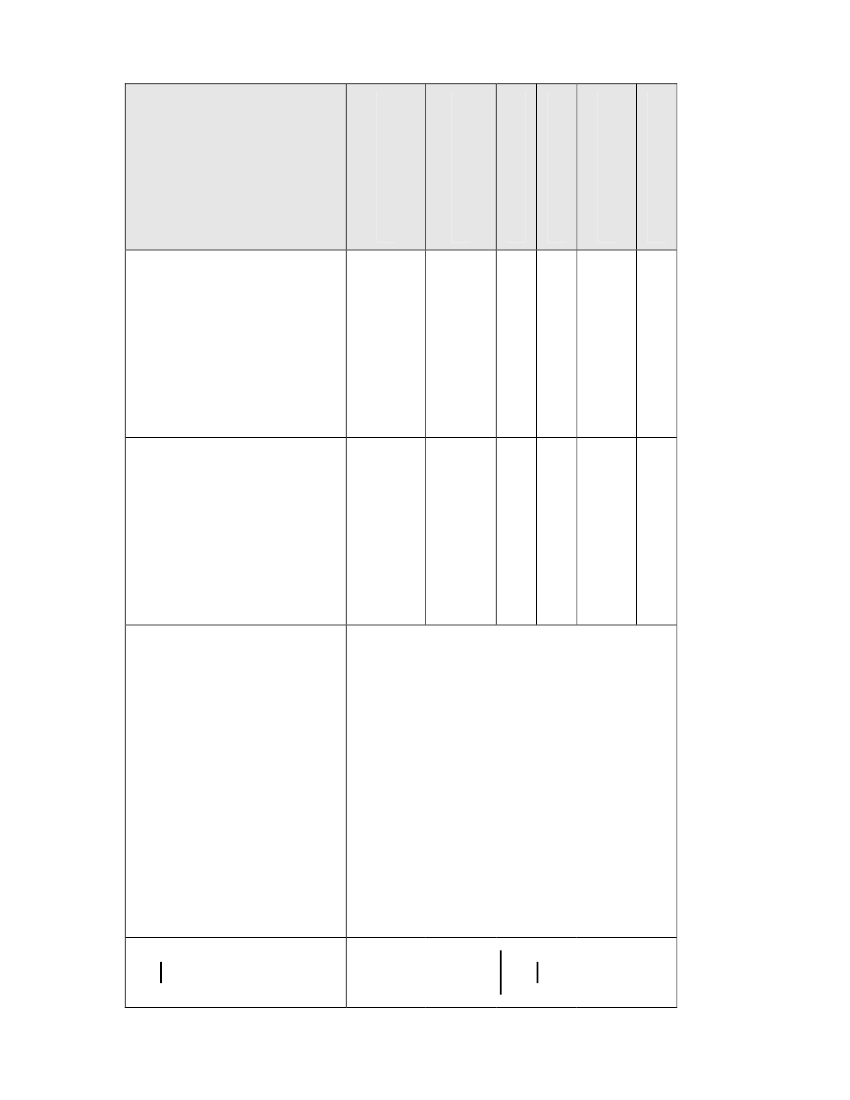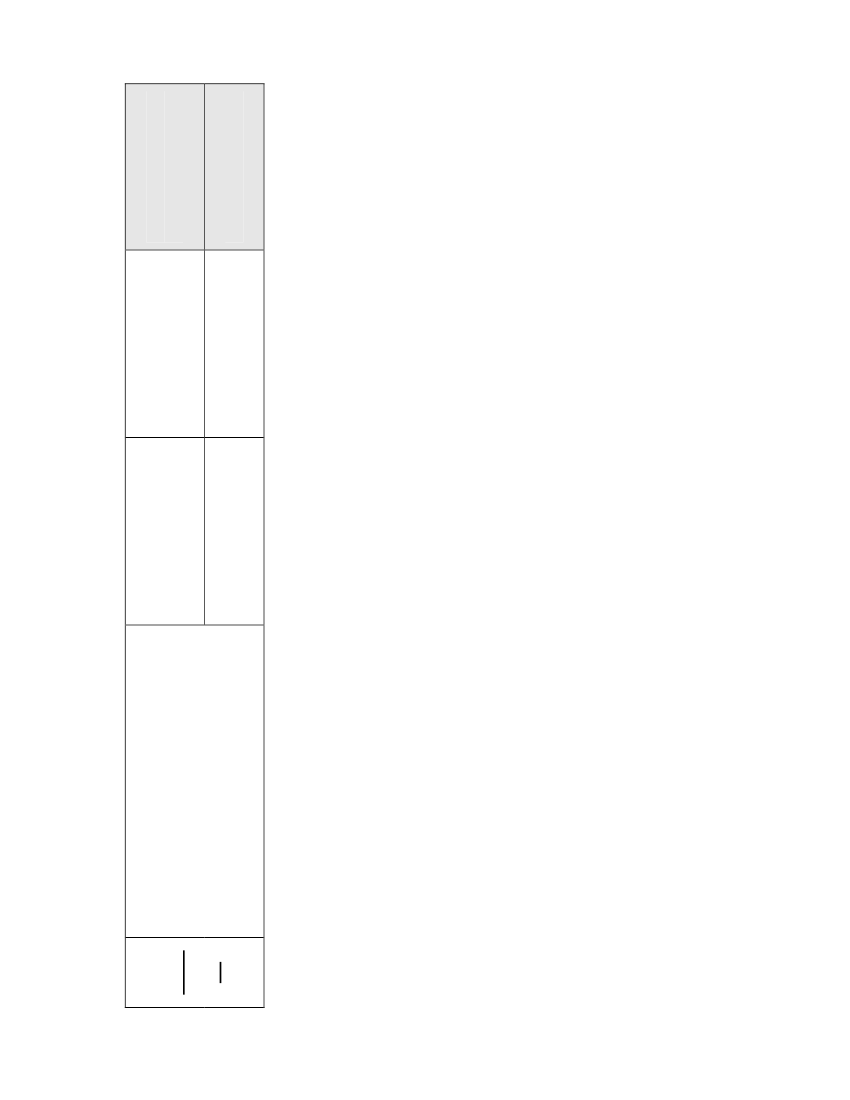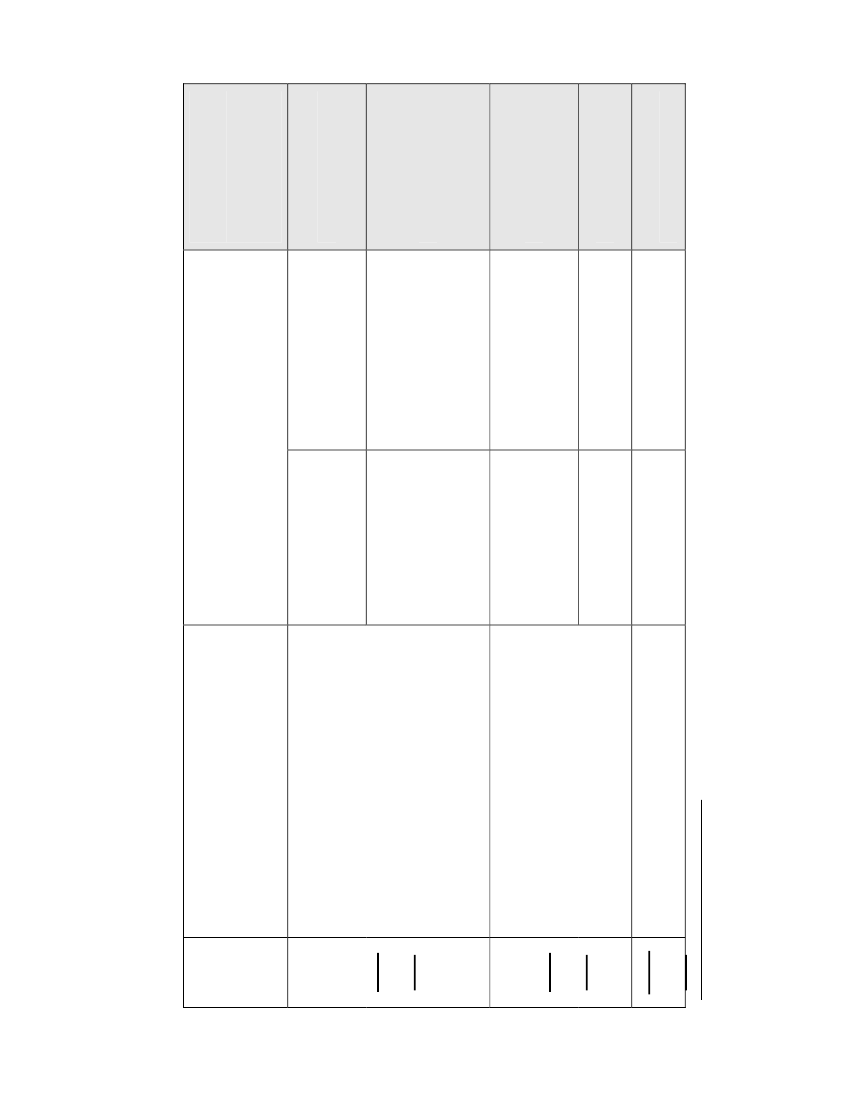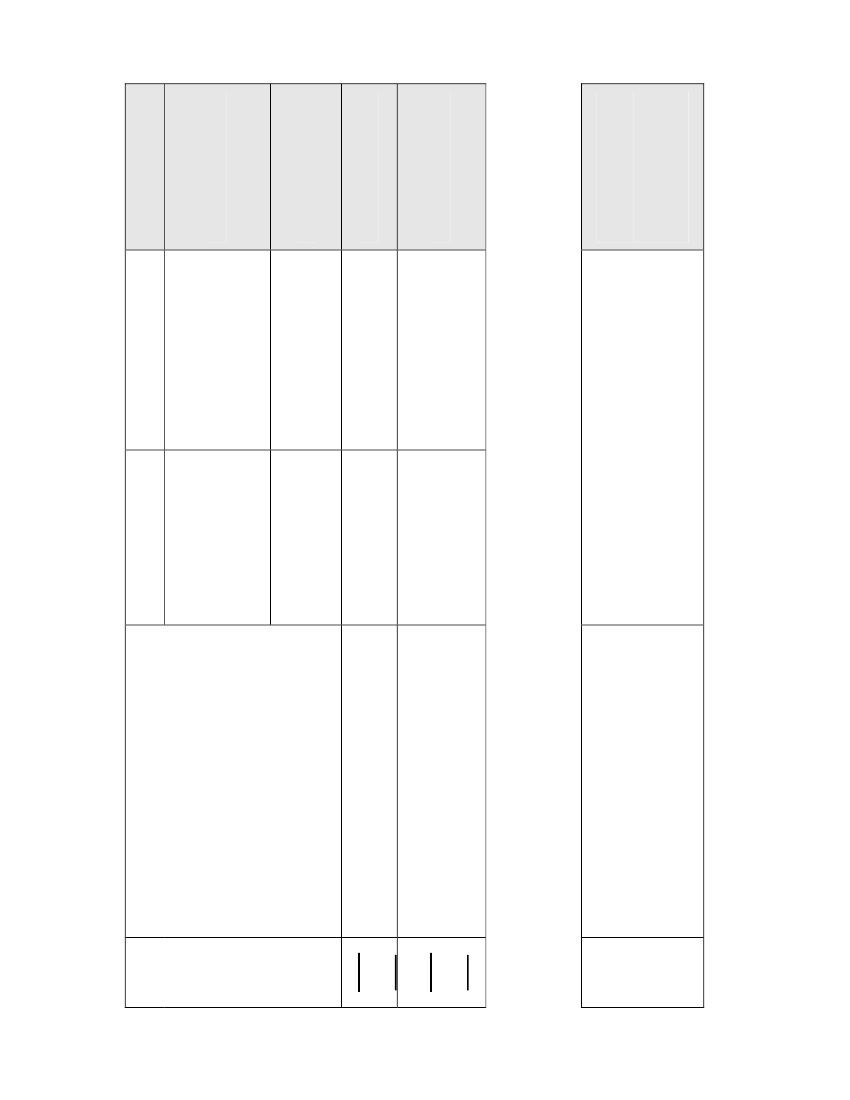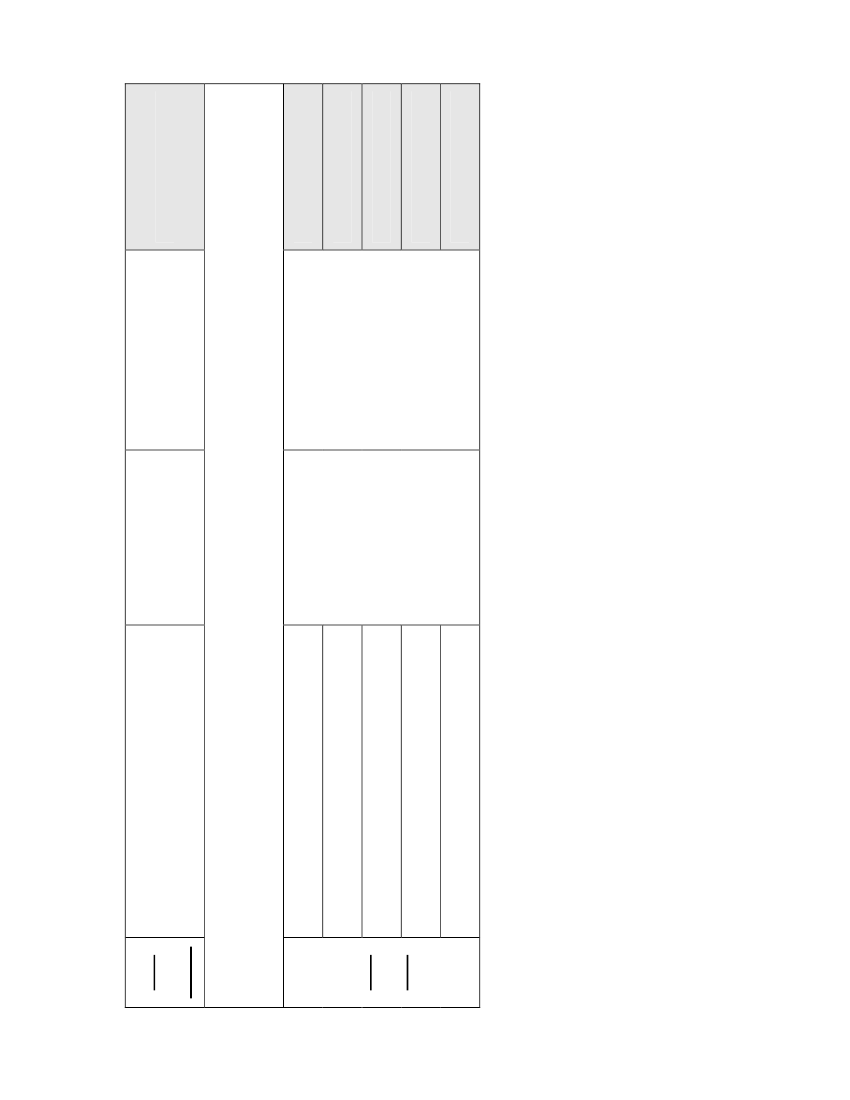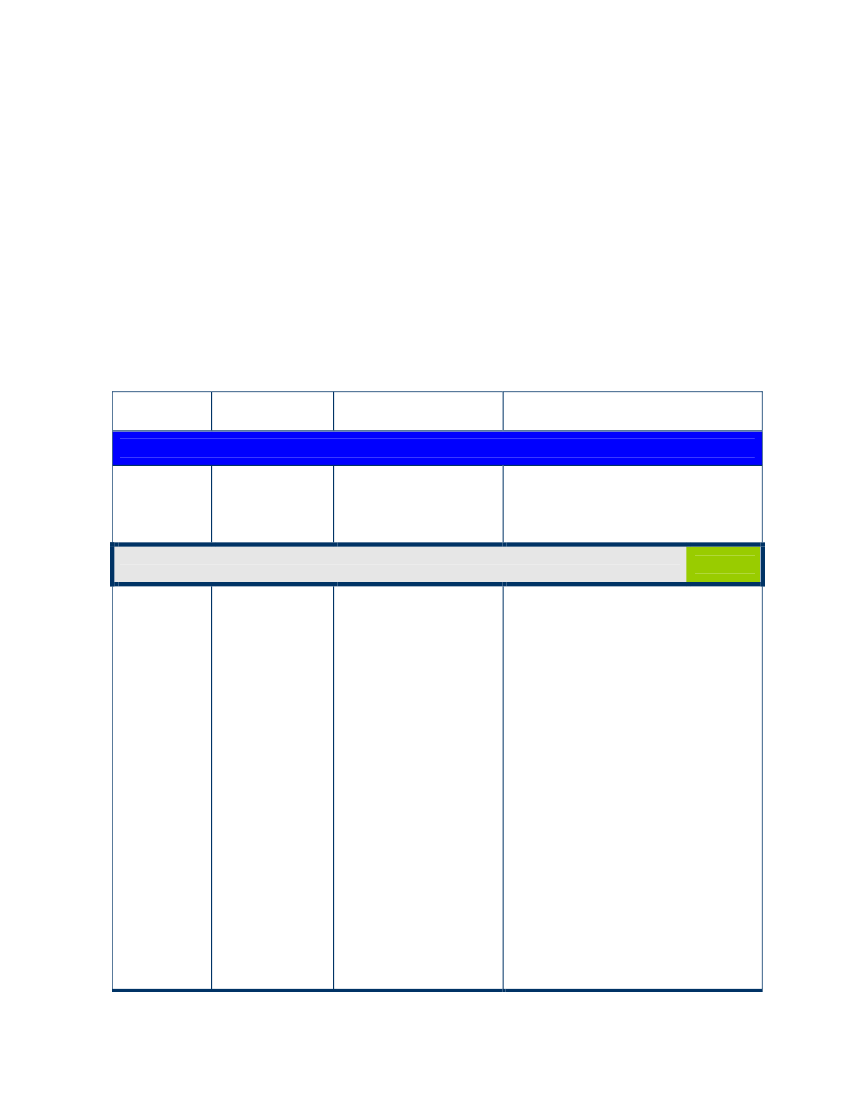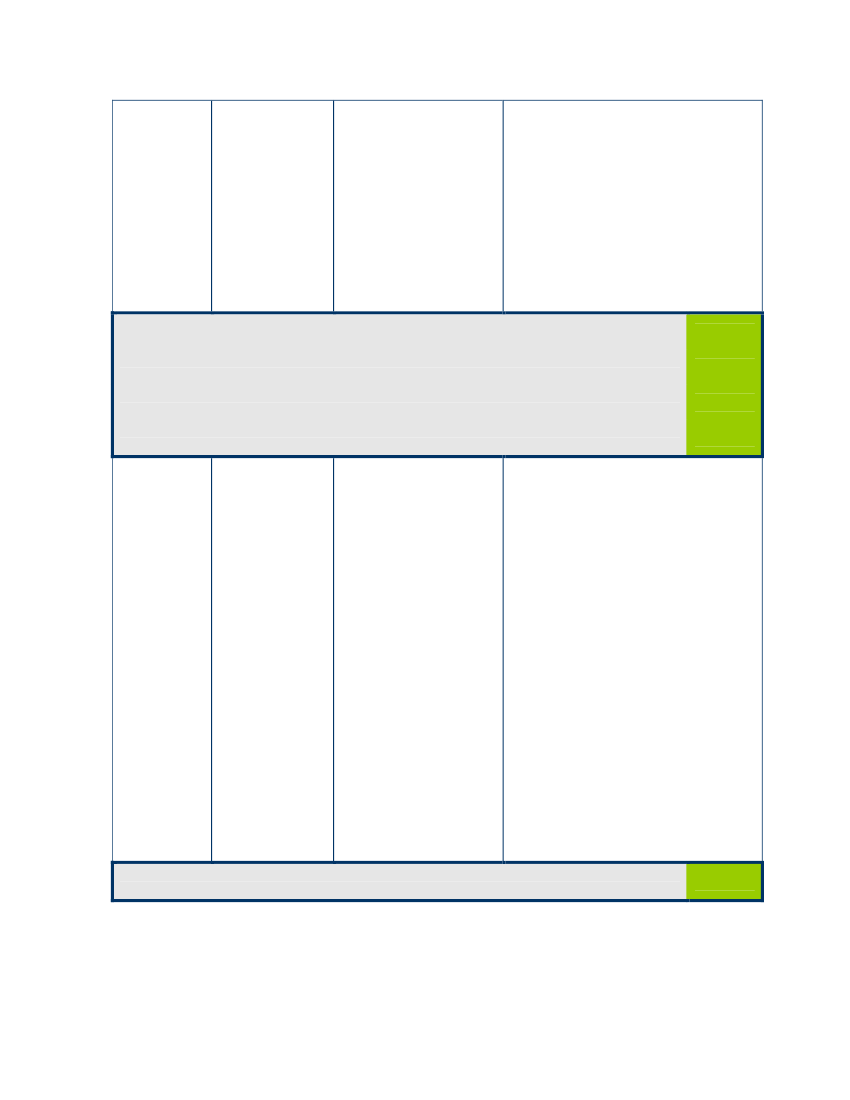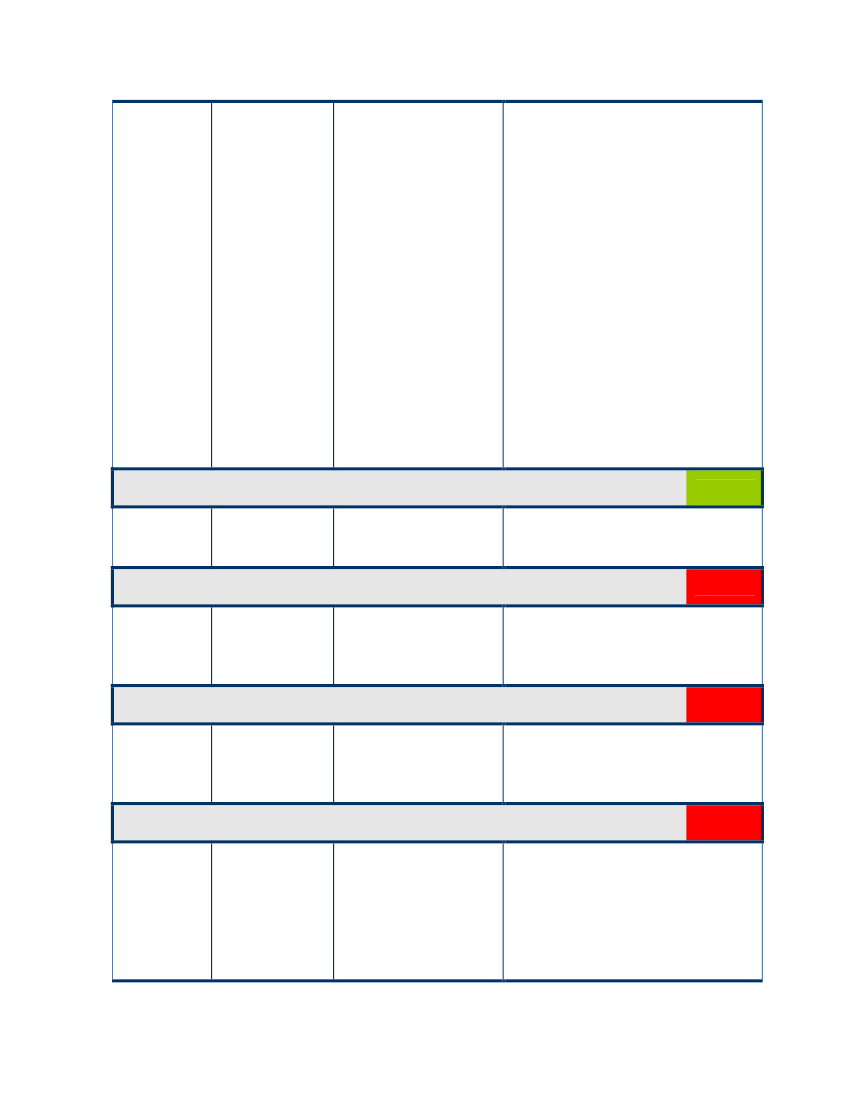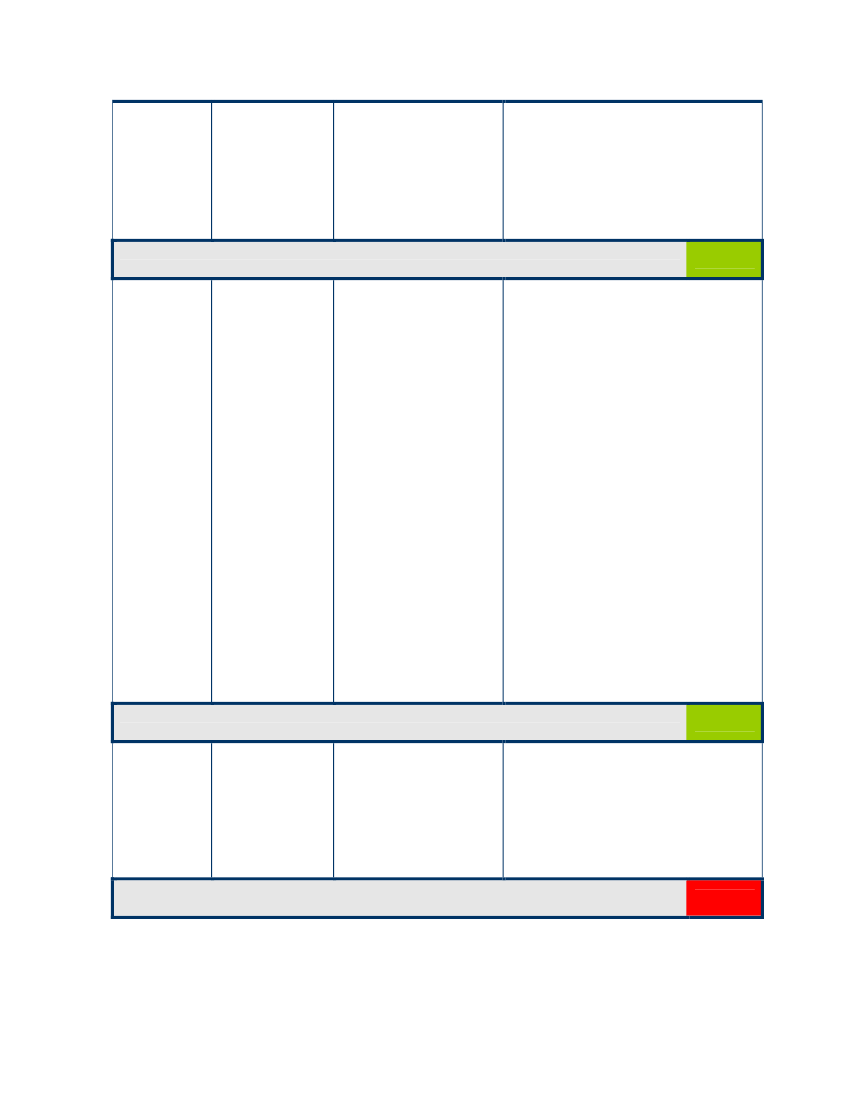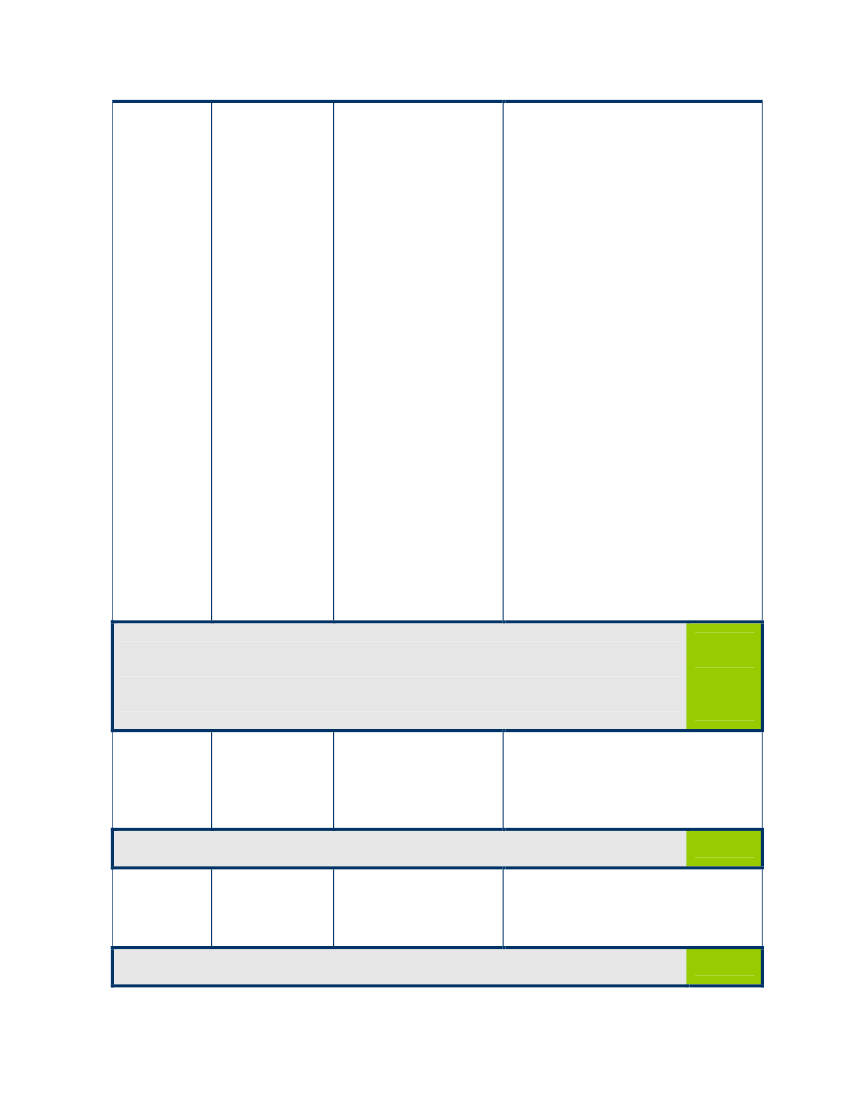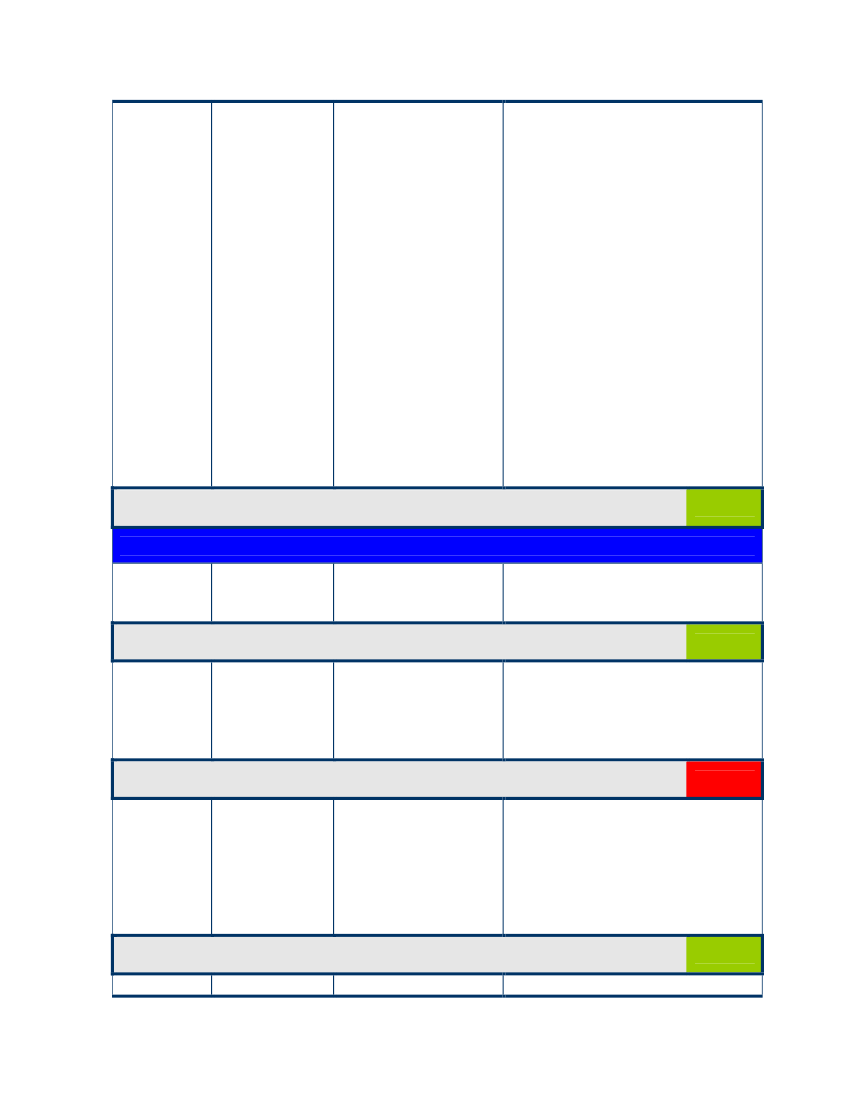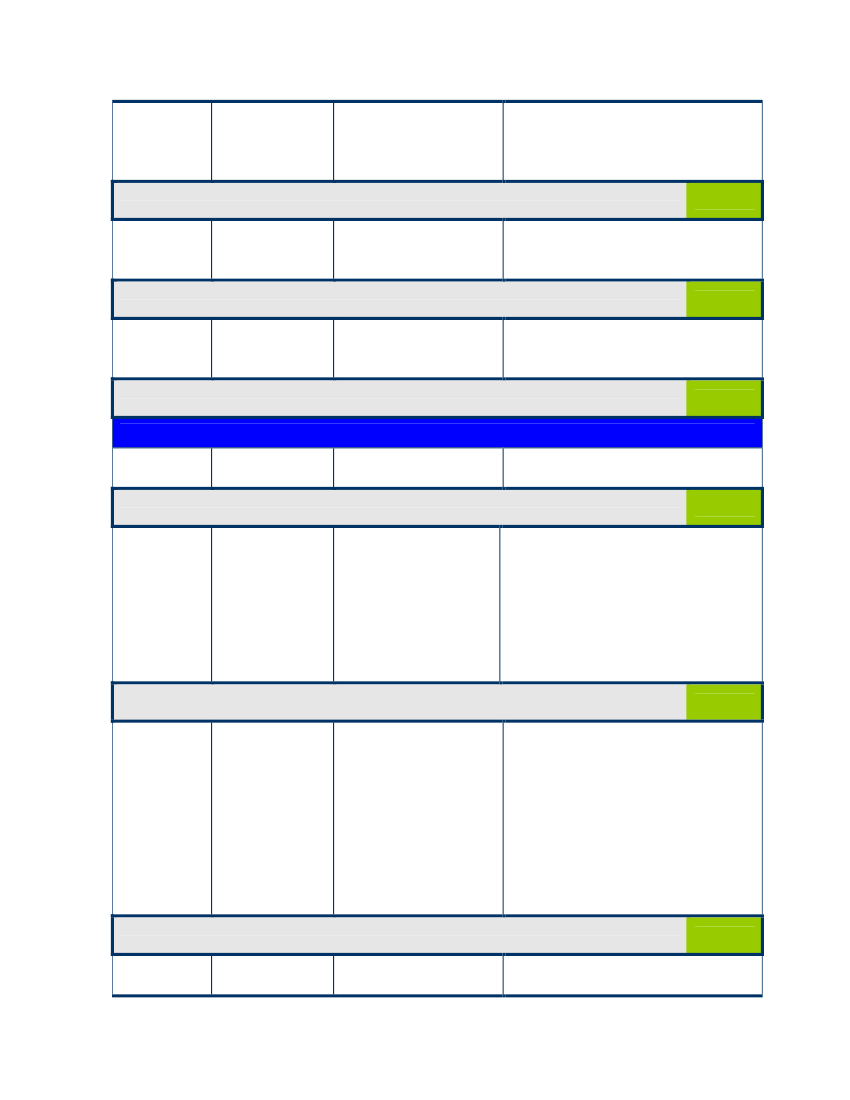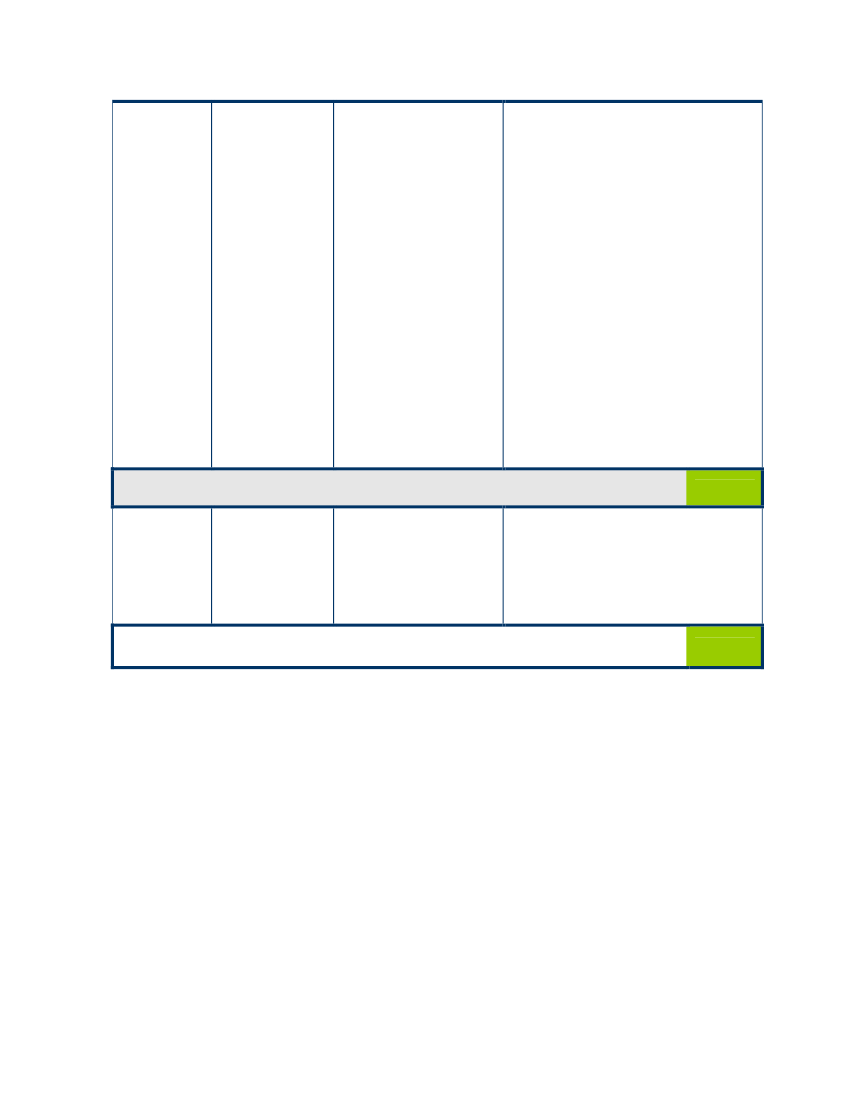Udvalget for Udlændinge- og Integrationspolitik 2010-11 (1. samling)
UUI Alm.del
Offentligt
European Agency for the Management of Operational Cooperation at the External Bordersof the Member States of the European Union
Programme of Work 2011
European Agency for the Management of Operational Cooperation at the External Bordersof the Member States of the European Union
Table of Contents
Executive Summary ............................................................51. General Part ...................................................................141.1. Introduction ................................................................................................ 141.2. Mission ....................................................................................................... 151.3. Vision ......................................................................................................... 151.4. Strategy...................................................................................................... 161.5. Approach taken .......................................................................................... 201.5.1. Goal oriented approach ....................................................................... 201.5.2. Identification of Programmes, Projects, Products and Services........... 201.5.3. Programmes to enable multi-annual planning...................................... 211.6. Environmental Scanning ............................................................................ 221.6.1. Political or EU-related factors .............................................................. 221.6.2. Economical factors .............................................................................. 251.6.3. Social and political climate................................................................... 261.6.4. Technological developments related to border management .............. 261.7. Outlook for the situation at the external borders in 2011 ............................ 271.7.1. Situation in 2010 .................................................................................. 271.7.2. General outlook ................................................................................... 281.7.3. Specific outlook.................................................................................... 291.8. ARA Recommendations for 2011 ............................................................... 32
2. Key Business Areas of FRONTEX and relatedobjectives...........................................................................352.1. Goals as corner stones of Frontex’ Multi Annual Plan 2010-2013 (MAP 2010– 2013) .............................................................................................................. 352.1.1. Goal 1: Awareness .............................................................................. 352.1.2. Goal 2: Response ................................................................................ 352.1.3. Goal 3: Interoperability......................................................................... 352.1.4. Goal 4: Performance............................................................................ 362.2. Objectives and Outputs .............................................................................. 362.3. Performance Management System and Prioritization ................................ 362.3.1. Performance Indicators........................................................................ 362.3.2. Prioritization ......................................................................................... 412.4. Frontex’ operational portfolio and programming......................................... 422.4.1. Operations Division.............................................................................. 422.4.2. Capacity Building Division ................................................................... 53Common Curricula......................................................................................... 56Training activities as parts of OPD programmes ........................................... 61Networking and cooperation with stakeholders ............................................. 61Other Activities............................................................................................... 67
2/139
2.5. Overview of Objectives, Outputs (Projects/Products/Service), PerformanceIndicators and Resource Allocation ................................................................... 722.5.1. Operations Division.............................................................................. 722.5.1.1. Joint Operations................................................................................ 722.5.1.2. Risk Analysis Unit ............................................................................. 802.5.1.3. Frontex Situation Centre ................................................................... 872.5.2. Capacity Building Division ................................................................... 902.5.2.1. Research and Development ............................................................. 902.5.2.2. Training Unit ..................................................................................... 932.3.2.3. Pooled Resources Unit ..................................................................... 972.5.3. Administration Division ...................................................................... 1032.5.3.1. Administrative Services................................................................... 1032.5.3.2. Finance and Procurement............................................................... 1082.5.3.3. Legal Affairs Unit ............................................................................ 1122.5.4. Directorate and Executive Support .................................................... 1142.5.4.1. Frontex’ Operational Office ............................................................. 1142.5.4.2. External Relations........................................................................... 1162.5.4.3. Planning and Controlling................................................................. 1222.5.4.4. Quality Management....................................................................... 1252.5.4.5. Information and Transparency ........................................................ 1262.5.5. Internal Audit...................................................................................... 128
Annex 1– Planned operational activities (alphabetic order)............................... 129Annex 2- Indicative list of topical areas of interest expressed by Member States(alphabetical order) ......................................................................................... 131
Table of FiguresFigure 1: Frontex' organizational structure............................................................ 16Figure 2: Development of financial means 2005 – 2011....................................... 17Figure 3: Development of staff (2005 - 2011) ....................................................... 18
TablesTable 1: Overview of revenue generation in 2011 .................................................. 7Table 2: Development of staff 2010 - 2011 ............................................................. 7Table 3: Overview of expenditures (per Title) in 2011 ............................................ 8Table 4: Administrative expenditures 2009 - 2011................................................ 10Table 5: Operational expenditures 2009 – 2011 ................................................... 11Table 6: Overview of resources (2010 - 2011)...................................................... 17Table 7: Development of financial resources (2009 - 2011).................................. 17Table 8: Overview of financial resources allocated to administrative activities ..... 19
3/139
Table 9: Overview of financial resources (2009 - 2011) allocated to operationalactivities ................................................................................................................ 20
4/139
Executive SummaryThe Programme of Work1is Frontex’ operative plan against which reporting forgovernance purpose (assessing and evaluating operational activities initiated andimplemented during 2011) will be done. It proposes and outlines Frontex’ areas ofpossible activities in the year of question.Frontex’ Programme of Work also seeks to ensure the highest possible level oftransparency towards the citizens of the Member States of the European Union.The Programme of Work is structured around Frontex’ Operating Model which isbuilt onthree core functions:1.Risk Analysis and Knowledge Management,2.Management of Joint Operations(including Operational Reactivity), and3.Capacity Building.These core functions are enabled by Frontex’ contributions to and achievementsmade in applying the concept of Integrated Border Management. The concept isexecuted in close cooperation with Member States’ and third countries’ border con-trol authorities, supporting and assisting regional structures, and interagency co-operation.The success of Frontex’ Operational Model does not solely depend on the avail-ability and utilization of Frontex’ human, financial, and technical resources groupedin Frontex’ organizational structure, but also on the commitment of external playersand partners such as the Member States providing input to Frontex’ coordinatedactivities.Activities carried out by Frontex have been identified as ongoing and recurring de-livery of products and services. For the next years those activities will remain withinFrontex’ operational portfolio. During this time some of them will remain unchangedwhereas others will see slight adjustments, dependent on the stage of life cyclethey have reached. In addition to that and in line with the new internal securitystrategy the focus of Frontex’ operational activities will have to increasingly includetargeting organized crime at external borders.Cross divisional activities but also activities within one division have been clusteredin programmes reflecting a mid term approach. The clustering enables to adjustthe annual composition of such a programme if need occurs without changing the1
A Programme of Work is a statement for the activities or steps needed to accomplish a plan. Itaims to make a strategy action related;
5/139
general scope of the programme. This flexibility allows countering changes toFrontex’ operational environment.
Thegeneral partof the Programme of Work 2011 reiterates Frontex’ mission, itsstrategic positioning and also Frontex vision. Within the framework of the annualProgramme of Work the issues are covered at a general level only.The general part continues with an environmental scanning and an outlook at thesituation at the external borders of the EU in 2011. This part is mainly based onfindings stated also in the Annual Risk Assessment 2010 and the Semi AnnualRisk Assessment 2010.Thesecond partof Frontex’ Programme of Work 2011 focuses on Key BusinessAreas of Frontex developed aroundAwareness(Analytical Capabilities)2,Re-sponse(Operational Capabilities & Reaction Capabilities)3,Interoperability(Cus-tomerization)4, andPerformance(Managerial Capabilities)5as the four strategiccenters (goals) of Frontex.Frontex’ organizational structure is broken down into divisions and units deliveringoutputs and linked with indicators of performance to enable management and gov-ernance. Each of the projects, products, and services is linked with human re-sources and financial means needed to carry out the activities that should lead tothe output as described in this document.
The following part of the Executive Summary undertakes to summarize and high-light on areas which, besides structural changes, also contains changes regardingoutput and consequently foresees changes to human and/or financial resources.
AWARENESSunderstood as gathering situational pictures based on intelligence and by analys-ing the situation to assess changes, risks and threats with possible impact on the security of the EUexternal borders.RESPONSE– understood as playing a key role in initiating joint activities and coordinating regularoperational border security measures at EU level with highest efficiency. Thereby effectively sup-port MSs to manage emergency situations and ensure security at EU external borders.43
2
INTEROPERABILITYto be the central player for promoting harmonization of doctrines, needs,operational and administrative procedures, and technical solutions supporting effective manage-ment of the EU external borders.
5
PERFORMANCE- increase efficiency in the use of resources, the improvement of processes ofwork and the achievement of defined objectives.
6/139
Budget 2010-DescriptionBudget 2009All amounts in EurosI.Subsidy from Community85 000 0002 400 00085 550 0001 890 843(amended Aug2010)
Draft Budget2011
81 000 0004 534 000
II. Contributions from Schen-gen Associated Countries(SACs)III. Contributions from the UKand IrelandIV. Any voluntary contributionfrom the Member StatesTOTALV. Earmarked revenue
850 300
850 0000
850 000p.m.86 384 0000
88 250 0000
88 290 8430
Table 1: Overview of revenue generation in 2011
Even though Frontex’ Multi Annual Plan 2011 – 2013 in general proposed to in-crease the number of staff in 2011 not just due to an increased number of activitiesbut also due to an increased scope of some of the activities, Frontex has to followa ‘zero-growth-policy’ for 2011.2010Human Re-sourcesTACASNESUM2011
143 (48%)79 (26%)76 (26%)298 (100%)6
143 (48%)79 (26%)76 (26%)298 (100%)Table 2: Development of staff 2010 - 2011
Change0000
6
The increase of staff during 2010 only concerns staff members which are not part of the estab-lishment plan of the budget. The following table shows the distributions of additional staff to entitiesof Frontex4CA111Total additional CAsSNEsTotal additional SNEs7415FISO FOOShort-term SNE extended fo FOO projectICT helpdeskAssistant replacement in Exec Support
(
)
Assistant in RAUAssistant in Agency Services
7/139
In line with the before mentioned policy the number of staff in 2011 is establishedwith 281 persons including the senior management of the Agency.Frontex expects 2011 to be a year with a stable need for financial resources. In thefollowing years a further stabilisation of financial resources together with an ad-justed, modest increase of human resources, justified by sound Performance Man-agement System.Budget2009Commit-ments 2009Payments2009AmendedBudget 2010N1Budget 2011
all amounts in EurosTitle 1Title 2Title 3Total15 956 00010 044 00062 250 30088 250 30015 461 2146 558 19159 489 84981 509 25515 106 0874 772 72534 290 31654 169 12820 085 00010 894 00057 311 84388 290 84321 761 00011 310 00053 313 00086 384 000
Table 3: Overview of expenditures (per Title) in 2011
Due to the foreseen peak mainly in the continuation of IT enabled projects during2011, the ratio between administrative and operational expenditure will shift to alevel of 38:62. However, as mentioned in earlier years, there are significant “hid-den” operational expenditures included in the administrative expenditure (Title 1).The implementation of Frontex’ Performance Management System will provide abetter and more realistic picture on this real share between operational and admin-istrative costs.In 2011, otheradministrative costswill increase by approximately 0.4 M € out ofwhich will 0.3 M € will be allocated to cover increased IT expenditures.
Operational expenditurewill amount up to 62 % of the budget in 2011. The op-erational budget will decrease with 10 % in comparison to the amended budget2010 N1. However, more efficient use of resources will allow increasing both, pri-mary and secondary operational activities by 11%.
Aligned with the strategic objectives to strengthen security through border man-agement, Frontex enhanced coordination will support to link crime prevention andthe fight against crime stronger with migration management. Thereby, the full po-tential of the concept of Integrated Border Management concept will be used.
8/139
Taking into account that Frontex’ functions cover the entire scope of the four tierEU border security strategy, 2011 will require in particular continued reinforcementof activities as regards development of relations and cooperation with third coun-tries in the field of border management as well as return operations. Special effortswill be paid to the intensification of cooperation with relevant authorities of the thirdcountries in the Mediterranean region, Western Africa, Central Asia and Far East.Also 2011 will see Frontex, together with the Member States, participating in thecontinued development of a “European Surveillance System (Eurosur)”. Combinedwith this will be a number of long term operations at sea, land and air borders.
Frontex enhances border security by strengthening the cooperation between theMember States and, together with the Member States, continues the developmentof regional border management initiatives in particular in the southern maritimeborders. The National Frontex Points of Contact (NFPOC) network will be furtherdeveloped together with specific networks.Frontex will strive to further improve its analytical capacity. Links to the Europeanimmigration Liaison Officers (ILO) networks will be reinforced. The Situation Centreshould develop to the next level of organizational maturity.Based on experiences from years before it is possible to keep the budget allocatedto Sea Borders at the original level of 2010 without hampering effectiveness. De-spite the achieved high commitment level of Sea Borders, payments have beenlagging seriously behind. Hence it seems reasonable that even a reduced budgetwill give sufficient room for 7 to 9 projects within the EPN Programme.The largest part of the Frontex budget is allocated to Joint Operations to furtherimprove Frontex’ capabilities and effectiveness to coordinate operational activitiesof the MSs and SACs based on risk analysis. This enables better focusing on themain routes of irregular migration and enhancing the impact of border manage-ment on fighting crime at the external borders.Budget 2009Budget 2010(amended Aug2010)all amounts in ‘EurosDraft Budget2011
RecruitmentAdministrative missions
315 000450 000
246 000450 000
173 000600 000
9/139
Budget 2009
Budget 2010(amended Aug2010)
Draft Budget2011
all amounts in ‘EurosSocio-medical infrastructureOther staff related expendituresSocial welfareEntertainment and representationexpensesTOTAL STAFF RELATED EX-PENDITURESRental of building and associatedexpendituresData processing & telecommuni-cationMovable property and associatedexpendituresCurrent Administrative expendi-turesPostal expendituresNon operational meetings55 000430 00063 000175 00075 000692 00070 000175 00061 000772 00070 000135 000
15 956 0003 725 000
20 085 0003 595 000
21 761 0004 065 000
4 290 000
5 165 000
5 425 000
209 000
174 000
65 000
915 000
910 000
655 000
80 000775 000
80 000920 000
100 000750 000
AuditingTOTAL OTHER ADMINISTRA-TIVE EXPENDITURES
50 00010 044 000
50 00010 894 000
250 00011 310 000
Table 4: Administrative expenditures 2009 - 2011
Budget 2009
Budget 2010(amended Aug2010)
Draft Budget2011
all amounts in ‘EurosOperations48 250 30043 111 84340 631 000
10/139
Budget 2009
Budget 2010(amended Aug2010)
Draft Budget2011
all amounts in ‘EurosLand bordersSea bordersAir bordersReturn cooperationRisk AnalysisFrontex’ Situation CentreTrainingResearch & DevelopmentPooled ResourcesMiscellaneousMiscellaneousOperational IT projects5 780 00034 350 3002 623 7325 496 2862 200 0001 650 0006 800 0001 400 0001 400 000550 000150 000400 0004 250 00026 870 8432 650 0009 341 0001 800 000450 0007 200 0001 400 0001 400 0001 950 000150 0001 800 0004 500 00024 040 0002 200 0009 891 0001 400 0001 400 0005 700 0001 032 0001 000 0002 150 000150 0002 000 000
Operational Activities - TotalGrand Total
62 250 30088 250 300
57 311 84388 290 843
53 313 00086 384 000
Table 5: Operational expenditures 2009 – 2011
Despite the budget decrease forJoint Operations and Pilot Projects at the externalbordersby 2.5 M € to 40.6 M € the absolute number of operational days will in-crease by 11 %.Joint Operations and Pilot Projects onLand Bordershave been allocated anamount of 4.5 M € to enhance coordination of operational cooperation of MSs andSACs in order to tackle irregular migration flows and enhancing the impact on fight-ing crime at EU external borders by targeting the Balkan and Eastern routes.Joint Operations and Pilot Projects atSea Bordersis, as in earlier years, the big-gest recipient of the Frontex budget allocation. An amount of 24.0 M € has beenallocated to Sea Borders sector in order to tackle illegal migration flows on routes
11/139
as identified by risk analysis, by enhancing the coverage of sea operations in termsof operational areas and implementation periods.Air Bordershas a budget of 2.2 M € to tackle the situation originating from theWestern Balkan region, Latin-America, Asia, Africa and the Middle East and for fur-ther implementation of a long-term approach to face the phenomenon of illegal mi-gration by activating FJSTs at various airports identified by risk analysis.Return Operationswill intensify the support to MS and SACs to organize joint re-turn operations. A budget of 9.8 M € has been made available to i.a. assist (includ-ing use of leased aircraft) in the organization of 20-25 Joint Return Operations byair, land or sea and to co-finance several of these operations.Risk analysiswill provide strategic analytical products and related advice as wellas operational and tactical analytical products to internal and external stakeholdersin a timely manner. A budget of 1.4 M € is available to produce the several periodi-cal and ad hoc Risk Assessments and for analytical support to operational activi-ties of the Agency.Frontex Situation Center(FSC) will maintain situational awareness, support riskanalysis and support emergency/crisis management processes by further in-creased operability by a 9/7 service.In 2011Research & Development Unitwill have a budget of 1 M € to drive theprocess of harmonization and development of standards, both operational andtechnical for border control; to keep MSs informed about new techni-cal/technological development in the field of border control and to represent thecommon interests of the MSs in border security research.Training Unit’sactivities fall broadly in three main categories: standardized com-mon curricula and upgrade courses, further training in order to achieve co operabil-ity for BG officers not trained on common training standards and training support. Abudget of 5.7 M € is available for the many different activities. The decrease of fi-nancial means compared to earlier years should not impact on the number of train-ing days delivered which will increase by 11%.Pooled Resources Unitwill manage and further develop pools of border guardsand technical equipment of EU Member States, Schengen Associated Countriesand Frontex in order to increase availability and deployability of operational re-sources for joint operations, technical and operational assistance, and rapid opera-tional assistance and thereby to strengthen the response capacity of Frontex.Miscellaneous operational activities cover mostly the budget for operational IT pro-jects (€ 2 M) such as the completion of RAU/FSC automation, Return/Joint opera-tion automation and other projects with Research & Development and/or Trainingas main beneficiaries. To a much smaller extent mission with an operational char-
12/139
acter but not linked to a specific operational project are covered from in this budgetarticle.
13/139
1. General Part1.1. IntroductionThe Programme of Work7, as mentioned by the Frontex Regulation8, aims to out-line and agree on Frontex’ areas of possible activities in the year of question.The Programme of Work 2011 (PoW 2011) of Frontex and its implementation isalso closely connected with the elaboration and utilization of its Draft Budget 2011,justifying the allocations of means to titles, chapters and articles in the financialplan of Frontex.As in previous years, the Programme of Work seeks a balance between transpar-ency, security and flexibility, allowing Frontex to adjust its activities by making useof its operational independence.The Programme of Work 2011 strives for1. Alignment with Frontex’ Multi Annual Plan 2010 - 2013,2. Sustained delivery of established “Products”, and “Services” (including fur-ther development) clustered in “Programmes”, and3. Initiation and execution of new “Projects” or “Programmes”Ad 1) During 2009 Frontex Multi Annual Plan 2010 – 2013 was endorsed by theManagement Board, translating Frontex’ strategic positioning into tangible, longterm oriented actions. The MAP has served as a reference during the elaborationof the Programme of Work.Ad 2) Frontex started to establish a portfolio of Products and Services in 2009.During 2011 those Products and Services will be further delivered and the portfoliowill be refined if necessary.Ad 3) A limited number of new initiatives will be started in 2011. During 2009 and2010 the grouping of Products and Services in mid to long term Programmes wasstarted and will continue and further refined during 2011.
7
A Programme of Work is a statement for the activities or steps needed to accomplish a plan. Itaims to make a strategy action related;
8
Council Regulation (EC) No 2007/2004 of 26 October 2004 , establishing a European Agency forthe Management of Operational Coordination at the External Borders of the Member States of theEuropean Union
14/139
At this stage it is important to mention that changes to the assignment of humanand financial resources to specific objectives in Chapter 2.5 can occur during thefurther planning and implementation process.
1.2. MissionFrontex is the European Agency to coordinate the operational cooperation at theexternal borders of the Member States of the European Union.Frontex is to facilitate and render more effective the application of existing andfuture Community measures relating to the management of external borders.Frontex shall do so by ensuring the coordination of Member States’ actions in theimplementation of those measures, thereby contribution to an efficient, high anduniform level of control on persons and surveillance of the external borders of theMember States.’9Frontex strengthens the freedom and the security of the citizens of the EU by com-plementing the national border management systems of the Member States.Frontex is a trustworthy operational European coordinator and contributor which isfully respected and supported by the Member States and external partners.Frontex actively promotes the cooperation among law enforcement bodies respon-sible for the internal security at EU level.Frontex operational activities are intelligence driven and are undertaken under thepremises of full respect of fundamental rights of individuals involved. The effective-ness of Frontex is based on its highly motivated and professional personnel. In re-turn, Frontex will strengthen its status as a competitive employer.Frontex is a key player in the development and implementation of the concept ofEU Integrated Border Management (IBM).Within the framework of the EU Internal Security Strategy Frontex also focus onoperational activities targeting organized crime at the external borders.
1.3. Vision“Frontex is the anchor stone of the European concept of Inte-grated Border Management, promoting the highest level of pro-9
Frontex Regulation, Article 1
15/139
fessionalism, interoperability, integrity and mutual respect ofstakeholders involved”
1.4. StrategyFollowing Frontex’ Multi-Annual Plan 2010 – 2013 Frontex will pursue a strength-enedcooperative approachtowards the Member States and other key players inthe area covered by the definition of integrated management of external borders ofthe EU Member States10. Despite a ‘zero-growth-policy’ applied by the Commis-sion and the budgetary authorities, the allocation of financial resources can be sus-tained at the same level as in 2010. The increased number of external partnersand their contributions to the overall budget offers extended opportunities to be util-ized by Frontex during 2011. Additionally, consolidating financial management -estimations become more precise as they can be based on a growing pool of ex-periences and data, and higher level of utilization of staff members should allow tooptimize the use of all available means.
FRONTEX ORGANISATIONMANAGEMENT BOARDEXECUTIVE DIRECTORINTERNAL AUDITEXECUTIVE SUPPORTAIDES-DE-CAMPEXTERNAL RELATIONSFRONTEX LIAISONPLANNING & CONTROLLINGQUALITY MANAGEMENTINFORMATION & TRANSPARENCY
DEPUTY EXECUTIVE DIRECTOR
OPERATIONSDivision
CAPACITY BUILDINGDivision
ADMINISTRATIONDivision
OPERATIONS
RISKANALYSIS
TRAINING
RESEARCHANDDEVELOPMENT
FINANCEANDPROCUREMENT
ADMINISTRATIVESERVICES
FRONTEXSITUATIONCENTRE
POOLEDRESOURCES
LEGALAFFAIRS
Figure 1: Frontex' organizational structure
10
Conclusions of the 2768thJustice and Home Affairs Council held in Brussels on 4-5 December 2006
16/139
Human Re-sources
TACASNESUM
2010201114314379797676298298Table 6: Overview of resources (2010 - 2011)
During 2011 the organizational structure is foreseen to remain the same as in the2009 and 2010. The outcome of the Pilot Project‘Frontex’ Operational Office’ con-ducted during 2010 and 2011 might result in structural changes to be consideredduring 2011 and also in 2012.Budget 2010-DescriptionBudget 2009(amended Aug2010)Draft Budget2011
All amounts in EurosI.Subsidy from Community85 000 0002 400 00085 550 0001 890 84381 000 0004 534 000
II. Contributions from Schen-gen Associated Countries(SACs)III. Contributions from the UKand IrelandIV. Any voluntary contributionfrom the Member StatesTOTALV. Earmarked revenue
850 300
850 0000
850 000p.m.86 384 0000
88 250 0000
88 290 8430
Table 7: Development of financial resources (2009 - 2011)Financial Means 2005 - 20119080706050Million Euro4030201002005200620072008Year200920102011
APPAMMSUM
Figure 2: Development of financial means 2005 – 2011
17/139
The financial part of the budget will be slightly decreased (app 1.9 Mio Euro) com-pared to 2009 and 2010. Experiences gained during the last years should allowassessing the financial needs more precisely (increased level of utilization) andhence compensating this gap. In addition, internal and external processes havebeen established and refined allowing to do similar types of activities less timeconsuming and/or with less resources and thereby perform them more efficient.Human resources are frozen at the level of 2010. Despite that higher involvementof Member States in Frontex’ coordinated activities, thus reducing the relativelyhigh share of financial means which are paid to the hosting Member States shouldbe achieved in 2011.Staff3002502001501005002005200620072008Year200920102011mTACAAUXSNESUM
Figure 3: Development of staff (2005 - 2011)DescriptionBudget 2009Budget 2010(amended Aug2010)all amounts in ‘EurosDraft Budget2011
RecruitmentAdministrative missionsSocio-medical infrastructureOther staff related expendituresSocial welfareEntertainment and representationexpenses
315 000450 00055 000430 00063 000175 000
246 000450 00075 000692 00070 000175 000
173 000600 00061 000772 00070 000135 000
18/139
Description
Budget 2009
Budget 2010(amended Aug2010)
Draft Budget2011
all amounts in ‘EurosTOTAL STAFF RELATED EX-PENDITURESRental of building and associatedexpendituresData processing & telecommuni-cationMovable property and associatedexpendituresCurrent Administrative expendi-turesPostal expendituresNon operational meetings15 956 0003 725 00020 085 0003 595 00021 761 0004 065 000
4 290 000
5 165 000
5 425 000
209 000
174 000
65 000
915 000
910 000
655 000
80 000775 000
80 000920 000
100 000750 000
AuditingTOTAL OTHER ADMINISTRA-TIVE EXPENDITURES
50 00010 044 000
50 00010 894 000
250 00011 310 000
Table 8: Overview of financial resources allocated to administrative activities
Description
Budget 2009
Budget 2010(amended Aug2010)
Draft Budget2011
all amounts in ‘EurosOperationsLand bordersSea bordersAir bordersReturn cooperation48 250 3005 780 00034 350 3002 623 7325 496 28643 111 8434 250 00026 870 8432 650 0009 341 00040 631 0004 500 00024 040 0002 200 0009 841 000
19/139
Description
Budget 2009
Budget 2010(amended Aug2010)
Draft Budget2011
all amounts in ‘EurosRisk AnalysisFrontex’ Situation CentreTrainingResearch & DevelopmentPooled ResourcesMiscellaneousMiscellaneousOperational IT projects2 200 0001 650 0006 800 0001 400 0001 400 000550 000150 000400 0001 800 000450 0007 200 0001 400 0001 400 0001 950 000150 0001 800 0001 400 0001 400 0005 700 0001 032 0001 000 0002 150 000150 0002 000 000
Operational Activities - TotalGrand Total
62 250 30088 250 300
57 311 84388 290 843
53 313 00088 384 000
Table 9: Overview of financial resources (2009 - 2011) allocated to operational activities
1.5. Approach taken1.5.1. Goal oriented approachFrontex continues to apply agoal oriented approach.The identification of goalsenabled the Agency to move to a multi annual planning.Awareness, Response,InteroperabilityandPerformancewill be maintained as Frontex’ goals.
1.5.2. Identification of Programmes, Projects, Products and ServicesIn 2011 Frontex will continue towards organizational maturity, strengthening itsportfolio of Products and Services by improving quality but also establish newproducts and services.During the last years several Member States and the Commission have stronglyaddressed the issue of transforming Frontex’ activities into mid to long term deliv-
20/139
erables. Frontex will continue to address those permanent needs in a tailored andsatisfactory way by grouping products, services and projects in programmes with amid to long term perspective.1.5.3. Programmes to enable multi-annual planningFrontex has defined ‘Programmes’ as a system of products or services (includingthe delivery of single products) intended to meet stakeholder needs. The introduc-tion of programmes has provided the Management Board with the necessary toolto set requirements within which the management of Frontex should be enabled toact on a mid to long term basis.As programmes have a mid to long term scope, it has been possible to arrangeand rearrange operational activities within the framework of such programmeswhen needed. The assessment of the needs is done in a cyclical (annual) way. It iswell understood, that this timeframe must be aligned with the one of operationaland political key stakeholders (e.g. Stockholm Programme and Action Plan imple-menting the Stockholm Programme11).The set up of a programme can follow different approaches such as addressing aspecific geographic area, a specific modus operandi, or a field of activities. Thisallows addressing the core of a problem instead of tackling consequences solelyand also enables assessment of outcome defined as impact of such activities.For 2011, and at the current stage, several geographical and topical areas havebeen identified to be covered by programmes. These include:Mediterranean Sea and Atlantic Ocean;Western Balkan and linkage to Eastern European area;Direct links to high risk countries of origin;Border surveillance development; andBorder checks development.Projects will remain in the portfolio of the Agency, used for time limited activities ofnon-recurring character. Projects will also be carried out to develop, design andimplement new tools with the aim to make them permanent products and servicesof the Agency.
Council document 17024/09, adopted by the European Council on 10/11 December 2009 andCOM (2010) 171
11
21/139
Beside operational activities also products and services will be clustered in mid tolong term programmes. The clustering can either be vertical (within one divi-sion/unit) or link activities of different divisions/units into one entity.
1.6. Environmental ScanningFrontex does not act in a stabile environment, immune to externalities such as po-litical, economical, social, technological, legal and environmental factors. Thesefactors determine and directly or indirectly (via an intermediate) cause effects inthe Agency or its environment.Before turning to different factors, it is worth stressing, that Frontex, primarily act-ing as a coordinator, is extremely dependent on the Member States' and SchengenAssociated Countries' and their willingness to actively participate in and to deploytechnical assets to the Agency's activities. The aim of this part is to make the gov-erning body and the European institutions mainly aware of factors Frontex is ex-posed to and which directly or indirectly might have an impact on the implementa-tion of the proposed Programme of Work.It should become clear that a permanent controlling of these identified factors willbe needed in order to set actions in a more proactive way.
1.6.1. Political or EU-related factors
Impacts of the Lisbon TreatyThe Treaty of Lisbon took effect on 1 December 2009. With it, the concept of Inte-grated Border Management has been introduced into the primary law of the EU.The European Parliament and the Council may now adopt any measure necessaryfor the gradual establishment of an integrated management system for externalborders.Council Conclusions on the management of the external borders of theMember States of the European UnionThe Council Conclusions12are seen as part of a number of key decision anddocuments framing the work of Frontex within the concept of integrated bordermanagement. Most importantly, as outlined in the preamble of the Council Conclu-sions, they are based on the Commission’s Communication on the future devel-12
2873rdJustice and Home Affairs Council meeting Luxembourg, 5 and 6 Jun 2008
22/139
opment of Frontex, and on examining the creation of a Border Surveillance Sys-tem.2009 brought about, besides the entry into force of the Lisbon Treaty also theadoption of the Stockholm Programme. Those two important milestones are linkedwith each other and outline major changes to the security architecture and organi-zation of European border management. Frontex will face important developmentsin the years to come, resulting from the political ideas and concrete calls for actionenshrined in those frameworks.On 16 October 2009 the Commission adopted the Communication "Towards anintegration of maritime surveillance in the EU: A common information sharing envi-ronment for the EU maritime domain" ('CISE'). The General Affairs Council of 17November 200913requested the Commission to present a roadmap for the devel-opment and implementation of the CISE in a step by step approach before the endof 2010.The JHA Council Conclusions of 25-26 February lists 29 measures clustered underfive headings for reinforcing the protection of the external borders and combatingillegal immigration. The measures aim atactivities related to FRONTEX (in general)the development of the European Surveillance System - EUROSUR,the fight against illegal immigration networks and trafficking in human be-ings,solidarity and the integrated management of external borders by the Mem-ber States andthe cooperation with third countries,Those measures include work on the amendment of the Frontex Regulation, toclose ‘gaps’ related to RABITs and CRATE, improved cooperation with countries oforigin, joint return operations, cooperation with EASO, further enhancement oftraining activities (ERASMUS), and piloting regionalization by establishing an op-erational office.Last but not least, Frontex has been called to reexamine its own role and struc-tures in order to be able to successfully meet the future challenges of integratedborder management. Thus, in the near future, a strengthened role and mandate ofFrontex might also consist in the regionalization of the agency. Such regionaliza-tion was also supported in a number of political declarations, Council Conclusionsand reiterated by the Stockholm Programme14. Operational offices in regions af-fected by increased migratory pressure would be able to meet the needs of theEuropean Member States, increasing efficiency and effectiveness and thus addinghttp://ec.europa.eu/maritimeaffairs/pdf/external_relations_council_conclusions_17112009_en.pdfThe Stockholm Programme – An open and secure Europe serving and protecting the citizens,Council document 17024/09, JAI 896, Brussels, 2 December 2009, p. 55.1413
23/139
value to Frontex joint operations.
The Internal Security Strategy (ISS)The EU Internal Security Strategy15of February 2010 expressively mentions that“The cooperation of law-enforcement and border authorities, judicial authoritiesand other services in, for example, the health, social and civil protection sectors, isessential. Europe's Internal Security Strategy must exploit the potential synergiesthat exist in the areas of law-enforcement cooperation, integrated border manage-ment and criminal-justice systems.Standing Committee on Internal Security (COSI) and cooperation betweenJHA AgenciesThe four JHA Agencies (Europol, Eurojust, CEPOL, and Frontex) produced a jointreport on their cooperation addressed to the COSI. The report takes inter alia fullaccount of ‘The Stockholm Programme’16, the Internal Security Strategy17and thework previously achieved by the Justice and Home Affairs (JHA) Heads of Agen-cies meetings.The work of COSI and the objectives set will have to be implemented in the period2010-2011 and regularly evaluated during this period. Thus, further efforts willhave to be made to align the planning processes of the Agencies but also with theMember States as the entities coordinated by COSI.Action Plan implementing the Stockholm ProgrammeThe Action Plan outlines in its Annex in seven areas chapters how the Europeanarea of freedom, security and justice will, together with theEurope 2020strategy,serve as s key element of the EU’s response to global long-term challenges and acontribution to strengthening and developing the European Model of social marketeconomy into the 21stcentury. Although most of the areas contain guiding princi-ples for Frontex’ activities the emphasis is clearly on Frontex’ contribution to en-sure the security of Europe.
1516
Adopted by the European Council, 25/03/10 (5842/2/10)17024/09 JAI 896177120/10 JAI 182
24/139
Frontex’ MandateIn February 2010 the European Commission (EC) issued a proposal for amendingCouncil Regulation No 2007/2004, which established Frontex. The amendment ofthe Regulation should clarify the mandate of the Agency and address identifiedshortcomings.Considering the ongoing discussions and the positions expressed by severalMember States, the planning for 2011 was based on the current mandate of Fron-tex assuming that the legislative process will be finalized until mid to end of 2011.
Schengen EnlargementBulgaria and Romania are likely to become parties to the Schengen agreement in2011. Thus, the area of free travel with no internal controls might expand to theshores of the Black Sea, making the two Member States potentially more attractivefor illegal migration flows transiting through Turkey.
1.6.2. Economical factors
Increasing budget deficit in some Member StatesIn addition to increased unemployment, some Member States (Greece, Spain, Por-tugal and Ireland) have also been faced with significant deterioration of public fi-nances. Austerity measures are thus likely to lead to severe cuts in the public sec-tor, which may reduce the capacity of these Member States to effectively managetheir external borders. More directly, another consequence might be that limitedhuman resources or means can be made available to Frontex’ coordinated activi-ties.Weak labour demand in most Member StatesThe full impact of the global economic downturn on Member States’ labour marketsis not yet fully understood. The EU unemployment rate is predicted to increasefrom its January 2010 level of 9.6% (or 23 million people) to 10.2% by the end of2010. There is also the likelihood of partial economic recovery without creatingnew employment opportunities.
25/139
Importantly, the increase in unemployment is expected to be greatest for non-national workers who, at the moment, constitute about 5% of the total labour forcein the EU.There is often a lag of reduced labour demand subsequent to the end of a reces-sion. Furthermore, it is likely that there is not just a delay in the recovery of em-ployment opportunities but also variations in its duration between Member States.
1.6.3. Social and political climatePublic attitudes towards migration in the EU will continue to be determined mainlyby the economic situation. Irregular migrants might face further social stigmatiza-tion, exacerbated by reduced spending on integration programmes in some Mem-ber States with large migrant communities.Given the enormous cultural, ethnic and religious heterogeneity of the EU-boundirregular migration flow, tension or even violent conflicts are becoming increasinglydifficult to avoid, as demonstrated by incidents in France (Pas De Calais), Greece(Patras, Athens) and Italy (Rosarno).
1.6.4. Technological developments related to border managementThere are still significant implementation delays to the two major IT systems avail-able in the field of border management and border control; the Second GenerationSchengen Information System (SIS II), and the Visa Information System (VIS) –when operational - will have a major influence on the ways (processes) in whichborder checks have to be performed at BCPs.VIS, SIS II and the System for the Comparison of Fingerprints for the Application ofthe Dublin Regulation (EURODAC) are to be centralized and operationally man-aged by a new Agency for the operational management of large scale IT systemsin the area of freedom, security and justice.
26/139
1.7. Outlook for the situation at the external borders in 20111.7.1. Situation in 2010The Semi-Annual Risk Analysis for 2010 confirmed the overall decreasing trend inirregular migration to the EU that was described in the ARA 2010. In particular, theindicators for detections of illegal border crossing, detections of illegal stay and thenumber of applications for asylum all showed broadly similar declines of about20% compared to their levels one year ago.Irregular migration from Africa to the EU continued to decrease. Member Stateshave reported a diversification of embarkation points in Northern Africa but, so far,used with far less intensity than the points used in 2008. One exception is the in-creasing use of air connections to Turkey by migrants from Northern Africa, whothen cross the EU external border with Turkey illegally. Turkey has been confirmedas the main transit country for irregular migration to the EU, in particular for nation-als from Afghanistan.The recent shift from maritime to land border detections of illegal border crossing inGreece reveals the importance of combining surveillance activities with the identifi-cation of the illegal migrants, and whenever possible with their return. In the firsthalf of 2010, maritime detections represented 16% of all detections, compared to49% one year ago.As described in the ARA 2010, job opportunities in the EU are the main pull factorfor illegal migration. According to the Commission, in the context of a still uncertaineconomic recovery, high unemployment could be foreseen in the EU for some timeahead, and thus irregular migration in 2011 is likely to stay below the peak reachedin 2008.The main development along the EU external borders in 2011 is the likely en-largement of the Schengen area to Romania and Bulgaria. The current plan men-tioned March 2011, but final discussions are still underway. As far as irregular mi-gration is concerned, the enlargement is likely to bring more pressure on the landborder between Bulgaria and Turkey. Facilitators might also develop new irregularmigration routes through the Black Sea, but coastal facilities are less developedthen around the Aegean Sea and further intelligence and analysis is required toassess the potential scale of irregular migration through this route. At the sametime, the enlargement is likely to reduce the use of the Western Balkans as a tran-sit region for irregular migration.The possible lifting of the EU visa obligation for Albanian citizens in 2011 could re-duce irregular border crossing pressure at the Albania-Greece land border. This in
27/139
turn might have consequences for the deployment of human and technical re-sources at the borders.
1.7.2. General outlookPersistent weak labour demand in the EUWith labour demand expected to remain weak in 2011, migration policies of mostMember States are likely to remain focused on:(a) limiting the number of third country arrivals by means of visa issuing andlimiting the number of work permits (in the low-skilled sectors);(b) strengthening border management by cooperating with the key transitcountries;(b) increasing the number of both voluntary and forced returns;(c) amending legal provisions for a wide range of irregular migration-relatedissues (duration of detention, criminalization of illegal entry, longer prison sen-tences for facilitation);(d) increasing efforts to limit residence (illegal stay) and labour law abuses (il-legal work).Swift diversification of modi operandi, possible displacement between routes orborder types, and escalating attempts to evade detection or identification are alllikely to increasingly occur in response. Irregular migrants already living in MemberStates will be in a better position (compared to those considering migration) to re-act quickly to any increase in labour demand. Still, they will increasingly be facedwith long-term integration problems resulting in conflicts with the majority of thepopulation. Rising tensions between different ethnic groups and related threat tointernal security in France, Italy and Greece is likely.Irregular migration through TurkeyTwo thirds of all detections for illegal border crossing at the external sea borders in2009 occurred at the borders between Greece and Turkey, which makes the col-laboration with this third-country paramount. Migrants are likely to switch from en-tering Turkey by land to arriving there legally by air.Secondary movements from Greece to other Member StatesThe large majority of irregular migrants arriving in Greece through Turkey will in-creasingly be interested in moving quickly to another Member State. They will con-tinue to have basically two options; (a) the use of false documents in order to reachother Member States by air or by regular ferry link to Italy, (b) hiding on ferries
28/139
bound for Italy or in a truck on route to Western Balkans or Bulgaria and further onto destination Member States (mostly the UK and Northern Europe).Demand for facilitation services (providing false documents and/or clandestinetransport) will continue to attract criminal groups. This profit-driven subsequent fa-cilitation should be considered a major threat since it is linked with facilitation ofillegal entry (initial facilitation) as well as the attempts to circumvent Dublin II asy-lum procedures.Use of false documentsGiven the increasing level of security features in modern travel documents andstricter migration policies across Member States, the misuse of genuine traveldocuments is likely to be an entry method which will steadily rise.
1.7.3. Specific outlookIrregular migration from AsiaChinaAvailable information from the Chinese National Tourism Administration (CNTA)suggests that numbers of Chinese travellers to Europe (including the RussianFederation) have seen a 2,5% decline in the first nine months of 2009, while travelto the US, Australia, New Zealand or African countries further increased. Therewere no Member States among the Chinese top 10 destinations for the same pe-riod. This trend is likely to continue in 2010, however, in 2011, Chinese tourism toMember States is expected to grow.Abuse rate of the ADS travel from China to Australia is eight times lower that theabuse rate for other types of visas. Therefore ADS is not expected to be the mostoften abused visa for Chinese irregular migration to the EU. In addition, due to thefact that profiling irregular migrants among ADS groups is relatively easy, Chineseirregular migration relying on ADS will remain the easiest to detect at the borders.Abuse of family reunification provisions or student visas as well as abuse of traveldocuments18will therefore remain the most commonly used method for enteringand/or overstaying. Abuse of asylum procedures, as a modus operandi, is likely toremain the preferred option for Chinese migrants targeting the UK.
The documents most frequently used are Asian passports not requiring visas to the EU, such aspassports from Malaysia, South Korea, Singapore and Hong Kong SAR
18
29/139
Irregular migration from East and West AfricaAs a general rule, irregular migration flows from East and West Africa are likely toremain at the current reduced levels also in 2011. Apart from the described unfa-vourable conditions in Member States, the following factors will govern the size ofthe flow:-effective border management measures;-increasing physical risks of irregular migration (longer routes);-heavy reliance on family, clan or ethnic networks already in Member States re-lated to finding income-generating activity or initial financial support-limited options for diversification of entry methods (increasingly narrow le-gal/labour migration channels).Still, reduced pressure does not suggest a structural change in the underlying rea-sons for irregular migration to the EU.SomaliaDetections of Somalian nationals for illegal border crossing at external borders ofthe EU will, if not countered properly, remain inflated by the nationality swappingphenomena. Nationals from both East and West Africa are likely to engage in thispractice.NigeriaIrregular migration flows of Nigerians to the EU are likely to remain very diversewhen it comes to the methods of entry or affected routes and border types. Airroute through hubs like Istanbul is likely to be the method on the rise. Land routeoptions, involving crossing Sahara region, is likely to be less frequently used.Middle East and North AfricaPalestinian irregular migration to the EU will remain rather complex and not wellunderstood phenomenon. The issue of false nationality claims is likely to distort thepicture given that Arab speakers from Maghreb countries are believed to be declar-ing themselves as Palestinians (affecting mainly East Mediterranean route).In Libya, the departure of stranded irregular migrants from sub-Saharan Africa islikely to intensify in 2010. As described earlier, a proportion of irregular migrantsfrom Maghreb are likely to increasingly use air route to reach Turkey and make il-legal crossing to Greece (or Bulgaria).Latin AmericaIrregular migration pressure and the composition of the flow from Latin America islikely to be mainly driven by economic situation in Spain, the UK, Portugal and
30/139
France and facilitated through abuse of travel documents and corruption. Impor-tantly, after Canada introduced visa requirements for Mexican nationals, a moder-ate increase of irregular migration pressure from Mexico is likely.
31/139
1.8. ARA Recommendations for 2011The recommendations outlined in the ARA remain valid. For a complete descrip-tion, the reader is referred to the full text of the ARA 2010. Additionally, for eachrecommendation the main areas concerned (and MS concerned) have been men-tioned.The recommendations have been drafted according to the results of risk analyses.However, they should be interpreted in the context of major EU policy develop-ments such as the Stockholm Programme, the European Border Surveillance Sys-tem (EUROSUR), and the revision of Frontex regulation.The Stockholm Programme emphasizes the importance of facilitating legal accessto Member State territories, while taking measures to counteract irregular migrationand cross border crime to maintain a high level of security within the EU. Thestrengthening of border controls should not prevent access to protection systemsfor eligible persons, particularly those in vulnerable situations. The Stockholm Pro-gramme also calls for the further development of integrated border management,including the reinforcement of the role of Frontex to increase its capacity to re-spond more effectively to changing migration flows. A common approach with re-gard to safeguarding of fundamental rights during all activities of the JHA Agenciesas a universal requirement has to sought. That calls for a streamlined approachincluding monitoring, reporting and training mechanisms, supported by the EUFundamental Rights Agency.At the Southern and Eastern borders, the European Border Surveillance System(EUROSUR), will continue to support Member States by developing systems withmodern technologies, by promoting interoperability and uniform border surveillancestandards and by extending cooperation and improving data sharing betweenMember States and Frontex.The Frontex regulation may be amended, which would provide an opportunity toimprove the efficiency of the agency and to increase the extent to which it is intelli-gence-driven. In particular, the effective use of a greater breadth of information,would significantly add value to activities coordinated by Frontex and would im-prove cooperation between border control authorities and other Member State lawenforcement authorities involved in fighting cross border crime.
1. To respond to increasing uncertainties, border control authorities have tobe flexible.Areas concerned:Mediterranean Sea and Atlantic Coast off Western Africa (Cyprus, Greece,Italy, Malta, Spain)
32/139
(Land) border with Turkey and with Western Balkan countries (Bulgaria,Greece, Hungary, Romania, Slovenia)EU airports, including destinations for third country hubs
2. The response to irregular migration through Turkey should focus on acombination of surveillance activities, accompanied by identification and re-turn measures.Areas concerned:Eastern Mediterranean Sea (Cyprus, Greece)(Land) border with Turkey (Bulgaria, Greece)
3. The ability to rapidly identify undocumented irregular migrants should beimproved at the EU external borders.Areas concerned:Mediterranean Sea (Cyprus, Greece, Italy, Malta, Spain)(Land) border with Turkey and with Western Balkan countries (Bulgaria,Greece, Hungary, Romania, and Slovenia).
4. To increase the capacity of Member States to respond to sudden increasesin the number of applications for international protection at the EU externalborders.Areas concerned:Mediterranean Sea (Cyprus, Greece, Italy, Malta, Spain)(Land) border with Turkey and with Western Balkan countries, Eastern landborder with Ukraine and Belarus (Bulgaria, Greece, Hungary, Latvia,Lithuania, Romania, Slovakia, Slovenia, Poland).
5. Frontex is to support the enhancement of the border check capacity ofMember States to detect passengers abusing travel documents, boththrough capacity-building and through the implementation of joint opera-tions.Areas concerned:main EU airports (France, Germany, Italy, Netherlands, Spain, UK)Eastern land border with Belarus, Moldova, Russia and Ukraine, (land) bor-der with Turkey, with Western Balkan countries (Bulgaria, Estonia, Finland,Greece, Hungary, Latvia, Lithuania, Poland, Romania, Slovakia, Slovenia)
33/139
6. Border control is to increase the focus on detections of irregular migrantshiding in vehicles, and integrate in its intelligence the outcome of MemberStates domestic investigations.Areas concerned:main land BCPs (Bulgaria, Estonia, Finland, Greece, Hungary, Latvia,Lithuania, Romania, Slovenia, Slovakia, Spain, Poland)
7. Border-control authorities are to improve information sharing with visa is-suing authorities and to integrate the outcome of domestic investigations re-lated to overstaying into profiling at border checks.Areas concerned:main EU airports (France, Germany, Italy, Netherlands, Spain, UK)
8. Frontex is to develop joint operations along the Eastern Land Borders andin the Western Balkans focusing on crimes related to smuggling of excisegoods, drugs or weapons during entry to the EU, and on crimes related tostolen assets while exiting the EU.Areas concerned:Eastern Land Borders, land border with Western Balkan Countries (Bul-garia, Estonia, Finland, Greece, Hungary, Latvia, Lithuania, Poland, Roma-nia, Slovakia, Slovenia)
9. Frontex and Europol should work closely together with Interpol and otherlaw-enforcement authorities, to improve situational pictures and to ensurethat the outcomes of criminal investigations on THB issues are used for pro-filing of victims and their traffickers at the borders.Areas concerned:Mediterranean Sea (Cyprus, Italy, Greece, Malta, Spain)Eastern land border, land border with Western Balkans (Bulgaria, Estonia,Finland, Greece, Hungary, Latvia, Lithuania, Poland, Romania, Slovakia,Slovenia)main EU airports (France, Germany, Italy, Netherlands, Spain, UK) and Por-tugal (for flights from Brazil).
34/139
2. Key Business Areas of FRONTEX and related objectives2.1. Goals as corner stones of Frontex’ Multi Annual Plan 2010-2013 (MAP 2010 – 2013)The revision of Frontex’ approach to strategic management during 2008 and 2009lead to the revision of Frontex’ strategic positioning. The assessment of Frontexstrategic position by its Management Board was translated into a multi annual plancovering the years 2010 – 2013 for implementation.Frontex defines goals as open ended statements of what Frontex wants to accom-plish, with no quantification of what is to be achieved and no time criteria for com-pletion.Four goals have been identified in order to comply with the Frontex’ MissionStatement:
2.1.1. Goal 1: AwarenessFrontex’ goal is to gather situational pictures based on intelligence and by analyz-ing the situation to assess changes, risks and threats with possible impact on thesecurity of the EU external borders; the Agency furthermore shall follow the devel-opment of technologies and solutions to strengthen border security; this is to de-velop initiatives and implement operative activities and technical support at Euro-pean level in order to promote legitimate cross-border traffic.2.1.2. Goal 2: ResponseFrontex’ goal is playing a key role with the implementation of the EU concept forIBM, particularly in the field of border control measures, initiating joint activities andcoordinating regular operational border security measures at EU level with highestefficiency, as well as (additionally) being prepared to effectively support MS tomanage emergency situations and ensure security at EU external borders.2.1.3. Goal 3: InteroperabilityThe effective management of external borders calls for interoperability at national,European and international levels. Frontex aims to be the central player for pro-moting harmonization of doctrines, needs, operational and administrative proce-dures, and technical solutions supporting effective management of the EU externalborders.
35/139
2.1.4. Goal 4: PerformanceFrontex will endeavor to achieve results commensurable with the expectations re-flected in the programmes of work, through the increased efficiency in the use ofresources, the improvement of processes of work and the achievement of definedobjectives.
2.2. Objectives and OutputsFrontex understands objectives as end result of planned activities, stating what isto be accomplished by when and quantified if possible. This should be operation-ally related statements of outputs, contributing to the achievement of a particulargoal with a clear ownership.That is in line with the definition of performance as the end result of activities, ac-tual outcome of strategic management process.The description of objectives, as mentioned in the Programme of Work 2011, willremain at a high (governance) level, and will refrain from moving to a micro level,which will be required for the day-to-day management of Frontex.In this version of the Programme of Work 2011 the objectives will be linked withoutputs/results further defined projects, products, and services as outlined in theintroduction.
2.3. Performance Management System and Prioritization2.3.1. Performance IndicatorsPerformance indicators are tools used by Frontex’ management to assess andcontrol the progress achieved towards the accomplishment of set objectives orgoals.In absence of a single definition of performance indicators, Frontex defines themas financial or non-financial metrics, used to quantifyobjectivesto reflect strategicperformance of the organization.Frontex’ Performance Management System is based on three elements,PEOPLEcontributing to Frontex’ programmes, products, services, and pro-jects;
36/139
PROCESSESas sequential steps of activities leading to Frontex’ deliverables andINFORMATIONgenerated during those processes, the analysis of whichallowing to monitor and control the process towards objective achievement.Performance indicators will enable the management to steer activities towards ob-jective achievement, some of them will feed into Governance indicators that willenable the Management Board as governing body of Frontex to assess Frontexperformance towards agreed high level goals.After the conceptual and design phase have been finalized in 2010, the collectionof information that generate quantitative and qualitative measures will continue in2011, allowing sketching a picture of Frontex’ performance based on primary andsecondary data throughout 2011. It has to be understood that the implementedsystem will undergo change initiatives to deal with weaknesses identified. It is ex-pected that the number of change initiatives will flatten out over the next 1 ½ - 2years making the system more stable. For 2011 and 2012 the introduced reliabilityindex of each of the indicators will remain at a low to medium level. With an in-creased pool of information used for analysis and performance assessment the re-liability index will increase.The following list contains indicators for which information will be collected, ana-lyzed and concluded. The indicators are grouped in four areas (Effectiveness,Participation of Stakeholder, Impact, and Performance).The majority of themhave different ‘drill down levels’ generating information for different managementand governance levels.
No.
Name
DescriptionThe purpose of this indicator is to answer the question“Is Frontex at the right time at the right place?” by show-ing the linkage of human resources planned and de-ployed in operations with the number of irregular mi-grants intercepted during the operations.The purpose of this indicator is to answer the question“To what extent are the available human resources (al-located to the operation) utilized for direct operationalactivities?” This is shown by comparing the number ofoperational man-days (spent for implementing the op-eration) to the number of all man-days related to the op-eration (e.g. including also time spent in travel and idletime).
1
Alignment index
2
Average operationaldays ratio (HR)
37/139
No.
Name
DescriptionThe purpose of this indicator is to answer the question“To what extent are the available TE resources (allo-cated to the operation) utilized for direct operational ac-tivities?” This is shown by comparing the number of op-erational days of TE (spent for implementation of theoperation) to the number of all days of TE related to theoperation (e.g. including also time spent in transport andidle time).This indicator measures the input received from externalsources. The indicator answers the question “To whatextent is data input received by Frontex on time?” Thisis measured by the percentage of data contributions re-ceived on time, with acceptable level of completenessand quality.The purpose of this indicator is to assess the effective-ness of JO planning in the area of human resources(HR) utilization by outlining the difference between HRdeployment plans (in man-days, according to the raisedJO needs) with the implementation.The purpose of this indicator is to assess the effective-ness of JO planning in the area of technical equipment(TE) utilization by outlining the difference between TEdeployment plans (in operational days, according to theraised JO needs) with the implementation.This indicator answers the question “What is the percep-tion of the quality of Frontex’ products in the eyes of ex-ternal customers?”The purpose of this indicator is to answer the question“How timely does Frontex deliver its products and ser-vices?”The purpose of this indicator is to measure the averagetime passed from the moment of recognizing the unfa-vourable event or trend resulting in the recommendationto start the operation to the actual start of the operationwhich fulfils the recommendation.The purpose of this indicator is to measure the effec-tiveness of Joint Operations by indicating the ratio ofirregular migrants apprehended inland to the total num-ber of all irregular migrants apprehended or denied en-try (at the borders or inland).
3
Average operationaldays ratio (TE)
4
External data contri-bution timeliness andquality
5
Operations plan im-plementation ratio(HR)
6
Operations plan im-plementation ratio(TE)
7
Product quality level
8
Product delivery time-liness ratio
9
Time to respond
10
Vigilance index
38/139
No.
Name
Description
11
Objectives achieve-ment index
The purpose of this indicator is to measure the effec-tiveness in achieving the originally set objectives ofvarious Frontex projects / operations. Set of objectivesfor each operation can be different.The indicator answers the question “To what extent arehosting MSs involved in the operation(s)?” This is re-lated to the level of involvement of human resources.
12
Resource ratio (HR-Host)
13
Resource index (TE)
The indicator answers the question “To what extent arehosting MSs involved in the operation(s)?” This is re-lated to the level of involvement of technical equipment.
14
Stakeholders satis-faction level
Average satisfaction level of stakeholders with the Fron-tex’ activities, products and services.The indicator answers the questions “To what extent isFrontex building interoperability between countriesthrough: (i) successful introduction of common prac-tices/standards, and (ii) dissemination of information in-fluencingthedecisionmakingprocesses?”This is done by comparing the number of customers,which declare their usage of the product with the totalnumber of customers, which have been supplied withtheproduct.The usage will be assessed by answering the questionsregarding the influence of the product on customers’priorities for planning, training and/or operational activi-ties.This indicator measures the participation in joint effortscoordinatedbyFrontex.This is measured by the average contribution of MSsand SACs and third countries to Joint Operations interms of man-days of each country’s people involve-ment.The purpose of this indicator is to measure the averagecontribution of MSs and SACs and third countries toJoint Operations in terms of technical equipment.
15
Product usage level
16
Average contributionsize (HR)
17
Average contributionsize (TE)
39/139
No.
Name
Description
18
HMS commitmentratio
The purpose of this measure is to indicate the ratio ofreimbursements planned to be paid (committed) to hostMS with reimbursements planned for guest countries.
19
HMS reimbursementratio
The purpose of this measure is to indicate the ratio ofreimbursements paid to host MS with reimbursementspaid to guest countriesThis indicator answers the question “How successful isFrontex in implementing integrated border management– as measured by number of countries, which were in-volved in at least one operation coordinated by Fron-tex?”The indicator measures the number of countries in-volved in the primary and secondary activities of opera-tions coordinated by Frontex.The indicator answers the question “How many of thepeople used in Frontex coordinated operations comefrom the pools? In other words: how adequate are thepools to the needs?”The indicator answers the question “How much of theTE used in Frontex’ coordinated operations comes fromthe pools?”.The indicator answers the question “To what extent isthe pool of human resources utilized?”The indicator answers the question “To what extent isthe pool of technical equipment utilized?”The indicator answers the question “What is the level ofthe budgetary commitments?”The indicator answers the question “What is the level ofthe budget paid?”
20
Participation index
21
Pool usage (HR)
22
Pool usage (TE)
23
Pool utilization (HR)
24
Pool utilization (TE)Budget implementa-tion ratio (committed)Budget implementa-tion ratio (paid)
25
26
The initiative is accompanied by activities to revise internal process applied to pro-duce the expected products and services as outlined in the operational documentssuch as the Programme of Work (see 2.3.2.).
40/139
2.3.2. PrioritizationEnd-users and those paying for delivery need to have some confidence and rea-sonable expectation of what will be delivered. Therefore, a prioritization techniqueis needed that will give the stakeholders this confidence.During the meeting of representatives of members of Frontex’ Management Board(1 June 2010) Frontex’ customers were asked about their preferences for specificprojects, products and services. The application of a prioritization mechanism dur-ing the session allowed to receive feedback from all participants and also to de-velop the list describing the product and service portfolio interactively. The out-come of this exercise is contained inAnnex 2.Finally, is has to be mentioned that in the design phase of Frontex products andservices portfolio, reflected in the Frontex’ Programme of Work 2011, different re-quirements based on risk analysis and customers’ needs had to be balanced.
41/139
2.4. Frontex’ operational portfolio and programming2.4.1. Operations Division
2.4.1.1. New proposals and prioritiesThe area of gravity for the operational activities in 2011 will be at the South East-ern external borders with active support to Bulgaria and Romania to tackle possiblenew migration flows after accession to the Schengen area. The general goal is toincrease the operational overall intensity up to 11%, and the level of MS’ participa-tion.Implementation of pilot project FOO in Piraeus/GR:After the opening of Frontex Operational Office (pilot project) as of 01 October2010 the effectiveness of operational activities in the South Eastern External bor-ders of the EU is expected to be reinforced and improved.Land Borders:Operational activities at the Greek- Albanian border will be incorporated intoJO Neptune (previously part of JO Poseidon Land);Extension of JO Poseidon Land 2011 as permanent operation to the Greek-Turkish and Bulgarian-Turkish (after final accession of Bulgaria into Schen-gen) borders;Establishment of a new multiannual programme covering joint operationalactivities at the external land borders including JO Jupiter, JO Neptune, andpossible JO Eurocup 2012;Sea Borders:JO Hermes will be replaced by a joint operation in the Ionian Sea (JO Ae-neas);Possible JO in the Black Sea (JO Nereus) based on risk assessment afteraccession of Romania and Bulgaria into Schengen);Air Borders:Open and flexible implementation system of joint operational activities;Joint Return Operations:
42/139
Further implementation of chartering of aircrafts;Tender procedure for a framework contract and further evolvement of a pro-cedure for chartering of aircrafts.Counter Trafficking of Human Beings (THB)Deployment of trained interview teams to a number of high risk locations atthe EU external borders also in order to improve identification of THB vic-tims during Frontex coordinated JOs (tailored training provided in coopera-tion with CBD).These teams will be tasked with gathering specific information on trendsand profiles of potential THB victims; data gathered by these teams will beused for risk analysis purposes for the more careful targeting of future JointOperations against THB.Frontex thus encourages hosting Member States to ensure follow-up of thecases of potential victims by sharing this information with their competentnational authorities.
2.4.1.2. Further development of Programmes in 2011 (ARA RECOM 1 – 9)Poseidon ProgrammeThe core idea of the Poseidon Programme is to further develop the permanent or-ganizational structures such as EPN and Focal Points at the south-eastern EU ex-ternal border.The main objectives areto increase the effective fight against irregular migration with focuson land border between Turkey and GR/BG, andto improve detection and prevention of cross border crime by im-plementing harmonized and targeted joint operational activities.Under the umbrella of the Regional Programme Poseidon the Joint Operation Po-seidon Sea, Joint Operation Poseidon Land and the Project Attica are imple-mented.JO Poseidon Sea (RECOM 1-4,9)Implementation period:PermanentBudget:Up to32 %of the budget of SBSHost country:GreeceBCP experts, debriefing experts; screening experts (managed through PP Attica)Need of assets:fast boats, CPBs/ CPVs, light air assets, mobile surveil-lance units
43/139
JO Poseidon Land (RECOM 1-6,8,9)Implementation period:PermanentHost Member States:Bulgaria and Greece; Enhanced participation of Bul-garia anticipated based on the latest risk assessment regarding the Enlargement ofthe Schengen areaBudget:up to 50 % of the budget of LBSNeed of experts:Border surveillance experts, BCP experts, debriefingexperts; screening experts (managed through PP Attica) in total 350Need of assets:Thermo-vision equipped vehicles; portable thermo/nightvision devices, dog teamsProject Attica (RECOM 2, 4)Implementation period:between March – December 2011Host Member State:GreeceLocations:Athens (Return Coordination Office) & GR/TUR border(concrete locations to be determined according to the operational needs)Need of screening experts: 10-12 per month; need of interpreters: 3-5 per month
EPN General ProgrammeThe core idea of the EPN General Programme is to further develop permanent re-gional border security coordination structures.The main objectives areto synchronise and efficiently use available resources for bettersituational awareness and improved response capac-ity/capability for effective fight against irregular migration, facili-tated smuggling of persons and other kind of cross-bordercrime, andto establish standardized and flexible operational concepts andworking procedures.In the framework of the EPN Programme maritime operational activities and PilotProjects will be carried out:JO EPN Hera (RECOM 1, 3, 4, 9)Implementation period:PermanentBudget:up to18 %of the budget of SBS; Frontex co-financingshould be renegotiated with SpainHost countries:SpainNeed of experts:debriefing expertsNeed of assets:limited number of OPV, CPV, airplaneJO EPN Artemis (covering current JO Indalo and Minerva – RECOM 1, 3, 4, 9)Implementation period:June - OctoberBudget:up to29 %of the budget of SBS
44/139
Host countries:SpainNeed of experts:BCP experts, dog handlers with service dogs, HS de-briefing experts MS debriefing experts,Need of assets:HS CPB, MS OPV, MS CPB, HS/MS Aerial assetsJO EPN Aeneas (Ionian Sea – RECOM 1, 3, 4,9)Implementation period:June-OctoberBudget:up to17 %of the budget of SBSHost countries:Italy, GreeceNeed of experts/assets: To be decided based on RAJO EPN Nereus (Black Sea – RECOM 1-4)Implementation period:Linked with BG, RO entry to Schengen zone (possiblyfrom March 2011)Budget:Up to4 %of the budget of SBS in case of the need thebudget will be increasedHost countries:Bulgaria and RomaniaNeed of experts/assets: To be decided based on RA
In addition to above mentioned JO the following activities will be imple-mented within the EPN General Programme:Common activities with Baltic Sea Region Border Control Cooperation (BSRBCC)including workshops and maritime operational activities where justified by riskanalysis. Thus also interagency-cooperation and support of regional structures inline with Frontex MAP will be maintained.PP-Positioning SystemThe core idea of the PP is to track assets deployed in Frontex sea operations andcost calculation of those assets.PP Compatible Operational ImageThe core idea of the PP is to increase the operational compatibility between differ-ent assets of MS and operational centers (ICC, LCC) and – as a supportive step ofthe development of Eurosur – to support the ICC and Member States in improvingtheir situational awareness and reaction capability.PP Maritime Operational CentresThe core idea of the PP is to establish an overview of maritime operational centersof different national authorities in MS with description of their tasks and availableequipment and moreover – as a connection to the EPN-concept – to establish apermanent operational cooperation between them as regards cross-border crimeand other parallel activities.PP Standardization
45/139
The core idea of the PP is to standardize definitions, concepts and operationalprocedures and to introduce these standardized specifications for the equipmentused in common activities.PP Reporting ToolsThe core idea of the PP is automation of the already developed reporting system inconnection with JORA and WebGIS projects.PP Mobile Operational UnitsThe core idea of the PP is the development of specialised mobile teams equippedwith relevant devices for first and second line activities.PP Yellow PagesThe core idea of the PP is the establishment of reliable and detailed information onoperational areas covered by sea operations in response to questions frequentlyasked by participating authorities during planning and implementation of activities.
Pulsar Programme 2010-2013 (RECOM 1, 5, 7, 9)The core idea of the Pulsar Programme is to meet the operational needs at exter-nal air borders via an open and flexible implementation system.The main objectives areto increase the level of flexibility for effectively countering traf-ficking criminal networks,to intensify cooperation with Europol in the field of fight againstserious cross-border crime, andto improve targeted and effective response on identified bordersecurity risks.In the framework of the Pulsar Programme 4 joint operations and 2 pilot projectswill be implemented.JO HubbleImplementation period (indicative):February/March 2011Budget:up to 12% of the budget of ABSHost countries:All MSsNeed of experts:30 to 40JO Mizar (particular focus on RECOM 5)Implementation period (indicative): May/June 2011Budget:up to 10% of the budget of ABSHost countries:All MSsNeed of experts:30 to 40JO Hammer
46/139
Implementation period (indicative): September – November 2011Budget:up to 20% of the budget of ABSHost countries:All MSsNeed of experts:30 to 40 per operational phaseJO MeteorImplementation period (indicative): April-May 2011Budget:up to 10% of the budget of ABSHost countries:All MSsNeed of experts:2 to 40PP Reference ManualThe core idea of the PP is to update the document quick detection tool, testing itsnew editions during JO.Product has to be delivered to TRU.PP VegaThe core idea of the PP is the development of a handbook on best countermea-sures for detection and interception of facilitators using airports as entry points forhuman smuggling and trafficking (to be conducted with EUROPOL).
Pluto ProgrammeThe core idea of the Pluto Programme is to establish and implement series of har-monized and targeted joint operational activities at the external land borders.The main objectives areto increase the effective fight against irregular migration with fo-cus on identified modi operandi occurring at land borders, thusto improve detection and prevention of cross border crime,to establish effective interagency-cooperation with Customs au-thorities, andto further develop cooperation with neighboured third countries.The JO Jupiter, JO Neptune, possible JO Eurocup 2012 and the PP No stamps willbe implemented under this Programme.JO Jupiter (RECOM 1, 3-6, 8, 9)Implementation period:3 months in total (4x3 weeks for implementation phase)Budget:up to 10 % of the budget of LBSHost Member States:Finland, Estonia, Latvia, Lithuania, Poland, Slovakia,Hungary, RomaniaNeed of experts:110Need of assets:thermo vision vehicles, portable thermo vision devices,dogs with dog handlers, heart beat detectors
47/139
JO Neptune (RECOM 1, 3-6, 8, 9)Implementation period:2 months in total (1x3 weeks and 2x weeks for imple-mentation phase)Budget:up to 7 % of the budget of LBSHost Member States:Slovenia, Hungary, Romania, Bulgaria, GreeceNeed of experts:70Need of assets:Thermo-vision vehicles; Heart Beat Detectors, Portablethermo/night vision devices, dogs with dog handlersJO Eurocup 2012 (RECOM 5, 6, 8)Implementation period:Planning phase in 2011Budget:up to 2 % of the budget of LBSHost Member States:Poland, UkraineNeed of experts; Need of assets: TBCPP No stampsThe core idea of the PP is facilitation of the border checks for railway staff workingin trans-frontier service (trains follow a fixed schedule)Host country:Poland
Programme Focal Points 2010-2013 (referring to all RECOM by appropriateand flexible approach)The core idea of the Programme Focal Point is to further develop and use of FocalPoints at the selected locations/areas of the external borders of the EU as perma-nent platforms for coordinated operational cooperation for border checks and bor-der surveillance in order to improve detection and prevention of cross-border crimeThe main objectives areto provide support to the local authorities including training,to improve systematic exchange of experience and practices,to promote interagency-cooperation and cooperation with thirdcountry neighbours,to establish a network for exchange of operational information inreal time, andto develop a permanent monitoring system.Programme Focal points is also supporting JOs implemented in the same opera-tional areas, and its key for Frontex to effectively drive the implementation of theEU concept for IBM.The JO Focal Points Land, JO Focal Points Air and 2 additional PPs are imple-mented under the umbrella of this Programme.JO Focal Points LandImplementation period:Budget:
January-December 2011up to 27 % of the budget of LBS
48/139
Host Member States:Bulgaria, Estonia, Finland, Greece, Hungary, Latvia,Lithuania, Poland, Romania, Slovakia, SloveniaNeed of experts:255Need of assets:Thermo-vision vehicles; Portable thermo/night visiondevices; heart beat detectorJO Focal Points AirImplementation period (indicative): All the yearBudget:Up to 20,5 % of the budget of ABSHost countries:According to list of FP provided by RAUNeed of experts:100 to 150PP Focal Points Sea (LCC)The core idea of the PP is establishment of permanent structures for joint maritimeoperations with the main focus on permanent LCCs within the framework of a mul-tiannual program (FP and EPN)PP Coordination PointsThe core idea of the PP is the establishment of coordination points in cooperatingthird countries based on focal point concept.Host countries:Ukraine, Moldova
Particular activities in the field of operational coordinationPP Argonauts (Air borders, continuation from 2009)The core idea of the PP is to update the handbook for the Management of massivetransit of passengers at the EU external borders in view of Eurocup 2012 (part ofEurocup 2012 planning activity).PP Traffic Light (Air borders)The core idea of the PP is to enhance the impact of JO by providing a further inte-gration of LEGAL, ICT and R&D aspects into achieving a common solution on theuse of executive powers of guest officers and on related procedures (e.g.: relateduse of SIS and stamps and other legal/operational synergies)PP Big Dipper (Air borders)The core idea of the PP is to explore the possibility to support EU Airline LiaisonOfficer activities in a selected third country hub upon the existing bilateral agree-ments between one or more MS/SAC and one third country.PP Melita (Return)Host Member State:Need of Return Experts:Need of interpreters:network
Malta10-12 for the whole JO8-10 for the whole JO (utilization of the interpreters’
49/139
handled by IND in NL, for max one week each time)Implementation period:between March – November 2011Joint Return Operations (Return)Continuity on assisting MS in organising JRO also by implementation of charteringaircrafts2.4.1.3. Risk Analysis Programmes 2011INTELLOPS ProgrammeINTELLOPS is a horizontal programme aimed at improving the management anduse of intelligence in Joint Operations.The main objectives for 2011 are:to implement the developed training programme for FJST andRABIT taking part in joint operationsto disseminate and update the developed handbook and guide-lines for Debriefing Teams during joint operationsTo disseminate the Standard Operating Procedures for manage-ment of intelligence during Joint Operationsto create a dedicated pool of experts constantly used for compo-sition of Debriefing Teams (FJST)to implement and evaluate joint operations with the use of impactassessment indicatorsFRONBAC ProgrammeInitiated in 2009, FRONBAC is 3 three-year long programme aiming at developingfurther the analytical standards both at Frontex and in the Analysis Units of theBorder Guards by providing a multiannual training programme at different levels,and achieving a common understanding of methodological concepts, analyticalstandards and structures. The main objectives for 2011 are:to continue delivery of the training component and develop nextstages of the Programmedisseminate theGuidelines for Risk Analysis Unitsdevelopedwithin the programmeParticular activities in the field of Risk Analysis:Beside the continuation of the regular products and events, the following activitiesfor 2011 are highlighted:Activities in relation to the takeover of reporting functionalities ofCIREFI in 2010Further development, implementation and maintenance ofwebGIS within OPD
50/139
Development and tailoring of analytical support to the EURO-SUR/Common Pre-frontier Intelligence Picture (CPIP)Development of systematic collection of human intelligence fromFrontex Joint Operations for risk analysisFollow- up of Africa Conference 2010Continued efforts to implement regular data collection activitiesregarding THB and support to Frontex THB coordinated opera-tional activities including participation in THB related internationalmeetings and conferences; RAU will draw up a dedicated THBreport with updated risk profiles (continued activity from 2010)and continuously seek contributions from Europol, Interpol andMember States’ THB experts on updating these regarding riskprofiles in order to open the flow of intelligence and informationfrom domestic investigations into THB.
Particular activities related to situational picture & information sharingFrontex One-Stop-Shop (FOSS):A web based information sharing portal. The project continuation is on schedule.The FOSS version 1 is operational and widely accepted within the Member States.Development of the Business Case for FOSS version 2, incorporating a more ex-tensive use of the portal, is underway using the lessons learned from the Version 1development.Joint Operations Reporting Application (JORA):A web based JO information management portal directly related to JO informationprocessing. The project is on schedule.Frontex Media Monitor’ (FMM):A web based media monitoring portal. The project is on schedule.The first internal test version is planned for Q4 2010. The roll out to MemberStates, European Commission and external partners is planned to take place dur-ing Q2 2011.
Contribution to particular EU programmes and projects:EUROSUR:Initiate and contribute to specific developments aiming to support the MemberStates in reaching fullsituational awarenessat their external borders and in in-creasing thereaction capabilityof their law enforcement authoritiesoSituation & crisis monitoring tool developmento‘Common Pre-Frontier Intelligence Picture’
51/139
Manage and support, as relevant, the development of the analytical component ofthe Common Pre-Frontier Intelligence Picture, including GIS applications; andpromote the understanding and integration of the Common Pre-Frontier Intelli-gence Picture into the risk analysis community.
Crisis monitoring:Contribute to coordination efforts amongst EC and Agencies in the area of crisismonitoring (preparedness) with a view to maintain situational awareness and in-crease reaction capability (MS, EC and Frontex)Project HARMONY19:In 2011 Frontex will provide input to the project and its deliverables according tothe accepted timeline, contributing on the areas within Frontex mandate to the de-velopment of the project methodology, and contributing to the development of an-nual operational plans in the Member States, as requested.
ProjectHarmonyaims to improve collaboration between EU agencies and bridge the gap be-tween EU decision makers and operational activities in the Member States.
19
52/139
2.4.2. Capacity Building DivisionFocus areas for 2011In general, the Capacity Building activities are already well aligned with the impor-tant developments described in the previous section. Consequently, most of theCBD efforts for 2011 will be devoted to the consolidation and further developmentof the work in the three fields of Training, Research and Development, and PooledResources.In particular, areas of growing importance, on which this introductory section fur-ther elaborates, are:Needs Analysis;EUROSUR;Fundamental rights;Falsified documents;Acquisition of ‘own’ resources.In addition to those focus areas, there are efforts under way to improve the generalefficiency of the Division by introducing quality management, reinforced projectmanagement, and performance indicators. Key areas of quality management to beadvanced include fostering a common understanding of the roles and goals as wellas promoting open communication, strong stakeholder orientation, and proceduresfor continuous improvement. Moreover, key processes are to be mapped and har-monized within the Division.As the responsibilities for developing capabilities rest with the Member States andas the financial powers of Frontex are rather limited, Capacity Building activitiesmust seek close interaction with key players to achieve maximum leverage. Possi-bilities to achieve greater influence on Member States capabilities include har-monization of training and technical systems, with Training and Research and De-velopment activities playing an important role.Regarding third country collaboration, the Division could further support capacitybuilding in third countries, thereby contributing to Frontex, EU or Member Statesefforts in this area. However, as possible partners for research and developmentand training activities, the United States and Canada stand out as most relevant ofthe countries with Frontex working arrangements.Needs analysisAn important goal for Frontex is to develop and implement a concept of capabilitydriven development. A crucial component of this concept is to further pursueanalyses of future capability needs in close collaboration with all stakeholders. In-puts to this analysis include:
53/139
the political will, as expressed by Council conclusions and regula-tions, and European Parliament Resolutions.opportunities offered by science and technology;Frontex risk analysis;lessons from conducted operations;concepts for future operations.Furthermore, mid and long-term stakeholder needs are collected by the Divisionthrough several means, e.g.:An annual CBD Stakeholder Conference, where also results andplans are presented to the stakeholders;Commission communications, Council conclusions and EuropeanParliament Resolutions;Networks, such as National Training Coordinators and Pooled Re-sources Network;Research and development projects and networking such as theInfo Research and Development workshops;Participation in Council and Commission working groups, e.g. onfalse documents.EUROSURThe development of the European Border Surveillance System (EUROSUR) con-tinues through close collaboration between Frontex, the Commission and theMember States. Within Frontex, CBD coordinates both the activities to support theMember States and the Commission, and the activities striving to develop Frontex’role in EUROSUR.The main EUROSUR-related activity is the EUROSUR Pilot Project which is de-veloping and demonstrating the exchange of relevant information between theMembers States as well as between the Member States and Frontex. The Pilot willdemonstrate information exchange between six countries in 2011.Other EUROSUR activities include:the development of a Frontex input to EUROSUR in the form of aCommon Pre-frontier Intelligence Picture, which is conducted bythe Risk Analysis Unit;the exploration of satellite based imagery for border security, whichis done jointly by Capacity Building and Operations;the steering of FP7 projects to support the further EUROSUR de-velopment;the participation in working groups, e.g. the Commissions groupson a Common Information Sharing Environment for maritime sur-veillance.Falsified documents
54/139
The Annual Risk Analysis 2010 proposes, that Frontex should “…develop a centreof expertise for the detection of forged documents…”, as there is a growing risk ofabuse of travel documents. The ambition is to create a centre which covers all as-pects related to falsified documents: information gathering and sharing, operationalsupport, research, training, and support to policy development. The centre wouldbe a virtual organization bringing together Frontex, Member State authorities, thirdcountry authorities, research institutes and possibly other organizations.In 2011 the activities related to falsified documents presented under Training andResearch and Development (Border Checks) will be further integrated and thelinks with Risk Analysis and Joint Operations will be strengthened. This will form abaseline for the further establishment of a centre of expertise, and the options forthe creation of such centre and the related cooperation issues will be explored.Fundamental rightsFundamental rights, including the right to international protection and actionsagainst trafficking in human beings, are an integral part of all Frontex activities.The training activities – especially the common curricula – serve as the main in-strument to promote common and high European standards regarding fundamentalrights.In 2011, a common training methodology and training materials for Frontex organ-ized trainings and national training activities will be developed. This will be done inclose cooperation with experts from Member States/Schengen Associated Coun-tries, European Agencies (FRA, CEPOL) and UNHCR.Training tools and methodologies will, to the extent possible, also be applied totraining of Frontex’ own staff.Acquisition of resourcesAs noted above, the acquisition of technical equipment and the secondment of offi-cers to Frontex Joint Support Teams, in order to develop a ‘limited operational ca-pacity’, are currently topics on the agenda for the amendment of the Frontex regu-lation.Council Conclusions of 25 and 26 February 201020and 3 June 201021on the man-agement of the external borders of the Member States of the EU requested Fron-tex to decide, on the basis of an assessment of needs as well as on a cost-benefitapproach, on the acquisition and/or leasing/contracting equipment in order to makeit available for operations coordinated by Frontex. The Conclusions also encourageMember States and Frontex to make maximum use of the equipment made avail-able by other Member States in the framework of CRATE and invite Frontex toCouncil of the EU, 2998th JUSTICE and HOME AFFAIRS Council meeting, 25 and 26 February201021Council of the EU, 3018th JUSTICE and HOME AFFAIRS Council meeting, 3 June 201020
55/139
regularly inform the Council on the actual use of this equipment and the measuresimplemented to ensure its availability.In line with Council conclusions and following a request from the ManagementBoard, Frontex is currently exploring means of acquiring ‘own’ resources throughthe so called ‘LEA Study’. On the basis of the study outcomes, the ManagementBoard will decide to either acquire or lease equipment and assets. In this respect, itis foreseen that different scenarios (purchase, leasing, co-ownership betweenMember States and Frontex, and procurement of services) will allow for flexibility.Furthermore, in 2011, it will be necessary to explore how to proceed once anamended Frontex Regulation has been adopted. Arrangements between MemberStates and Frontex could be concluded to ensure the availability of aircraft andpossibly other equipment in a flexible manner. For example, annual negotiationsbetween Member States and Frontex could result in formal agreements on humanand material resources that Member States commit to the operational activities ofthe agency in the following year.Furthermore, on the basis of the revised Frontex regulation, Member States willsecond border guards with guest-officer status to Frontex headquarters for a cer-tain period of time. Frontex will systematically deploy these seconded officers tojoint operations as an additional part of the Frontex Joint Support Teams mecha-nism.
2.4.2.1. TrainingThe mission concerning training is to establish and further develop common corecurricula for border guard education – including the Common Core Curriculum forEU Border Guard Basic Training (CCC), the Common Core Curriculum for EUBorder Guard Mid-Level Education (CMC), and the Common Core Curriculum forEU Border Guard High-Level Education (CHC) - and to provide training at theEuropean level for teachers and instructors of national border guards. Frontex istasked with developing common training standards in close cooperation with Mem-ber States experts and offering additional training courses and seminars on sub-jects in the area of border management. The training activities aim to promote aEuropean border guard culture with high standards concerning human rights, eth-ics and leadership.Common CurriculaTheCommon Core Curriculum for EU Border Guard Basic Training (CCC)isa curriculum offering measurable, common standards for national BG training insti-tutions, teachers and students in all EU Member States. CCC update planned for2011 in Human rights domain and areas resulting from Lisbon Treaty in co-
56/139
operation with the Fundamental Rights Agency (FRA), UNHCR and MS/SAC ex-perts;CCC implementation in Frontex Working Arrangement Countries (WAC) - firstphase: translation and multiplier trainingDevelopment of common training materialsTeachers exchange will be organized in connection to Frontex Joint Operationsand Frontex Partnership Academies following MS/SAC nominations. The purposeis to provide teachers from border guard academies with a better understanding ofJoint Operation enabling them to transfer that practical experience into nationallevel training.Common Core Curriculum for EU Border Guard Mid-Level Education (CMC)aims to be a curriculum for a commonly implemented bachelor degree study pro-gramme. It is targeted towards the context and needs of BG mid-level officers. Thestructure of the curriculum has already been drafted by a Frontex-led Europeanexpert group and will now be reviewed and fine-tuned according to specific na-tional requirements. Therefore, a universities network, in charge of supporting theimplementation of the curriculum will be built up. In order to explore and to start upa Joint Degree Programme for Mid-level Border Guards studies – including anERASMUS-style exchange of students – close cooperation with a small group ofUniversities will be established.Common Core Curriculum for EU Border Guard High-Level Education (CHC)addresses high-level Border Guard officers by the provision of an EU study pro-gramme leading to a Master’s degree according to Bologna process principles.The development of the curriculum will be carried out in cooperation with Euro-pean universities, following a similar approach as the one envisaged for the CMCstudy programme. Potential universities are currently identified for further network-ing and curriculum development, including implementation.Frontex Course for BG Mid-level Officers (MLC)is a five week course aiming toenhance the understanding of BG Mid-level Officers of how sharing their experi-ence and expertise can contribute to more effective cooperation at EU borders. Italso aims to develop their leadership, management and English language skills, aswell as their knowledge of fundamental rights, thereby enabling them to participatein a greater range of common activities.4 MLC courses in 2011 (each open for 16 officers from differentMS/SAC/WAC)Specific training activitiesThe specific training activities are designed based on Frontex risk analysis, les-sons from Joint Operations and inputs from the Member States.False documents
57/139
The“Specialist Course for the Detection of Falsified Documents”constitutesa two-week training for document specialists (third line officers) aiming to enhancetheir knowledge of printing techniques, common terminology and the examinationof questioned documents and their analysis. The training concludes with an ex-amination. Trained experts are expected to act at home as multipliers.4 courses in 2011“Falsified Documents Roadshow”is a training activity providing first line borderguard officers with information on national and European level measures regardingthe detection of falsified documents. The importance of the first line officer in thismatter is also underlined in the course of this activity. The training is carried out atthe “workplace” of the participating officers, starting with major European airports.1. 4 roadshow activities in 2011 at airports“Advanced Level Training Tool for Detection of Falsified Documents”is thebasis for the training of the first and second line officers. A high quality training toolhas been developed inCooperation with specialist from MS and the Joint Research Centre underthe lead of Frontex.This tool contains information on production of genuinedocuments, various types of forgeries, impostor training and biometrics. The tool isavailable in 29 MS/SAC/WAC languages. During the translator workshops, whichaim to translate the training materials so that these are available to border guardsin their mother tongue, the experts were also trained as multipliers. The underlyingrationale is that all border guard officers shall be trained on the same content onthe same level in their mother tongue.Multiplier training or translator workshops will be organized based on needs.The“Basic Level Training Tool for Detection of Falsified Documents”hasbeen developed with a view to train agents not directly involved in the tasks ofborder guard. The tool is to be used for the training by Frontex of the relevant tar-get groups and it is also at the disposal of MS/SAC upon request.Consular staff training will be carried out in 2011 in locations identified by riskanalysis
Aircrew trainingThe purpose of the aircrew training is to improve flight safety, to enhance the levelof competence of aircrews, and to develop common training standards of MS/SACborder guard aircrew, thereby strengthening the opportunities for operational co-operation during joint operations.“Crew Resource Management (CRM)”.10 courses in 2011 (each open for 10 participants)“Air-Sea Coordination Training”58/139
2 Air Naval courses in 2011 (each open for 14 participants)“Mountainous Survival Training”4 training courses in 2011 (each open for 10 participants)“Forward Looking Infrared (FLIR) Operator Training”.2 courses in 2011 (each open for 8 participants)“Sea Survival Training”10 courses in 2011 (each open for 10 participants)“Night Vision Goggle Training (NVG)”2 NVG courses in 2011 (each open for 6 participants)“Crew Exchange”2 Crew Exchanges in 2011 (each open for 8 participants)“Common Standards Manual for Air Crew Training”
Stolen vehicles“Detection of Stolen Vehicles Seminars: Level One”is a one-week multipliertraining which aims to improve the performance, knowledge and skills of BorderGuard officers in the field of detection of stolen vehicles.10 seminars for level one in 2011 (each open for 15 participants)10 seminars for level two in 2011 (each open for 15 participants)translator workshops for level one in 20112 translator workshops for level two in 2011100 national training activities foreseen to be carried out by Frontex trainedmultipliers in their home countries.
Other fields of trainingCommon Standards for Service Dog Handlingprovides guidelines for dog han-dlers and establishes dog training standards. Advanced training tool for dog han-dling will be developed within four workshops having support of experts fromMS/SAC and WAC80 national instructors will be trained in 2011 based on the common trainingtoolRABIT Training and Workshopsare intended to provide adequate training tothe members of the Rapid pool.9 RABIT induction training courses in 2011: foreseen in March – November2011
59/139
9 RABIT workshops in 2011: planned for February – December 2011Training for Schengen Evaluators (Scheval Training).The Basic Course forSchengen Evaluators is a one-week training for nominated experts from MS/SACfocused on how to carry out the Evaluation Mission. The course for Leading Ex-perts is a two-day training activity for experienced experts nominated by MS/SACfocused on teaching them how to prepare and lead the Evaluation Mission.2 Basic Courses in 2011: the first one in April (PL), the second one in Sep-tember (LT)1 Leading Experts Course in 2011, foreseen in March (FI)AFundamental Rights Training Methodologywill be developed in 2011 by ex-perts from the Member States, Schengen Associated Countries and in close co-operation with the Fundamental Rights Agency and UNHCR. Such methodologyaims to help the trainers in the MS/SAC to increase the knowledge and skills ofborder guard officers in the field of fundamental rights protection.ACommon curriculum/training tool on Trafficking in Human Beings (THB)will be developed based on the recommendations of the Annual Risk Analysis2010.This will provide a common basis for the provision of training in preventingand combating trafficking in human beings and in handling victims with respect totheir dignity and fundamental rights. Cooperation will be sought with a wide spec-trum of EU agencies and international organisations.Standardized Training for Joint Return Officersis training for MS/SAC escortleaders based on best practices aiming to improve their common working capabil-ity via common standardized procedures and to ensure an organisation and im-plementation of the repatriation flights safety measures both at the national leveland during Frontex coordinated activities, e.g. joint return flights.Training for Practitioners/Language Instructorsis a specific training for multi-pliers working at airports. It is designed to reach a large number of border guardsworking at the airports and to enhance their English knowledge as required forperforming daily tasks at airports and also during joint operations coordinated byFrontex.Seminars for Third Countriesare planned as a one-week course aiming to im-prove the knowledge and skills of the Third Countries trainers in border con-trol/surveillance and management areas. A common training tool has been devel-oped and Frontex trainers can be deployed to carry out the seminars. FrontexTrainingUnit will organize and lead the Seminars in close cooperation with the Frontex Ex-ternal Relations Officers.
60/139
Training activities as parts of OPD programmesThe Interview Officers Traininghas been developed within the framework of theINTELOPS programme. The core aim is to provide a systematic training frame-work for debriefing teams who take part in Joint Operations coordinated by Fron-tex.Trainings in 2011: up to 8 training activitiesTraining for Greek Return- Escort Officers is a specific training module contribut-ing to the Attica programme, and aiming to improve Greek escort officers work ca-pability and to enhance the capacity of Greece to organise/carry out return activi-ties at the national level as well as during Joint Return flights coordinated by Fron-tex.Training activities in 2011 will be organized in line with Greek and Frontexoperational needsBudget: Included in ‘Standardized Training for Joint Return Officers’ above.Briefing for Focal Points Guest Officershas been developed to train the ex-perts deployed to Focal Points at the external borders. The briefing consists of twoparts: a so called Frontex part for all deployed officers carried out centrally and anational briefing, which takes place at the respective Focal Points. The comple-mentary briefings aim to update the knowledge and skills of guest officers in thecontext of the Joint Operation Focal Points.
Networking and cooperation with stakeholdersNational Training Coordinators (NTC)is a formal permanent network of nomi-nated national experts – counterparts of Training Unit from MS/SAC and countrieshaving working arrangement with Frontex. NTC contribute to all phases of trainingprojects and are essential for two-way direct communication with all states in train-ing matters.3 conferences in 2011 (Q1, 26-27 May 2011, Q3)Frontex Partnership Academies (PA)is a network of national border guardacademies from Member States which support Frontex training by hosting Frontexmeetings and training activities. In 2011 the number of Partnership Academies willbe increased and way for extending the scope of the Partnership Academy Net-work will be explored.3 conferences in 2011 (Q1, 23-24 May 2011, Q4)Frontex Virtual Aulais a web-based training platform including information aboutborder management systems of 35 states and about the Frontex Training Unit.Virtual Aula will be further developed within the Frontex framework. Extended us-age is expected together with considerable increase of information on the webpage.
61/139
Scheval Training: Board of Expertsis a body composed of Scheval ex-perts/trainers which is expected to meet regularly in order to discuss the latest de-velopments in Schengen policy in the training context, to systematically review thetraining programmes and to establish further steps in Scheval training and educa-tion.1 meeting in February 2011 (FI)TheStrategic Board for Dog Handlingis composed of leaders of dog trainingcentres from all MS/SAC. It is responsible for assisting in the implementation ofcommon standards for service dog handling.1 meeting in September 2011TheSpecialist Board for Detection of Falsified Documents (DSB)consists ofexperts from 26 MS/SAC and Joint Research Centre. DSB supports Frontex Train-ing Unit in the definition, development and evaluation of training courses and train-ing tools regarding the detection of falsified documents.meetings in 2011TheCoordination Group for Air-Crew Trainingconsists of heads of MS/SACAviation Units. The group is meeting regularly in order to evaluate training coursesfeedbacks, to define MS/SAC training needs and contents, to plan training relatedactivities and to advice on the creation, development and implementation of theCommon Standard Manual for Air Crew Training.2 meetings in 2011
2.4.2.2. Research and DevelopmentThe mission regarding research and development is to follow up on the develop-ments in research relevant for the control and surveillance of external borders andto disseminate this information to the Commission and the Member States. Frontexalso collaborates closely with the Commission, striving to influence EU funded re-search to fit the needs of border security.The Research and Development activities are to provide the foundation for the de-velopments of EUROSUR and of Automated Border Control, which are the twofields of priority.
Border ChecksIn theBorder Checks Development Programme,projects and activities in 2011will focus on the development and implementation of efficient and effective borderchecks at the external border which are of a comparable level, resulting in noweak spots. To this end border guard services of the Member States share rele-
62/139
vant operational information both at a national and international level with otherborder guard/state services.In the successful approach from the previous year for the development of bestpractices and guidelines will be further developed, now regarding Advance Pas-senger Information (API). In 2011 the European Commission will undertake a re-view of the APIDirective for which an input on best practices and guidelines would be of great im-portance. At the same time new ideas regarding API could be introduced.The further development of best practices and guidelines for ABC systems willcontinue in 2011.The detections at BCPs can be further improved. Several initiatives undertaken in2010 will be continued, while others will be started.The following projects are planned to run under this Programme in 2011:Dognose 2011(continuation of Dognose 2010)False/falsified document detection (equipment) varies from Member State toMember State. For this reason the development of best practices and guidelinesfor detection of false/falsified documents is seen as a necessary step in furtherharmonizing the border checks carried out at the external border.Core activities:Detection of humans hidden in vehicles/containers: workshop with selected FP7consortium (see artificial sniffer call)False documents: coordination with Project MISA (Air Border Sector – on falsedocuments) and training. Establishment of needs for false documents detection inthe first line (including electronic documents)Behavioural analysis: depends on the result of current AVATAR workshopImplementation period: January 2011 - December 2011Advanced InformationThe API Directive (2004/82/EC of 29 April 2004) has not led to a uniform approachbetween the Member States regarding the information requested from carriers. Inview of the upcoming (in 2011) review by the EC of the Directive and in consulta-tion with the EC, the need for harmonization of the requirements used by theMember States that actively use API has been identified. At the same time the de-velopment of best practices and guidelines regarding API can provide a solid basisfor Member States who consider implementing API.In continuation the usefulness for border security of additional tools for gatheringadvanced information such as PNR will be looked into.
63/139
Parallel to this a series of workshops will be held with a focus on identifying the fu-ture needs for advanced information, while at the same time facilitating the flow ofpersons crossing the border. The workshops will bring together the differentstakeholders from the aviation world.Core activities:Development of best practice and guidelines for present and future imple-mentations API thus providing a common risk assessment threshold for allincoming travellers, regardless of arrival state.Initiate further development of APIEstablishing need (including assessment) for possible additional tools forcollecting advanced informationImplementation period: January 2011 - December 2011Automated Border Crossing Systems (ABC) and BiometricsThe document on best practices and guidelines for ABC was the first in its kindever to be developed in the EU. 2011 will see the further development of this basedocument into different areas where either Member States are already implement-ing or will be implementing solutions (e.g. ABC for third country nationals) or theEC will launch legislative proposals.Core activities:Development of best practices and guidelines for implementation of an en-larged set of requirements (e.g. ID-cards, registered traveller programme,third country nationals) thus making facilitated border crossing accessibleto a larger group of personsFollow up on further developments of 2nd generation ABC systemsImplementation period: January 2011 - December 2011Research and Development (R&D) ForumThe 2011 R&D Forum project will provide a platform to identify those areas wherethe development of best practices and guidelines could fill or help to fill existinggaps. However, the R&D Forum project is expected not to limit its findings to R&Dissues, but will also cover other capability areas (such as training needs). This pro-ject also includes the annual CBD Stakeholders Conference.Core activities:Identify common practical issues problems arising at the external bordersas well as on the introduction of new equipment/systemsPotentially connect the identified practical issues with ongoing research inthe context of FP7
64/139
Identify opportunities for the development of (best) common practices andguidelines to address those issuesImplementation period: January 2011 - December 2011
Border SurveillanceIn theBorder Surveillance Development Programme,projects and activities in2011 will focus on the development and implementation of efficient and effectiveborder surveillance.One of the main activities for 2011 will be the development of phases 2 and 3 ofthe EUROSUR Pilot Project which foresees the creation and testing of a EURO-SUR node and its installation in participating Member States and in Frontex.Several existing gaps in surveillance will be looked into and the ongoing develop-ment of Unmanned Aircraft Systems (UAS) for border surveillance will be followed.At the same time ways to improve the information position of border guard ser-vices of the Member States (either directly or as an additional service of Frontexvia EUROSUR) will be studied.The following projects are planned to run under this Programme in 2011:EUROSURThe EUROSUR Pilot Project started in 2010. It foresees the interlinking andstreamlining of surveillance systems and mechanisms at Member States level, in-cluding the setting up in each Member State of a National Coordination Centre(NCC). Frontex has been asked by DG HOME to set up a core-EUROSUR net-work interlinking those NCCs. After an initial roll out to the NCC’s of 6 MemberStates plus Frontex, the EUROSUR pilot should be extended to as many NCC’sas possible in 2011.At the same time the Common Pre-frontier Intelligence Picture is to be further de-veloped (in close consultation and collaboration with Frontex Situation Centre andRisk Analysis Unit) for it to have real added value for the EUROSUR network.Core activities:Agreement between participating MS on information exchanges require-ments. Creation of the supporting data and messages model (extendible).Creation and test of a first node in Frontex.Replication of this node in participating NCCs and initial exchanges of in-formation.
65/139
Enhancement of software (data model and interfaces) to handle potentialincreasing information exchange requirements between NCCs and Frontex.Extension of the EUROSUR pilot to as many NCC’s as possibleDefinition, prototyping and demonstration of a portable, mobile connectivityto EUROSUR nodesCPIP servicesImplementation period: January 2011 - December 2011Remote Sensing and DetectionAn area to be addressed is detection of small objects (including humans) in borderareas with difficult geophysical characteristics such as forests (indicated as a ca-pability gap by Member States with a land border). The development of capabili-ties to make the (local) situational picture available to border patrols is anotherarea to be covered by this project.Core activities:Study on UAS deployment for European border surveillance – efficiency,economy and service capabilitiesDetection technologies and wide area border surveillance:detection of small objects of interest in forests, on lakes and rivers in borderareascapabilities of deployable autonomous control and communication systemsfor border surveillanceImplementation period: January 2011 - December 2011Intelligence and CommunicationThe activities foreseen under this project for 2011 are to a large extent a logicalcontinuation of the ones started in 2010. The main focus is on the further devel-opment of the information acquisition and management (and with that the situ-ational awareness to a higher level of detail) of the Member States and/or Frontex.The foreseen activities are tailored to the further development of EUROSUR.The implementation of the Border-Technet as a platform for communication andexchange of information between Frontex and external stakeholders in the field ofresearch and development is long overdue. During 2011 the implementation of a“light” version that will address the RDU immediate needs is planned.Core activities:Extension of the Frontex Real-time Event Extraction system (additional lan-guages/new analytical features/ ensuring integration with EUROSUR pilot
66/139
Exploration and utilization of social media for intelligence gathering, earlywarning, opinion mining and trend analysisImplementation of Border-Technet portal (light-weight version)Demonstration of network interconnection (interconnecting the Finnish andEstonian TETRA networks), continuation from 2010 - contract to be signedin 2010 (payment from 2010 budget)Extraction and fusion of open source information for improving securityscreening (e.g., passengers/travellers entering EU)Study on Internet presence of facilitators for irregular migration and relatedcross-border crimeImplementation period: January 2011 - December 2011
Other ActivitiesDevelopment of Cost Benefit Analysis for Investments in Border SecurityA toolset based integrated approach to Cost Benefit Analysis and Decision Makingfor the analysis of European investments in border security.Implementation period: between March 2011 - December 2011Info RDU visits to Member StatesContinuation of the round of visits to the Member States Border Guard Servicesand other state services involved in border securityAnti corruption measuresAs a continuation of the study on Ethics, a new study will be launched in order toidentify and recommend measures for combating corruption within the BorderGuard Services.
2.4.2.3. Pooled ResourcesThe mission regarding pooled resources is to contribute to strengthening the re-sponse capacity of Frontex and the Member States. Frontex is to develop theavailability and deployability of sufficient operational resources.In 2011 Frontex will continue to manage and develop jointly with Member Statesthe Rapid Pool, the Frontex Joint Support Teams (FJST), and the pooled technicalequipment. Frontex will follow up on the “Feasibility Study on Technical Equipmentfor Frontex Coordinated Activities Including Modalities for Staffing Limited Opera-67/139
tional Capability”, which has been carried out in 2010 as mandated by the Man-agement Board of Frontex.Moreover, the FJST and the Technical Equipment Pool will be developed in ac-cordance with the coming amendments of the Frontex Regulation.
Frontex Joint Support TeamsParticular attention will be given to the Frontex Joint Support Teams (FJST), whichwill be set up formally and become the instrument for systematic deployment ofguest officers to joint operations coordinated by Frontex.FJST-Mechanism DevelopmentThe FJST will be further developed on the basis of the revised Frontex Regulation.The requirements in terms of profiles and numbers will be elaborated and possibili-ties for increasing the use of the FJST will be explored. Additionally, the second-ment of border guards with guest-officer status to Frontex will be managed. Fur-thermore, the results of INTELLCAP 2010 will be taken into consideration.Core activities:Study defining the profiles and numbers of FJST and of seconded borderguards;Selection of FJST;Definition of 2012 FJST training programme together with Training Unit;Secondment of border guards;Implementation period: January 2011 – December 2011;Rapid PoolThe Rapid Pool will remain the emergency mechanism of Frontex, providing forthe creation and quick deployment of Rapid Border Intervention Teams in case ofan urgent and exceptional situation at an external border of a Member State.Rapid Pool Mechanism DevelopmentThe Rapid Pool will be further developed in accordance with the modifications thatwill affect the FJST mechanism. The study the profiles and numbers of FJST willalso revisit the profiles and overall number of the Rapid Pool.Core activities:revision of profiles and overall number;participation in national events;Implementation period: January 2011 – December 2011;
68/139
Rapid Pool ExerciseOne exercise of the Rapid Pool will be organised. The processes described by the“Handbook for the management of the Rapid Pool and deployment of Rapid Bor-der Intervention Teams” will be reviewed on the basis of the lessons learned fromthe exercise.Core activities:One exercise;Revision of processes;Implementation period: January 2011 – December 2011;Crisis CoordinationEU developments in the field of crisis coordination arrangements will be followedin order to maintain the mechanism for creating Rapid Border Intervention Teamsin line with other EU mechanisms.Core activities:Meetings with European Commission and other agencies;Participation (if appropriate) in the 2011 EU Crisis Coordination Arrange-ments Exercise (CCAEX 2011);Implementation period: January 2011 – December 2011;Technical EquipmentThere will be two focal points in the area of technical equipment. The first is theTechnical Equipment Pool, which will be set up formally. The second is the acqui-sition of capabilities by Frontex, which will be further explored on the basis of theresults of the “Feasibility Study on Technical Equipment for Frontex CoordinatedActivities Including Modalities for Staffing Limited Operational Capability” of 2010.Acquisition of capabilitiesFrontex will follow up on the “Feasibility Study on Technical Equipment for FrontexCoordinated Activities Including Modalities for Staffing Limited Operational Capa-bility” of 2010, in accordance with the Decision of the Management Board of Fron-tex. Possibly terms of reference for the acquisition of Frontex capabilities will bedrafted.Core activities:Follow-up on Feasibility Study, with possibly the elaboration of a conceptand methodologies and terms of reference for the acquisition of capabilities;
69/139
Implementation period: January 2011 – December 2011Technical Equipment PoolIn accordance with the revised Frontex Regulation and with a view to the results ofthe “Feasibility Study on Technical Equipment for Frontex Coordinated ActivitiesIncluding Modalities for Staffing Limited Operational Capability” of 2010, a Techni-cal Equipment Pool will be established (possibly the “new CRATE”). Besides, theresults of AEROCAP 2010 will be taken into consideration.Core activities:Establishment of the Technical Equipment Pool;Follow-up AEROCAP 2010 with possibly conclusion of (aircraft) availabilityarrangements;Revision of CRATE procedures;Implementation period: January 2011 – December 2011Common use of assetsStarted in 2010, the Joint Technical Expert Working Group of the CommunityFisheries Control Agency, the European Maritime Safety Agency, and Frontex willcontinue to explore possibilities for common use of assets.Core activities:meetings, possible pilot projects;Implementation period: January 2011 – December 2011
Other activitiesSome activities encompass more than one mechanism and are therefore listed inthis section.Pooled Resources NetworkAlready a traditional activity, the Pooled Resources Network brings together na-tional authorities competent for the management of the national expert pools andpooled technical equipments in view of regular exchange of information, experi-ence and best practice in the field of pooled resources.Core activities:quarterly meetings of Member States representatives;Implementation period: January 2011 – December 2011National expert pools
70/139
Frontex bilaterally assists Member States in the management of the national ex-pert pools, from selection to deployment via national meetings and trainings, iden-tifies practical issues, and where appropriate, describes best practice.Core activities:Assistance to Member States in managing the national expert pools;Identification of practical issues and best practice;Implementation period: January 2011 – December 2011;RABITs’ VoiceThe border guards of the Rapid Pool and FJST will be regularly informed on topicsrelated to both mechanisms viaThe RABITs’ Voice,a periodical bulletin.Core activities:production of The RABITs’ Voice;Implementation period: January 2011 – December 2011;Pooled-Resources-ICT systemThe development of an ICT system for the management of CRATE/FJST/RABITdata will continue and, after testing, be delivered to Member States.Core activities:Development of Pooled-Resources-ICT software;Implementation period: January 2011 – December 2011;
71/139
2.5. Overview of Objectives, Outputs (Projects/Products/Service), Performance Indicators andResource Allocation
The following part contains a general description of output delivered via products, services and projects that are also re-ferred to under 2.4. This chapter undertakes to outline the allocation of resources (financial and human) within the func-tional structure of Frontex.
2.5.1. Operations DivisionFTE201042,738.0001,800.000450.00044,988.000201026839191251256839192011222Financial Means201140,631.0001,400.0001,400.00043,431.000
Division Management
Joint OperationsRisk AnalysisFrontex Situation Centre
2.5.1.1. Joint OperationsFTE20104,250.00020104172011417Financial Means20114,500.000
Unit ManagementLand Border Sector
22
Figures on the basis of OPD contribution to SPP 2011-2013
72/139
Sea Border SectorAir Border SectorReturn Operations
22121368
22121368
26,497.0002,650.0009,341.00042,738.000
24,040.0002,200.0009,891.00040,631.000
IndexGoalObjectiveOutputs & Performance Indicator
Resource Allocation(FTEEuros)
To further improve Frontex capabilities and effectiveness to coordinate operational activities of the MSs and SACs basedon risk analysis, and focusing on the main routes of irregular migration, and to further develop platforms for operationalco-operation between MSs and SACs;
To strengthen operational capacity and effectiveness of coordinating joint operations in determined regions of opera-tional relevance;Land Borders Sector:To enhance coordination of operationalNumber of find-Active participation of thirdcooperation of MSs and SACs in orderings referenced3.0countries in JO;JOU1to tackle irregular and irregular migra-in start up docu-G2ments for Jointtion flows at EU external land borders,Further developed strategic700.000by targeting the Balkan and EasternOperations;programmes and projects car-LBSroutes, and coordinating operationalIncreased in-ried out;activities between the MSs and SACs,volvement ofgiving adequate responses to the riskthird countriesanalysis identified threats; as well as toIncreased MSfurther develop permanent platforms forinvolvement;operational co-operation between MSsImproved gradeLead implementation of Focal3.0and SACs;of coverage ofPoints programme;1,200.000operationalContribute to other Pro-grammes led by other entities73/139
Improved operational value ofdebriefing/ interrogation teams;
needs
Increased cus-tomer satisfac-tion;
9phases of(2010: 10-12)jointoperations (incl. Focal Points)with longer duration comparingto 2010; concentrated on themain routes of irregular migra-tion as identified by risk analy-sis;Number of de-tected peopleand facilitators;Increased MSinvolvement;
8.02,500.000
1.050.000
2(2010: 3)Programmes re-lated to combined joint opera-tions at sea, land and air bor-ders
Increased cus-tomer satisfac-tion;
1.050.000
Increased cus-tomer satisfac-tion;
2(2010:3)Pilot projects andconferences on best prac-tices(including in detection ofstolen cars) and further im-plementation of IBM conceptPilot project “Frontex Opera-tional Office” in Eastern Medi-terranean Sea area – opera-tional component;
Increased effi-ciency of opera-tional activities
1.0
74/139
JOU 2G2
740.000N.B.: initial amount subjectto change depending onoperational needs
SBS
Sea Borders Sector:To enhance coordination of opera-tional cooperation of MSs and SACsin order to tackle irregular migrationflows on routes as identified by riskanalysis, by enhancing the coverageof sea operations in terms of opera-tional areas and implementation peri-ods;Increased appli-cation of bestpractices identi-fied in follow upactions;-----
15.014,000.000Split:Icreased number EPN-HERA:of identified mi-6,020.000grants and facili-tators.EPN-INDALO:4,480.000Increased levelof compatibilityEPN-MINERVA:of participating336.000units and ICC
European Patrols Network(EPN General)including4 - 5(2010: 4-5)projects onbest practices, some of themin cooperation with otherUnits/Sectors and/or Euro-pean Bodies; such as Stan-dardizationof procedures,Networking of the MaritimeOperational Centres, Posi-tioning System, CompatibleOperational Image/Video, In-terpreters Network and fur-ther enhancement of EPN(including also all the Mis-sions and Meetings’ ex-penses within the EPN)European Patrols NetworkProgrammewhich will in-clude4(2010: 7-)joint opera-tions in different geographicalareas to promote and executemaritime co-operative actionsof the EU MS/SAC to tacklenon-defense threats in themaritime domain by planning,organizing and coordinatingcombined operational activi-ties, exercises and work-shops in order to maintainappropriate border surveil-Increased levelof detections ofillegal migrantsat sea,
75/139
EPN-HERMES:3,164.000N.B.:initial amount subject
lance and increase the qualityof border checks as well asthe quality of inter-views/debriefings for identifi-cation and gathering of intelli-genceIncreased levelof informationexchange andawareness onthreats in mari-time domain
involved in jointoperations;Improvement ofperformanceand coordinatedinformation flow;
to change depending onoperational needs
3.09,300.000N.B.: initial amount subjectto change depending onoperational needs
Increased levelof detections ofillegal migrantsat sea,Increased num-ber of identifiedmigrants andfacilitators.
Poseidon Programme (seapart)Joint Operation in coopera-tion with Air and Land bor-ders, other Units/Sectors ofFrontex or with EU bodies: 1maritimejoint operation(2010: 1-)as a part of Posei-don Programme
to promote and execute mari-time co-operative actions ofthe EU MS/SAC to tacklenon-defense threats in themaritime domain by planning,
Increased levelof compatibilityof participatingunits and ICCinvolved in joint
76/139
shops in order to maintain anappropriate border surveil-lance and increase the qualityof border checks as well asthe quality of inter-views/debriefings for identifi-cation and gathering of intelli-gence
Improved operational value ofexpert teams;
Contribute to Focal points pro-gramme;
1.0
performanceand coordinatedinformation flow;Increased levelof informationexchange andawareness onthreats in mari-time domain.Increased num-ber of interviewsand identifiedmigrantsIncreased MSinvolvement;Improved gradeof coverage ofoperationalneeds;Increased effi-ciency of opera-tional activities3.0
JOU 3G2
3.0450.000
ABS
Air Borders Sector:To enhance coordination of operationalcooperation of MSs and SACs at theexternal air borders in order to tackleirregular migration flows from the West-ern Balkan region, Latin-America, Asia,Africa and the Middle East Frontex willinitiate to implement part of air border
Support pilot project “FrontexOperational Office” in EasternMediterranean Sea area - op-erational component;2 – 3(2010: 2)projects basedon identified needs in 2010 in-ter alia focusing on airport co-operation, detection of crimi-nals at airports and documentforgery.
Air Border Programme PUL-SAR which will include
7.0Shortening of
77/139
activities at the source air-ports/countries. Pilot project activitiesare to be focus on the concreteness.time for initiatingand planning by40%;Numbers of iden-tified irregularimmigrants;
1,550.000
2.0200.000
Increased num-ber of parties in-volved;Increased effi-ciency of opera-tional activities
4 - 8(2010: 12-14)(joint op-erations) carried out on the ba-sis of risk analyses;Active participation of thirdcountries and other EU andinternational organizations inJO;Involvement of MS/SAC AirlineLiaison Officers when possible.Joint Operations in cooperationwith Land and Sea borders,other Units/Sectors of Frontexor with EU bodies;Pilot project “Frontex Opera-tional Office” in Eastern Medi-terranean Sea area - opera-tional component;Number of ad-vices used inperforming returnoperations;
JOU 4G2
ROS
Return OperationsTo intensify the support for MSs andSACs in organizing joint return opera-tions;
1.0
Follow developments in field ofreturn and update best practicemanuals and guideline accord- Shortened timeingly;span foracquisition oftravel docu-ments;Increased levelTo enhance use of Frontex de-of informationveloped platforms for the ex-distributed be-change of return related infor-tween Frontexmation;and MS;
1.0
78/139
1.06.08,621.000
2.01,000.000
Increased satis-faction of usersNumber of as-sisted and coor-dinated JRO,number of re-turneesIncreased num-ber of identifiedand returnedThird Countrynationals
Customer satis-faction;
1.0Number of Mem-ber States par-ticipating;Customer satis-factionIncreased effi-ciency of opera-tional activities
120.000
2.0150.000
Further implement pilot projecton chartering aircrafts for JROAssist MSs in organising30-40(2010: 15-18)joint returnoperations by air, land, or sea,and co financing several out ofthis operations;2-3(2010: 2-3)projects focus-ing on pre-return assistance toMS in the fields of identificationand acquisition of travel docu-ments or other identified returnrelated needs in accordancewith the Frontex mandate;6-8(2010:6-8)meetings ofCore Country Group to identifyneeds and possibilities for jointreturn operations; and meet-ings of Direct Contact Points todiscuss return related topics;1(2009: 1)workshop focusingon problematic phases of repa-triation;Pilot project “Frontex Opera-tional Office” in Eastern Medi-terranean Sea area - opera-tional component - operationalcomponent;
1.0
79/139
2.5.1.2. Risk Analysis UnitFTE2010Financial Means2011
Unit ManagementStrategic Analysis and PlanningOperational Analysis and Evaluation
Risk Analysis Unit
201031119391,800.000
2011311192339
1,400.000
IndexGoalObjective
Output & Performance Indicators
Resources Alloca-tion(FTEEuros)Timeliness in the de-livery and distributionof ARA and EBF as-sessments achieved;2.0
RAU1G1
To provide strategic analytical productsand related advice to internal and exter-nal stakeholders in a timely manner.
Annual Risk Assessment report(ARA 2011 by the end of Feb-ruary 2011);Threat and Risk Assessment2011 for the purposes of theExternal Borders Fund to theCommission by the dateagreed with the Commission;Assessment for the EBF alloca-tions for Specific Actions (art.19EBF Decision) by the dateagreed with the Commission
1.8Increased influenceof risk analysis onannual planning andmid/short term opera-
23
The figures do not include the SNEs acting as FISOs
80/139
tional planning;0.4
Increased number ofRAU products andactivities deliveredand completed withinagreed timeframe;
0.660.000
Positive feedbackfrom customer satis-faction surveys
0.4
Semi-Annual Risk Assessment2011 (SARA) assessing risksand threats for the upcomingsix to nine months period – bySeptember 2011 ;2Tailored Risk Analyses andThreat Assessments on topicsor geographical regions of con-cern, including a joint assess-ment with appropriate thirdcountries and/or external part-ners (e.g. EUROPOL)Analytical contributions to FSCmanaged products (briefings,background notes, RABIT as-sessments, etc) ;4FRAN Quarterlies on thesituation at EU external bor-ders;0.7Pre-frontier intelligence com-ponent included in periodicalanalytical reports (EUROSUR);0.4
Annual THB Report for MSBorder Control Authorities, incooperation with EUROPOL;
Delivery of the pre-frontier intelligencecomponent; Positivecustomer feedback;Timely delivery of thereport;Risk profiles from thereport used in Fron-tex joint operations;Positive customersatisfaction
0.5
81/139
Annual Risk Assessment onWestern Balkan region (WB_ARA – including Kosovo) , pro-duced jointly with Western Bal-kan countries;0.5Positive customerfeedbackTimely delivery of allcontributions0.3
Timely delivery of thereport;Influence on opera-tional planning in theregion;
Frontex contributions to intelli-gence products delivered byother organizations and part-ners, mostly EUROPOL andincluding the contribution to thejoint Threat Assessment on thestate of internal security in theEU (COSI);Frontex RAU reporting toCouncil working groups;Analytical support to Joint Op-erations, Pilot Projects andRABIT exercises/operationsthrough:
Timely delivery of re-portsIncreased quality asassessed by cus-tomer and by internalquality assessment;
0.5
RAU2G1-2
Appropriate Tactical FocusedTo provide operational and tactical ana-Assessments supporting thelytical products and related advice toplanning of the operational ac-internal and external stakeholders totivity;enable appropriate operational responseRegular provision of analyticalreports during Joint Operations;Provision of analytical advice
Timeliness in the de-livery in relation tooperational need/standard decisionprocedure
11.0
82/139
during meetings/ missions onJoint Operations, and the op-erational areaAnalytical contributions toEvaluation reports, during andafter the implementation ofJOs;
Exchange of information andexpertise with the UNHCR andIOM in the elaboration of Tacti-cal Focused Assessments andduring the implementation ofrelevant JOs;Pilot project “Frontex Opera-tional Office” in Eastern Medi-terranean Sea area - opera-tional component – analyticalcomponent;
Increased efficiencyof operational activi-ties
1.0
RAU3G1G3
To continue the development of meth-ods, systems, procedures in order toachieve higher interoperability in thefield of risk analysis
Management of Frontex RiskAnalysis Network (FRAN)Annual evaluation report on thedevelopment of FRAN informa-tion exchange;
1.0Increased numberand quality of FRANinformation reportsreceived within theagreed timeframes;Positive customerfeedback;Delivery of theevaluation report at83/139
the first FRAN meet-ing of the followingyear;
4regular Frontex Risk AnalysisNetwork meetings throughout2011 and 1 additional networkmeeting on annual analyticalreview;1.0Number of MemberStates and externalpartners participat-ing;Positive customerfeedback;0.8
180.000
2FRAN Tactical meetings, withthe participation of relevantthird country experts (USA andCanada);Up to 4expert meetings and/orconferences with the participa-tion of Member States, thirdcountries and/or re-gional/international organiza-tions;Establishment of a platform ondata exchange regarding THB,including the holding of an ex-pert meeting on THB;Consolidation of the THB datacollection system applicable byBorder Control Authorities andin selected Frontex Joint opera-tions;Roll out of theGuidelines on
150.000
Number of contribu-tions and reports byMS to the data cate-gories;1.3Number of joint op-erations with a THBcomponent;THB information ex-change via the plat-form;Dissemination and20.000
0.8
84/139
promotion oftheGuidelines;Dissemination of therevised CIRAM 2010;1.2Positive feedbackfrom FRAN;Number of reportsdelivered by partici-pating third countries;
the establishment and activitiesof risk analysisto MemberStates and third countries;Roll-out of the revised CIRAM2010;Development of special meth-odologies for the CIRAM;Management of the WesternBalkan Risk Analysis Network(WB-RAN);Consolidation of the EasternBorders Risk Analysis Network(EB- RAN);
30.000
40.000
Number of ThirdCountries providinginformation;
1.040.000
1.2440.000
Regular feedbackmechanism on theEstablishment of an intelligencedevelopments withincommunity in Africa;WB_ RAN and EB-RAN;Maintenance and developmentIncreased number ofof analytical tools:analytical tools avail-including open source sub-able to the analysts,scriptions, analytical data col-and, where relevant,lection/processing tools andwithin the Division;software available for analystsand relevant operational usersin Frontex and Member States;
2.3Start of the implementation ofanalytical components of EU-ROSUR into FRAN;Increased awarenessof the impact of EU-30.000
85/139
Continuation of the develop-ment of CPIP including GIScomponent;Common understand-ing of the CPIP re-lated intelligence re-quirementsNumber of trainingsperformed/expertstrained against theoriginal planning;
ROSUR on analyticalwork in the MS;
Tailored trainings to Frontexstaff, Intelligence Officers, ana-lysts of Member States’ andanalysts from relevant thirdcountries, on risk analysis andrelated tools;
2.3250.000
Positive feedback re-ceived;
0.5
Improved quality ofRAU strategic ana-lytical products;Number of eventsattended, presenta-tions given and/orinput provided;Positive feedback re-ceived;
0.415.000
RAU4G1 - 4
To develop the systematic collection ofhuman intelligence for risk analysis.
0.525.000
Evaluation of the three-yearlong FronBAC programme andpreparation of the new pro-gramme;Development of a system forquality assurance for RAU stra-tegic productsParticipation of Frontex at rele-vant EU working groups andother fora, including the re-quired contribution to the de-velopment of the Internal Secu-rity Strategy from the side ofrisk analysis;Training, monitoring of, feed-back on the Debriefing Teamsand management of intelli-gence gathering in joint opera-
Increased quality ofintelligence obtainedthrough debriefing
86/139
tionsDevelopment of the human in-telligence capacity of the Fron-tex Intelligence Seconded Offi-cers (FISO);Increased quality ofinput to risk analysisproducts;Number of JOs andPPs covered by intel-ligence support;3.0
activities and intelli-gence reporting;
Consolidation of decentralizedtools for intelligence gatheringin key strategic areas at the ex-ternal borders of the EU;Continuation of the implemen-tation of the IntellOps-RAU pro-ject within the INTELLOPSprogramme;
120.000
2.5.1.3. Frontex Situation CentreFTE201019201119Financial Means2010450.00020111 400.000
Frontex Situation Centre
87/139
Resource Alloca-tionObjectiveOutputs & Performance Indicators
IndexGoal
(FTEEurosEarly Alerts(Emergency/Crisis)Situation Report13.0250.000Ad-hoc delivery of all relevantavailable information in themost appropriate way to therelevant stakeholders
FSC 1G1-2
Toprovide FSC products and ser-vicesto all relevant stakeholders in atimely & reliable manner in order to:•maintain situational awareness•support risk analysis, coordinationof JO and related decision makingprocesses•support the emergency/crisismanagement process•manage information flowsIn accordance with the agreedJO Situation Reports requirements from MS and ac-cording to OP PlanDaily delivery of most relevantNewslettersavailable information to all sub-scribers, before 10.00 hrsMedia Reports forIn accordance with the agreedRAU/other custom-requirementsersIn accordance with the SOPMission Awarenessand agreed requirements fromReportsthe customerOrganizational facili-ties & coordinationfor operational brief-Timely organization and coor-ings & emer-dinated support in accordancegency/crisis situa-with SOPtions (communica-tion & decision mak-ing)
during a 9/7 service (without possibil-ity to extend availability to outsideservice hours; ref to EUROSUR re-quirement to have 24/7 service in2011) .
88/139
In accordance with the en-dorsed policies, processes andSOP (JO, Crisis & RABIT andCorrespondence Mgmt)
FSC 2G1-3
5.0850.000
Project & product management:to(further) develop, implement andmaintain business documentation(policy, process, SOP) and auto-mated tools in order to manage andfacilitate the FSC related businessareas as well as OP Division man-agement and sharing of information
Operational informa-tion & formal corre-spondence madeavailable and easilyretrievableInteroperabilitywithin Frontex andbetween Frontexand external part-ners with regardFSC business proc-esses and sharedtools (“Frontex One-Stop-Shop’, ‘FrontexMedia Monitor’ and‘Joint OperationsReporting Applica-tion’In accordance with the agreedrequirements from all stake-holders
FSC 3G1-4
2.0300.000
To (further) develop, implement andmaintain with internal and externalpartners (MS, EU Organizations, EC& Council and Third Countries) acommon framework and datamodelfor the exchange and sharingof relevant information in order tomaintain a European Situational Pic-ture (including utilization of EURO-SUR)Initiation of datamodel and SOP toshare situationalproducts/alerts
Increased quantity and qualityof input to FSC products andservices
89/139
2.5.2. Capacity Building DivisionFTE20101,400.0007,200.0001,400.00010,000.00020103152011492011315191148Financial Means20111,032.0005,700.0001,000.0007,732.000
Division ManagementResearch and DevelopmentTraining UnitPooled ResourcesCapacity Building Division
2.5.2.1. Research and DevelopmentFTE201015201115
Research and Development
Financial Means201020111,400.0001,032.000
IndexGoalObjective
Outputs & Performance Indicators
Resource Alloca-tion(FTEEuros)
Programme 1: Border Checks Development7.0Document(s) on bestpracticesNumber of re-ports/guidelines/studie560.000
RDU1G1,
Contribute to the identificationand (further) development of
90/139
and guidelinesCustomer satisfactionNumber of reports /studies;Number ofconsultationsundertaken
best practices and guidelineswith regard to ABC, API andfalse/falsified document detec-tion
s
Overview of areas wherecapability gaps exist
G3-
Contribute to the identification ofareas in which capability gapsfor border checks exist andwhere best practices and guide-lines should be developed
Contribute to the developmentof new tools for behavioralanalysis for border checksPractical demonstrationwith new tool(s)
Number ofdemonstrationsorganized
RDU2G1,G3-4
Programme 2: Border Surveillance Development8.0320.000Number ofPractical demonstrationdemonstrationsevents of new technologiesorganized
Follow up on developments re-garding remote sensing and de-tection
91/139
Number of workshopsCustomer satisfaction
Contribute to improving the in-formation position of MSs mak-ing use of existing technicaltools or the development of newtools as well as the (secure)communication between MSsTools for informationacquisition andmanagement
RDU3G1,G3-4
Contribute to the successful im-plementation of the EUROSURpilot by coordinating the Frontexactivities and by assisting MSsExtension of the EU-ROSUR pilot to as manyNCC’s as possible
Number of NCCs
2.0
RDU4G3-4
Development of a Cost BenefitAnalysis for Investments in Bor-der SecurityContacts with MS au-thorities on border man-agement
Tool and training pack-age to be used by MS toasses cost effectivenessof border security pro-jects
152.000
Ethics and Member States
92/139
2.5.2.2. Training UnitFTE201020201119
Training Unit
Financial Means201020117,200.0005,700.000
The work carried out by the Training Unit, and grouped in Programmes and Projects, is done in close cooperation withMSs and SACs, other Agencies (e.g. CEPOL, FRA) and NGOs (e.g. UNHCR).
IndexGoalObjective
Outputs & Performance Indicators
Resource Allocation(FTEEuros)
Programme 1: Common standards for BG basic education / training
Developmentof standardized studies for BG officers (Copenhagen and Bologna process oriented)Final curriculum de-veloped, Establish-ment of a network ofUniversi-Development and implementa-MSS involvement, number ofties/Academies fortion of Common Core Curriculum2.0TRU 1develoment/operationalisationnational implemen-for Mid-Level (CMC) as BachelorG3-4meetings, no. of implementa-tationstudy and development of thetion workshopsDevelopment of aconversion moduleJoint Degree pro-grammeDevelopment ofConversion module
400.000
93/139
Continued ex-change of teachersand studentsEvaluation of themethods used forImplementation of Common Core basic training,Curriculumm for Basic LevelPilot the exchange(CCC) as common EU & SACof national studentsstandard for basic BG training(“ERASMUS like"initiative for BGs)Update of CCC re-garding HumanRights and LisbonTreatynumber of teachers and stu-2.1dents exchanged, number ofmeetings, no of MSs involved1.0Development of theCHC modulenumber of development / op-erationalisation meetings, noof participating MSs0.5
200.000
Development of a Common CoreCurriculum for High Level (CHC)
150.000
Mid-Level CoursesNumber of courses con-Mid-Level Courseorganized and de-ducted and number of train-liveredeesProgramme 2: Common standards for BG further/specialized training
600.000
Further training and specialisation in order to reach co-operability for BG officers1.0380.000Standardized train-ing courses con-no of courses, no of trainees0.8180.000
TRU 2G3-4
BG dog handlers training
Monitoring state ofimplementation;
level of implementation inMSsManual translated, number oflanguages
Escort leaders for JR operations
94/139
ducted2.0no of courses, no of trainees1,000.000Number of MP and Nationaltraining sessions,number of trainees0.6250.000
0.7330.000
Number of trainees,number of training activities
1.2150.0000.5
Participation in developmentprocess, no of courses, no oftrainees
Standardized train-Air Crew traininging courses & man-ual fine-tuningStandardized train-ing courses deliv-Detection of stolen vehicles train-ered, training toolsingdeveloped and up-datedBasic trainings or-ganized, thematicRABIT trainingworkshops carriedoutTraining conceptand standards de-Training in the field of Traffickingveloped Standard-of Human Beingsized trainingcourses deliveredStandardized train-Training in the field of detectioning activities deliv-of false documentsered,no of training activities , no ofparticipants0.5
350.000
Contribution to implementation of implementation oftraining tooltraining in 3rdcountries (WA)Training courses,MP & National train-ing sessions
no of standardized trainingsessions conducted,no of MS requesting the train-ing toolno of courses,no of trainees
100.0000.8280.000
Specific English terminologytraining for JO (air, land, sea)
95/139
Training for JO trainers andGuest Officer
No of training sessionsNo of trainees
1.0150.000
0.5200.000
Training for Schengen Evalua-tors
No of training sessionsNo of trainees
Fundamental rights trainingStandardized train-ing sessions con-ductedTraining implemen-tation
Further develop-mentOn the spot trainingsessionsUpdated trainingpackTraining implemen-tationCourses conductedDeveloped hand-book with trainingmethodology andteaching materialMS participation,No of training sessions1.0
380.000
Standardized train-150.000ing sessions con-ductedProgramme 3: Training support networks - NetworkingEstablishment and maintenance of support networks such as Training Coordinators, universities, partnership-academiesand experts from MS for the interim use as project-leaders, trainers etcUploading seminars Number of seminars, no ofUpdated tool; Train- MSs involved, no of regis-TRU 3V-Aula maintenance and upgrad-1.3tered users ; MSs/ SAC rep-ing networksG3-4ing; Training support networks450.000Expert boards - Ex- resentation and involvementin Networks (NTC/PA) andternal training ex-
INTELOPS A
No of training sessionsNo of trainees
0.5
96/139
pertsPartnership acad-emyTraining Coordina-tors
experts boards
2.3.2.3. Pooled Resources UnitFTE201011201111
Pooled Resources
Financial Means201020111,400.0001,000.000
To manage and further develop pools of border guards and technical equipment of EU Member States, Schengen Asso-ciated Countries and Frontex in order to increase availability and deployability of operational resources for joint opera-tions, technical and operational assistance, and rapid operational assistance and thereby to strengthen the response ca-pacity of Frontex.
IndexGoalObjective
Outputs & Performance Indicators
Resource Alloca-tion(FTEEuros)
PRU1
To contribute to the annual review ofthe mid-term need-assessment for In-telops Program (FJST-Intelligence Ex-perts and their equipment)
Reviewed mid-termneed-assessment
Time span needed forproducing the need-assessmentSufficient informationfor proceeding withavailability arrange-ments
0.3
97/139
IndexGoalObjectiveOutputs & Performance Indicators
Resource Alloca-tion(FTEEuros)
To contribute to the annual review ofthe mid-term need-assessment for Po-seidon Program (FJST-Interviewersand aerial means)Reviewed mid-termneed-assessment
Time span needed forproducing the need-assessmentSufficient informationfor proceeding withavailability arrange-ments0.3
To contribute to a mid-term need-assessment for other FJST experts not mid-term need-yet covered by Intelops or PoseidonassessmentPrograms
Time span needed forproducing the need-assessmentSufficient informationfor proceeding withavailability arrange-ments
0.2
To contribute to the annual review ofthe mid-term need-assessment for theRABIT Mechanism
Reviewed mid-termneed-assessment(Poss.) AmendedDecision of theManagement Board
Time span needed forproducing the need-assessmentSufficient informationfor MB Decision
0.2
98/139
IndexGoalObjectiveOutputs & Performance Indicators
Resource Alloca-tion(FTEEuros)0.2
To contribute to a mid-term need-assessment for technical equipment
mid-term need-assessment
Time span needed forproducing the need-assessmentSufficient informationfor MB Decision0.2
To support RABIT training by deliver-ing one annual need-assessment toTraining Unit (number of courses inrelation to Rapid Pool members whoare not trained yet)Annual need-assessment
Timing of the need-assessmentSufficient informationfor planning courses
To follow-up on the results of theFea-sibility-Study on Technical Equipmentfor Frontex Coordinated Activities In-cluding Modalities for Staffing LimitedOperational CapabilityFollow-up study(poss.)
Time span and cost ef-ficiency of the studies
1.5175.000
PRU2
To conclude arrangements with Mem-ber States for availability of FJST ex-perts in 2012, 2013 and 2014
Number of arrange-ments createdand/or concludedNumber of arrange-ments createdand/or concluded
Scope of needs cov-eredScope of needs cov-ered
1.5250.0001.5
To conclude arrangements with Mem-ber States for availability of technicalequipment in 2012, 2013 and 2014
99/139
IndexGoalObjectiveOutputs & Performance Indicators
Resource Alloca-tion(FTEEuros)
To procure operational equipment orservices in accordance with need-assessments and the results of theNumber of procuredFeasibility-Study on Technical Equip-technical equipmentment for Frontex Coordinated Activitiesor servicesIncluding Modalities for Staffing Lim-ited Operational CapabilityScope of needs cov-ered1.5
215.000
To conclude, where appropriate, work-ing arrangements with CFCA andEMSA in view of common use ofReportsequipment taking into account the re-(Poss.) working ar-sults of theFeasibility-Study on Tech-rangementsnical Equipment for Frontex Coordi-nated Activities Including Modalities forStaffing Limited Operational Capability
Level of agreement be-tween agencies
0.440.000
100/139
IndexGoalObjectiveOutputs & Performance Indicators
Resource Alloca-tion(FTEEuros)1.1120.000
PRU3
To further develop the RABIT Mecha-nism by conducting one small-sizedOne exercisefull-scope exercise of the RABITMechanism
Number of participatingMember StatesNumber of available re-sources according torequest profiles
To integrate the RABIT Mechanismwith other Community instruments byconducting one or two table-top exer- Participation in onecises of the RABIT Mechanism within or two CCA EXCCA EX 2011 coordinated by EU SIT-CEN
Lessons learned
0.625.000
To support RABIT induction training by Information to Rapiddelivering one module in each coursePool members
Number of deliveredmodules
0.825.000
0.410.000
To keep the Rapid Pool and FJSTPool informed by producing two issues Two issues of “Theof the bulletin “TheRABITs’ Voice”andRABITs’ Voice”keeping the portal up-to-date (underhttps://foss.frontex.europa.euPooled Re- up-to-date portalsources area)
Time span for produc-tionCost-efficiency
101/139
IndexGoalObjectiveOutputs & Performance Indicators
Resource Alloca-tion(FTEEuros)
To review the “Handbookfor the man-agement of the Rapid Pool and de-ployment of Rapid Border InterventionOne issue of theTeams”after the exercise conducted in RABIT Handbook2011 and if needed the business proc-essesTime span for review0.32
5.000
PRU4
To supply, on the basis of concludedarrangements with Member States and Deployed expertsprocured equipment and services, op- and equipment toerational resources to operational ac-operational activitiestivities coordinated by Frontex
Scope of needs cov-ered
(*)
(*) This depends on the future decision on which unit’s budget covers the costs of the resources deployed on the basis ofthese arrangements.
PRU5
1135.000
To maintain and further develop thenetwork of competent national authori-ties competent for the management ofnational expert pools and for the man-agement of arrangements for availabil-ity of experts and equipment
PRN meetingsVisits to MemberStates
Number of presenta-tions by Member Statesand topics covered onthe management of thepools and arrange-ments
102/139
2.5.3. Administration Division
FTE201036017585201136017585
Division ManagementAdministrative ServicesFinance and ProcurementLegal Affairs UnitAdministration Division
Financial Means20102011------6,300.0007,500.000------------6,300.0007,500.000
2.5.3.1. Administrative ServicesFTEFinancial Means20102011
Unit’s ManagementHuman ResourcesInformation & Communication TechnologyAgency ServicesSecurityAdministrative Services
201021323111160
201121323111160
6,300.000
7,000.000
6,300.000
500.0007,500.00024
24
The amount shows the allocation of financial means from Title2and also an ‘earmarked’ amount from Title 3 (A-351) in one figure.
103/139
Resource Alloca-IndextionObjectiveOutputs & Performance IndicatorsGoal(FTEEuros)To set up and maintain and further develop adequate organizational structure, staffing and internal working rulesand procedures to enable and to support the effective functioning of the agency.HR1To develop Frontex’ competency frame-3.0Competency frame-Recruitment, selectionG4work.work in place.and staff developmentprocesses based oncompetency framework.Accuracy of the processVariable selectionHR2To increase the accuracy of the recruit-2.0ment processes in Frontex.tools used during the measured against expec-G4tations of the job holdersprocessand line managers.The post filled in the pe-HR3To recruit and replace staff in relation toThe replacement of5.0riod of 16 weeks sinceG4the establishment plan and ED decisions; SNE and Frontexthe publicationstaff, placement ofnew selected staff inthe right time;HR4To improve the payroll related processes. Payroll system done No complaints fror job3.0in a correct way.holders and accountancyG4services in relation to thepayroll processingTimeliness of delivery;To ensure uninter-AS1Based on findings/recommendations0.5rupted functioning offrom feasibility study on new premisesG4Frontex in 2012 andprepared in 2009 – implement the finalTimeliness of decision;years beyondactions with the view to safeguarding ofpremises in 2012 and onwards;
104/139
AS2G4Verification of thefunctioning of theBusiness ContinuityPlan in practice;Smooth and uninter-rupted functioning ofthe Agency;Customer satisfaction;Number of processedrequests;Customer satisfaction;Customer satisfaction;1.0Uninterrupted opera-tion of the premisesand delivery of logis-tical services;Number of processedrequests;5.0
To test-check periodically and revise thefunctioning of Business Continuity Plan;
Positive results versusnegative findings;0.5
AS3G4
To provide front line service to guaranteeuninterrupted operation of the Agency;
AS4G4
To provide services in the field of facilitymanagement and logistics;
4.0
AS5
G4Security setup com-pliant with regula-tions and decisions
To provide services in the area of Agency Smooth operation ofServices in order to ensure the function-the Frontex’ opera-ing of the Frontex’ operational office.tional office.
SS1G4
All regulations and deci-sions implemented
9.0
SS2G4
To implement and maintain securitystandards as adopted by Frontex regula-tions and decided by Frontex SecurityBoard;To maintain adopted standards for han-dling of classified information;
Incidents/irregularitiesreported
1.0
SS3G4
Timeliness of implemen-tation
1.0500.000
To ensure that all security aspects havebeen taken into account and planned forimplementation for the new Frontexpremises.
Handling of classi-fied information com-pliant with the secu-rity regulationsNew Frontex prem-ises compliant withsecurity standards
105/139
SS4Frontex’ operationaloffice(s) operate inadequate securityenvironmentAdditional Hardware forFrontex users is pur-chased as requestedSupport and Mainte-nance Services for theICT Infrastructure are ac-tiveTenders for Consultan-cies, Products and Plat-forms are prepared asrequestedContract Management isperformed effectively1.0
To ensure the security of Frontex’ opera-tional office(s) on a continuous basis.
Incidents/Irregularitiesreported1.0
G4
To manage the con-tracts and preparethe tenders to ac-quire ICT productsand related services
100.000
ICT 1G4
To manage theProjects and Contracts
The ICT Programme isstarted and supported asrequestedProject Management issupported as requested
3.0
To manageICT RequirementSpecifications, ICTFeasibility Studiesand ICT Develop-ments as foreseen inthe ICT ProgrammeTo adapt relevant
3,200.000
To introduce ICT Governance, ICT Pro-
ICT alignment with busi-
106/139
ject Management methodology and theEnterprise Architecture Function
ICT best practices inthe Frontex environ-mentEfficiency is demon-strated by an increasednumber of ICT processesmanaged with the sameresources and with pre-dictable results7.0
ness is perceived as sat-isfactory by businessowners1.0
200.000
ICT2G4To deliver Help Deskservice during andoutside of workinghours if needed;
Less than 3 re-quests/working week notacknowledged
400.000
To manage the ‘ICT Operational Ser-vices’ including Eurosur
10.0Less than 3 days/year ofunavailability of ICT in-frastructure2,600.000
To deliver daily ad-ministration and op-erations for the ICTinfrastructure includ-ing support to Euro-sur;To ensure INFOSECsecurity in Frontex;
Less than 3 ICT Securityincidents/year impactingon dataLess than 5 days/year ofunavailability of ICT in-frastructure
1.0200.000
To operate active Frontex’ operationaloffice
Smooth operation ofFrontex’ operationaloffice.
300.000
107/139
2.5.3.2. Finance and ProcurementFTE201029617201129617
Unit’s ManagementFinanceProcurementFinance and Procurement
Financial Means20102011------------------------
IndexGoalObjectiveMonthly budget im-plementation reports;Monthly paymentoverviews for and toMS;Timely payments;
Outputs & Performance Indicators
Resource Alloca-tion(FTEEuros)1.0
Timeliness of report;
FIN1
G4
To maintain and further develop tailoredfinancial information for:Frontex Management and other parties(Commission, Member States etc.);
Timeliness of overview;
2.0
FIN2
G4
To process all invoices/requests for re-imbursements within the time limits set;
Reduction of transactionsthat are not paid within thetime regulatory limits;Shortened production cy-cle;
3.0
1.0
FIN3G4
To contribute to the development,streamlining and implementation of the
Periodical overviewsof payment delaysand analysis of thesedelays;Advice on (co-)financing decisions
108/139
Agency’s (co-)financing policies andprocedures while ensuring that all Euro-pean Union guidelines are adhered to;Annual procurementplan;1.6More procurement proce-dure launched in line withthe Procurement plan;Decrease number of pro-cedures challenged;1.0
to other units
PRO1
G4
To contribute to the development,streamlining and implementation of theAgency’s procurement policies and pro-cedures while ensuring that all Euro-pean Union guidelines are adhered to;
Increased number oftrained officials;Increased number of pro-curement procedurescompleted in time;Timeliness of quarterlies
1.0
PRO2
1.0
G4
To provide proficient advice on pro-curement procedures to the other unitsof the agency and to the potential con-tractors and suppliers;
---
PRO3
G4
To ensure correct and efficient applica-tion of the procurement procedures;
Shortened cycle for pro-duction of documentation;
1.0
Contracting and pro-curement activitiescompliant with legalframework policies;In-house training onprocurement relatedissues;Coordination of allphases of the con-tracting procedure;Information to all theunits about the pro-gress made in viewof procurement;Procurement relateddocuments, settingup complete pro-curement dossiers;Register of the pro-curement requestsand of the tenderlaunches and con-tract signatures;Continuous update Pro-curement log
0.2
109/139
0.2
0.7
ACC1
G4
To keep and present the accounts inaccordance with Title VII of the Finan-cial Regulation;
---
Timeliness of reports pro-vided;0.2Meetings with authorisingofficers;
Evaluation andanalysis of procure-ment requests;The accounts complywith the rules, areaccurate and com-prehensive and pre-sent a true and fairview of the Agency’s'assets and liabilities,the financial situationand the outturn of thefinancial year;The revenue ledgerand general ledgersystem are main-tained and containupdated data;The management ofthe Agency is pro-vided regularly withinformation on trans-actions they have en-tered and validated inthe central account-ing system(ABAC/SAP);
110/139
0.2
The treasury man-agement and assetsregister are regularlyreconciled and incase of any discrep-ancies, relevant par-ties informed prop-erly thereof;Regular monitoring ofthe regularization ofDecreased numbers ofnon budget opera-discrepancies;tions is ensured;0.2Interface with author-izing officers on ac-counting matters;Meetings with authorizingofficers0.3
Authorising officers trainedand provided with updatedinformation in respect ofaccounting transactions
---
ACC2
0.2
G4
Implementing the ac-counting rules andmethods and thechart of accounts inaccordance with theprovisions adoptedby the EuropeanCommission’s Ac-counting Officer;To devise and validate Frontex account- Frontex accountinging system, including local financialsystem is devisedmanagement systems;and validated;Introductions andmodifications to the
---
111/139
system are consultedwith authorizing offi-cers and validated bythe Accounting Offi-cer;Rigorous treasurypolicy implemented0.2
ACC3The funds on bank ac-counts correspond to ac-tual needs of the Agency
G4
To implement payments and collectrevenue, following up on debit notes,VAT and recovery orders;
2.5.3.3. Legal Affairs UnitFTE2010520115Financial Means20102011
Legal Affairs
IndexGoalObjective
Outputs & Performance Indicators
Resource Alloca-tion(FTEEuros)
Number of advices pro-vided;
1.0
LA1G3-4
To establish a framework to provide le-gal counseling to internal and externalstakeholders on all Frontex related is-sues;
Legal advices readyfor decision making;Decisions with regardto Frontex’ positionsin litigations or in theelaboration of legalinstruments of all kind;
Reduced time of han-dling;
1.0
112/139
Number of advices pro-vided;2.01.0Reduced time of han-dling;
LA2G3-4
To provide comprehensive legal deci-sions and advice in a timely manner;
Legal advices readyfor decision making;Decisions with regardto Frontex’ positionsin litigations or in theelaboration of legalinstruments of all kind;
113/139
2.5.4. Directorate and Executive SupportFTE2010261881.71.6827.32011261826102282946
Senior ManagementExecutive SupportPilot Project “Frontex Operational Office”External RelationsPlanning and ControllingQuality ManagementInformation and Transparency
Financial Means20102011200.00025---------------1.520.00027---------------------------200.000
2.5.4.1. Frontex’ Operational OfficeFTE20101820111829
Frontex’ Operational Office
Financial Means20102011-1,520.000
An earmarked amount of 200.00 Euro is forseen in the proposal for the evaluation of the Pilot Project “Frontex’ Operational Office” – in line withthe Steering Committee of the Management Board (meeting 30 June 2010)26The staff for the Pilot Project will be made available via internal reassignments from Units and Sectors. To avoid double counting this numberonly serves information purpose27Financial resources only include salary for assigned officers; operational expenditures remain within the budget lines of the divisions and units281 CA (Assistant) on maternity leave – replacement via short term contract; resource is shared between Planning and Controlling, Quality Man-agement and Internal Audit function and was not included in resource assignment29The staff for the Pilot Project will be made available via internal reassignments from Units and Sectors. Additonally 5 FISOs (SNEs) have beenassigned to the project.
25
114/139
IndexGoalObjectiveOutputs & Performance Indicators
Resource Alloca-tion(FTEEuros)
To review and tune the Business Modelfor FOOWill be described inthe Business ModelExceptions mentioned inthe Business Model fromthe overall businessstrategy
Reviewed BusinessModel
PerformanceRevision quarterly
1.0
120.00030
To contribute to the preparation andevaluation of Joint Operations decidedby Frontex headquarters.
6.0timeliness of the activities700.000
To coordinate the activities in the im-plementation of JOs.
To contribute to the International Coor-dination Centre tasks for the implemen-tation of Joint Operations.To provide information for the situational Will be described inawareness and to report on events re-the Business Modellated to JOs.
Occupancy index com-paring JOs of FOO tooverall number of activi-tiestimeliness of activities11.0700.000
To contribute to the debriefing of appre-hended irregular migrants and assistingin the identification as pre-return assis-tance.
To gather and assess information andintelligence for risk analysis purposes
30
The amount mentioned will be covered by the budget 2010 (activity to be closed until October 2010)
115/139
and to propose suggestions for dailyoperational initiatives.
Remarks:The preliminary objectives for FOO presented above will be further developed during the design phase of the Business Model;FTEs are estimated based on the current staff figures (total 13) and adding the share of administrative staff equally to the operational components.
2.5.4.2. External RelationsResource Alloca-tionObjectiveOutputs & Performance Indicators(FTEEuro)RELEX 1
IndexGoal
The overall objective is to develop the cooperation with Third States.
REL 1.1
G3-4
To maintain and develop the existingFrontex’ Relex network with a view tobuilding on achievements to date and im-proving its accessibility, reliability and ef-fectiveness leading to increased facilita-tion of the role of Frontex in the external
1) Maintained Net-work with externalpartners being com-petent authorities ofthird countries re-sponsible for bordersecurity management;
Increased use of network;
0.4
116/139
dimension of border security manage-ment as well as promoting operationaland other forms of cooperation with thirdcountries within the framework of theGlobal Approach to MigrationNumber of contactedcountries;0.2
Increased use of network;
0.4
Number of activities withinvolvement;
0.4
REL1.2
0.3
G2-3
To develop cooperation between Frontexand competent authorities of third coun-tries in the framework of working ar-rangements, facilitation of EU MemberStates’ activities involving operational co-operation with third countries as well asoverseeing an integrated implementation
2) Established contactwith1additional thirdcountry which accord-ing to risk analysis isconsidered a sourceand/or transit countryfor irregular migrationto the EU;3)Maintained networkwith internal partnersbeing InternationalCooperation Depart-ments of theMS’s/SAC’s as well asEU-institutions as re-gards Relex issues;4) Contributed to ini-tiatives within theframework of the Glo-bal Approach to Mi-gration.1) Western BalkanCountries, Albania,Bosnia and Herzego-vina, Kosovo, Monte-negro and Serbia in-volved in2Frontexjoint activities each.Number of activities withinvolvement;
117/139
of Frontex’ operational cooperation re-garding third countries;Number of activities withinvolvement;0.3
2) Croatian, FYROMand Turkish authori-ties involvement in (atleast)3Frontex jointactivities each;3) Working arrange-ments between Fron-tex and the competentauthorities of1thirdcountries in the Medi-terranean/West Afri-can area;Number of working ar-rangement signed;0.3
4)5third country au-thorities of the Medi-terranean/West Afri-can area involved inFrontex joint activities;
Number of activities withinvolvement;
0.3
Number of working ar-rangement signed;
0.3
5) Working arrange-ment between Frontexand the competentauthority of one thirdcountry in the EasternEurope/South EasternEurope;6) Authorities of theRussian Federation,Ukraine, Belarus,,Moldova and Georgiainvolved in2Frontexjoint activities each;
Number of activities withinvolvement;
0.3
118/139
Number of working ar-rangement signed0.3
7) Working arrange-ment between Frontexand the competentauthority of1countryof another continent(E.g. China, Austra-lia);8) US Department ofHomeland securityand the Canada Bor-der Service Agencyinvolved in3Frontexjoint activities;Number of activities withinvolvement;0.2
9) Involvement of Re-gional CooperationNumber of activities withInitiatives and EUBAMinvolvement;in at least1Frontexjoint activity each;
0.3
10) Activities as pro-grammed in the coop-eration plans betweenFrontex and thirdcountry authorities;
Number of activities asscheduled in the agreedCooperation Plan;
0.4
119/139
Number of MemberStates , whose activitiesare facilitated;0.3
11) Activities of (atleast)2EU MemberStates as regards itsenforcement of opera-tional cooperation withthird countries are fa-cilitated;12) Establishing op-erational cooperation,where deemed nec-essary in the frame-work of a concludedworking arrangementor MoU, with1 addi-tionalRegional Co-operation Initiative.Number of activities withinvolvement;0.3RELEX 2
The overall objectives is to develop the Interagency cooperation as essential component of the EU IBM Concept
RELEX2.1
2.0
G1-4
To establish and develop further collabo-ration and partnerships at strategic or in-stitutional level with EU bodies includingEU Agencies and International Organisa-tions also in areas which go beyond bor-der management such as fundamentalrights, asylum/immigration, police, cus-toms, maritime affairs, internationaltransport, crisis management, technologyor transport.
Frontex shall in particular address the
Exchange of strategicinformation and mu-tual consultations ontopics of common in-terest in order toachieve higher degreeof coherence and im-proved coordinationbetween JHA Agen-cies including in theirexternal relations.
Consultations in thepreparation and imple-mentation of the PoW be-tween the main JHAagencies.
120/139
inter-agency cooperation priorities estab-lished in the Stockholm Programme; e.g.enforced cooperation between JHA Lawenforcement agencies (Europol, CEPOL,Eurojust particularly in the framework andunder the guidance of the COSI). Be-sides this, cooperation with other agen-cies such as the EASO and FRA as wellas the EU’s External Action Service willbe of particular importance.
Frontex will also explore how to enhancecooperation with certain ESDP opera-tions or missions (e.g. EULEX andEUBAM) and to establish relevant con-tacts with regional cross border police-customs centres in the EU.
RELEX2.2
To establish, develop, coordinate, pro-mote, monitor and evaluate the opera-tional or practical cooperation betweenFrontex and other EU Bodies or Interna-tional Organisation which are either pre-sent at the EU external borders or other-wise involved in border management ac-tivities.
G1-4
Joint operations orpilot projects includingnew ITC systems,training tools, bestpractices manuals,exchange of informa-tion, seminars, con-ferences or work-shops which are:1. Initiated, promotedor funded by Fron-tex associating anEU Body (e.g. Eu-ropol, EASO or
Increased number of pro-jects or operational activi-ties with Frontex either onthe lead or part of itwhere there is an externaldimension manifested inthe form of cooperation3.0with an EU Body or Inter-national Organization.The quality and quantityof exchange of informa-tion at operational levelbetween JHA Agencies
These operational or practical activitiesshould aim at the implementation of the(forthcoming) action plans on the imple-mentation of the Stockholm Programme,Trafficking of Human Being and on unac-
121/139
companied minors.
EMSA) or Interna-tional Organization2. Initiated, promotedThe practical cooperation in the field ofor funded by antraining should be particularly focused onEU Body or Inter-partnering with CEPOL, especially callednational Organiza-for in the Stockholm Programme. Bothtion associatingFrontex and CEPOL could deliver trainingFrontextogether to border guards, customs and3. Joint (Frontex –police officers promoting a common EUEU Bo-law enforcement culture.dy/InternationalOrganisation) ac-Involving relevant EU bodies (e.g. EMSA,tions.CFCA) responsible for the implementa-tion of an integrated maritime policy inFrontex operational or research activitiesin the field of maritime border surveil-lance.
2.5.4.3. Planning and Controlling31Resource Alloca-tionObjectiveOutputs & Performance Indicators(FTEEuros)To provide assess-Increased number of0.2
IndexGoal
CTL 1
To identify and assess internal and exter-
31
Theresource of 2 Admin Assistant is shared between the Internal Audit and Planning and Controlling function
122/139
assessment provided;
G4
nal factors which could affect the mid-and long-term development of Frontex, inorder to allow Frontex’ management tomake timely and informed decisions oncurrent and future activities;
ments and/or back-ground notes to Fron-tex’ management andmembers of the Man-agement Board on EUinitiatives in the field ofSchengen, immigra-tion/asylum, traffick-ing/smuggling of humanbeings, customs, mari-time policy and re-search;Multi Annual Plan 2012– 2014Timeliness of productdelivery;0.3
Annual Programme ofWork 2012;Budget 2012;Annual OperationalPlanFrontex Report of Au-thorizing Officer;Yearly Risk Monitor;
Timeliness of productdelivery;
0.2
CTL 2
G4
0.10.1Timeliness of productdelivery;Shortened managementcycle;0.10.2
To tune and execute the StrategicChange (Management) Cycle started tofacilitate and shorten the strategic plan-ning process and to give more time tomonitoring and controlling of organiza-tional performance;
Timeliness of productdelivery;Timeliness of productdelivery
123/139
0.3
CTL 3
Quarterly EvaluationReports including As-sessment of BusinessRisks;Increased sensitivenessto risks (opportunitiesand challenges);Increased sensitivenessto risks (opportunitiesand challenges);0.2Monthly briefings onPerformance issues;
G4
Implementation and fine tuning of a tai-lored Performance Management SystemFrontex and roll out of elements of man-agement tool box;
124/139
2.5.4.4. Quality Management32Resource Alloca-tionObjectiveOutputs & Performance Indicators(FTEEuros)New methodology andtools for Quality Proc-ess Reviews in FrontexNumber of tools developedand implemented
IndexGoal
0.1
QM 1
G3-4
Reduction in the most criti-cal risks identified in theprocesses reviewed
0.2
QM 2
G3-4
Using risk-based ap-To improve the quality of Frontex processes proach conduct at least2 quality reviews andissue recommenda-tions to improve theefficiency and effec-tiveness of controlsDesign & implementmore efficiency andeffectiveness risk as-To improve the quality of organizational risk sessmenttools/methodologiesmanagement in FrontexImproved quality ofFrontex' risk register
New more efficient & effec-tive tools developed andimplemented
0.2
Comprehensive databasedesigned and populated(at least two perspectives)
0.2
QM 3
G3-4
To identify the main organizational risks ofFrontex (internal & external)
32
Theresource of 2 Admin Assistant is shared between the Internal Audit and Planning and Controlling function
To identify the mainorganizational risks ofFrontex (internal & ex-
Conduct strategic risk as-sessment exercise andprovide a report identifying
0.2
125/139
ternal)
the main risks and oppor-tunities
Identification of top 10 keyrisks
0.2
0.1
QM 4
G3-4
To improve the implementation of actionplans
Reduction in the risks as-sociated with the mostcritical weaknesses in theinternal control systemReduction in slippage inimplementing agreed onaction plans
0.3
QM 5
G3-4
To contribute to the development and im-plementation of performance managementframework in Frontex
Provide input into rele-vant Frontex processesfor which a risk as-sessment is critical,e.g. PoW; quality as-sessmentsAssessment of the in-ternal control systemand actions required toensure improvementsImproved compliancerate with establisheddeadlinesContribution to themethodology and toolsand implementation ofperformance manage-mentImplementation of per-formance management inleast one division
0.2
2.5.4.5. Information and TransparencyResource Alloca-tionObjectiveOutputs & Performance Indicators(FTEEuros)
IndexGoal
126/139
PR 1Tailored Intranet web-site available to user;2.6.Increased customer satis-faction;
G3, G4
To promote the mission, values and cul-ture of Frontex to its staff membersthrough introduction of communicationtools and other best practices;
To provide stakeholder and European citizens with information on the Agency’s activities in line with Frontex’ external communi-cation strategy (FGR 2009)1.71.3Increased customer satis-faction;1.01.50.9
Media Relations
General public relations
PR 2
Audio Video content
G3-4
Further developmentof Frontex’ externalcommunication strat-egy until end of Q2(not including en-dorsement by MB).
Internet and social mediaProvide bulletins andreports on extraordi-nary events
Events
127/139
2.5.5. Internal AuditFTE20091.73320101.7Financial Means2009201050.00050.000
Internal Audit and Quality Management
Resource Alloca-tionObjectiveOutputs & Performance Indicators(FTEEuros)
IndexGoal
IA 1
1.750.000
G4
To audit the internal control system put inplace in order to assess its effectivenessand, more generally, the performance ofthe units in Frontex in implementing itspolicies, projects and actions with a viewto bringing about continuous improve-ment;
Performance of2 – 4audits according to aNumber of audit reports;risk assessment madein late 2009;
33
The resource of 2 Admin Assistant is shared between the Internal Audit and Planning and Controlling function
128/139
Annex 1 – Planned operational activities (alphabetic order)Based on the output concluded after the meeting with representatives of the members ofFrontex’ Management Board and considering the contributions received in preparation ofthe meeting (survey on areas on interest) as well as priorities expressed, the followingindicative list has been elaborated. This list contains areas, and issues which will becovered by national activities carried out by the relevant authorities in the MSs andSACs. Consequently, when developing the more detailed operational and tactical plansfor 2011 the geographical and topical areas of interest expressed will have to be takenintoconsideration by the parties involved.
Planned operational activities (geographical, tactical, modusoperandi or similar)Eastern Balkan area and Eastern European areaCooperation with 3rdcountries, especially security arrangementsImmigration via GreeceImmigration from North West and Central AfricaControl of regular ferries in the area of the Straight of GibraltarRisk analysis; Exchange of information and experienceWorkshops(unspecified)Activities at external air bordersSupporting technically other host MS in terms of border surveillance andtactical activities for detection of irregular migrants at external land bor-ders.Joint Return OperationsJoint Operations efficiencyParticipation in RABIT exercisesLand border operations‘Pulsar’ programmeFrontex’ involvement in chartering aircrafts itself and co-financing of JROPilot Project ‘English for JO’. Cooperation with Baltic countriesMigration Criminality and Cross Border CrimeAbusing legal entry (students, family)Test of FOO
# ofMS/SAC10842131555221114311
129/139
130/139
Annex 2 - Indicative list of topical areas of interest expressed byMember States (alphabetical order)Regarding the topical areas of interest the Member States were requested to in-dicate areas (products, services and activities) during a written procedure. Duringthe meeting of representatives of the members of Frontex’ Management Boardon 1 June 2010 each participating MS and SAC was given the opportunity to en-rich the list and to express which priority they would apply to the related activities(1 – no priority, 5 highest priority). The collected contributions were used to gen-erate an average and to identify those activities which are seen as of high priorityby the MS and SAC.ProductServiceProposed by# of MS/SACType of Involve-mentJoint OperationsEPN Pro-gramm1Secondment of ex-pertsContribution to common effort totackle irregular migration, utili-zation of existing technicalmeans, skills and knowledge;3.6
Reasoning
Frontex needs to carry out – continue – to coordinate operational activitiesgrouped underEPN Programmein 2011
Nationalgroups;
interest
on
target
Secondment of ex-pertsHosting and deploy-ing countryParticipantHosting MS; Sec-ondment
Irregular migration objectives.Efficiency and enhancement ofexperts ;To continue the good coopera-tion with other colleagues;Real and immediate effects ofmutual support rendered byguest officers, long run benefitsresulting from close and directcooperation between officers,building their knowledge and ex-perience;We would host GO in SI FPs inthe same range than in 2010, inparticular: Experts from ES, FR,
JO FocalPoint
7
131/139
DK, CH and IT are required atFP Obrežje; Experts from CZ,SK and PL are required at FPJelšane during tourist season;Experts from PL, SK, CZ, ATand DE, are required at FPGruškovje; Deployment of SI ex-perts: false documents, stolenvehicles, border checks, bordersurveillance to HU, RO, BG orSK;Frontex needs to carry out – continue – to coordinate operational activities4.1grouped underJO Focal Pointsin 2011Frontex needs to carry out – continue – to coordinate operational activities4.4grouped underJO Focal Points (air)in 2011Frontex needs to carry out – continue – to coordinate operational activities4.3grouped underJO Focal Points (land)in 2011Frontex needs to carry out – continue – to coordinate operational activities3.6grouped underJO Focal Points (sea)in 2011Irregular migration objectives;Effi-
ciency and enhancement of ex-perts;It is needed to target specific na-tionalities;Deployment of false documentexperts;Concentrating on hub third coun-try airports of transit and originshould increase the groundstaff’s awareness of forgeddocumentation, strengthen rela-tionships with the ILO network,raise the knowledge and stan-dard of the management of airborders and help combat traffick-ing and smuggling of human be-ings;4.3
Hosting and deploy-ing countryJOHammerSecondment of ex-pertsParticipantHosting MS;
6
Frontex needs to carry out – continue – to coordinate operational activitiesgrouped underJO Hammerin 2011
132/139
Irregular migration objectives.Efficiency and enhancement ofexperts;There is a need of making con-trol of flights coming from somedesignated airports;Concentrating on hub third coun-try airports of transit and originshould increase the groundstaff’s awareness of forgeddocumentation, strengthen rela-tionships with the ILO network,raise the knowledge and stan-dard of the management of airborders and help combat traffick-ing and smuggling of human be-ings;3.8
Hosting MS;JO Hubble3ParticipantSecondment of ex-perts
Frontex needs to carry out – continue – to coordinate operational activitiesgrouped underJO Hubblein 2011
JO Hera
1
Hosting MS
There is a risk that the control isgone the arrivals at the CanaryIslands will start again;2.7
Frontex needs to carry out – continue – to coordinate operational activitiesgrouped underJO Herain 2011
JO Her-mes
1
Participant
There are a quite importantnumber of boats which arrive atSpanish coast mainly at Sardin-ian coast;2.8
Frontex needs to carry out – continue – to coordinate operational activitiesgrouped underJO Hermesin 2011
JO Indalo
1
Hosting MS
There are a quite importantnumber of boats which arrive atSpanish coast mainly betweenGranada and Murcia;2.8
Frontex needs to carry out – continue – to coordinate operational activitiesgrouped underJO Indaloin 2011
Deploying countryJO Jupiter3Secondment of ex-pertsHosting MS
Tactical reasons to tackle irregu-lar migration to CZ/EU fromeastern and southern part ofEurope and also solidarity re-garding external land border pro-tection;
133/139
Irregular migration objectives.Efficiency and enhancement ofexperts;Need to participate actively inthe common operational effort ofthe region;Frontex needs to carry out – continue – to coordinate operational activitiesgrouped underJO Jupiterin 20113.8
Irregular migration objectives.Efficiency and enhancement ofexperts;High number of Polish holidaymakers travelling to and viaHungary and Slovenia createsituational background whichmay be used by facilitators ofirregular migration and whichneeds to be monitored;Area of detection of irregular mi-grants, stolen vehicles, falsedocuments and border surveil-lance. In three phases we wouldhost less GO than in 2010 orhost two phases only. Deploy-ment of SI experts: false docu-ments, stolen vehicles, borderchecks, border surveillance toHU and RO;3.9
Deploying countryJO Neptun4Secondment of ex-pertsHosting MS
Frontex needs to carry out – continue – to coordinate operational activitiesgrouped underJO Neptunein 2011
Hosting MSJO Mi-nerva3Secondment of ex-perts
Every year there is a big transitof people from Europe to Mo-rocco, and the way back duringsummer season;Detecting of irregular migrants inmost affected ports of Spain;3
Frontex needs to carry out – continue – to coordinate operational activitiesgrouped underJO Minervain 2011
134/139
Provides support to MS sufferingfrom irregular migration pres-sures and gives a more informedpicture of the routing and identi-ties of irregular migrants;Irregular migration objectives.Efficiency and enhancement ofexperts;Secondment of ex-pertsJO Posei-don8Deploying countryParticipantHosting MSEssential to control the land bor-ders with Turkey and also otherEastern land borders;SI external borders remain themain gateway to Europe for theirregular migration routes;Obligation to contribute in thecommon effort of controlling andprotecting the EU borders ful-filled in the region where ownknowledge and experience canbe used most effectively;Detecting of irregular migrants inGR or BG;Frontex needs to carry out – continue – to coordinate operational activitiesgrouped underJO Poseidonin 2011Frontex needs to carry out – continue – to coordinate operational activitiesgrouped underJO Poseidon (sea)in 2011Frontex needs to carry out – continue – to coordinate operational activitiesgrouped underJO Poseidon (land)in 20114.54.44.5
JO Pulsar
1
Hosting and deploy-ing country
The priority of air borders protec-tion of our service, improvementof international operative coop-eration, gaining and dispenseexperiences;3.5
Frontex needs to carry out – continue – to coordinate operational activitiesgrouped underJO Pulsarin 2011
JO withRussianparticipa-tion
1
Hosting MS
Irregular immigrants changingrouts to EU via and from Asiancountries;3.8
Frontex needs to carry out – continue – to coordinate operational activitiesgrouped underJO with Russian participationin 2011
135/139
Difficulties made by private car-rier to transport specific nation-alities on scheduled flights;Common effort in combating withirregular migration reflects to theadequate reaction to the migra-tion pressure;Gaining experiences, participa-tion in JRO is sometimes moreconvenient then to repatriate theforeigner individually from finan-cial point of view;Irregular migration objectives.Efficiency and enhancement ofexperts;Essential the repatriation of theirregular immigrants and mainlythose who have criminal records;Difficulties made by private car-rier to transport specific nation-alities on scheduled flights dueto carrier quotas, returnees be-havior, and captain -on- boardwilling;Operational need;Difficulties on managing joint re-turn flight. Don’t have much ex-perience on that issue. Difficul-ties with 3 rd countries embas-sies, for e.g. Republic of Congo.No best practice examples. Diffi-culties made by private carrier totransport specific nationalities onscheduled flights due to airlines,which are operating in Lithuania;Individual return flights are diffi-cult to be arranged (especially incase of violent returnees) and
Initiator and benefi-ciaryBeneficiaryJoint Re-turn Op-eration14Hosting MS;SecondmentParticipant;Observer
136/139
expensiveRange of SI participation in2011will depend on number andnationality of aliens;Exchange of valuable informa-tion in tactical level, exchange ofprofessional experiences, coop-eration with other Frontex sec-tors, European agencies andneighboring countries;Effective return operations arethe best deterrent to irregularmigration. Working together withFrontex and MS helpsstrengthen our return operationsand sends a strong message towould be irregular migrants fromsource countries;Frontex needs to carry out – continue – to coordinate operational activitiesgrouped underJoint Return Operationin 20114.4
Pilot ProjectsPP Attica1Secondment of ex-pertsIrregular migration objectives.Efficiency and enhancement ofexperts;3.9
Frontex needs to carry out – continue – to coordinate operational activitiesgrouped underPP Atticain 2011
PP withBalticStates
2
Participant
Based on practical experience ofparticipating in JO of sea. Differ-ent geographical areas causingsome practical problems to theparticipating experts;3
Frontex needs to carry out – continue – to coordinate operational activitiesgrouped underPP with Baltic Statesin 2011
PP Detec-tion of sto-len cars
2
Participant; HostingMSHosting MS
Irregular migration objectives.Efficiency and enhancement ofexperts;International exchange of infor-mation and experiences con-cerning of stolen cars;3.4
Frontex needs to carry out – continue – to coordinate operational activitiesgrouped underPP Detection of stolen carsin 2011
PP Heads
2
Secondment of ex-
Irregular
migration
objectives.
137/139
of Airportconference
pertsParticipant
Efficiency and enhancement ofexperts;Participation with 1 participant;
Frontex needs to carry out – continue – to coordinate operational activitiesgrouped underPP Heads of Airportsconference in 2011
3.4
PP Inter-view meth-ods
1
Secondment of ex-perts
Irregular migration objectives.Efficiency and enhancement ofexperts;4
Frontex needs to carry out – continue – to coordinate operational activitiesgrouped underPP Interview methodsin 2011
PP FOSS
2
Secondment of ex-perts
Irregular migration objectives.Efficiency and enhancement ofexperts;3.8
Frontex needs to carry out – continue – to coordinate operational activitiesgrouped underPP FOSSin 2011
OthersFOO1ObserverImprovement of operational co-operation and cost effectiveness;3.6
Frontex needs to carry out – continue – to coordinate operational activitiesgrouped underFOOin 2011
RABIT
2
Initiator and benefi-ciaryHosting MS
Need to prepare for crisis situa-tion and practice emergency pro-cedures of deploying human re-sources and technical assets;Expectation of higher volume offoreigners for short period oftime;3.8
Frontex needs to carry out – continue – to coordinate operational activitiesgrouped underRABITin 2011
Improvement of level of knowl-edge ; Improvement of interop-erability;RAUFRAN2Sharing of information on migra-tion trends is clearly the bestway to target Frontex joint op-erations and the real problemsfaced by MS in the managementof their borders;4.5
Participant
Frontex needs to carry out – continue – to coordinate operational activitiesgrouped underRAU FRANin 2011
Training(unspeci-
5
Participant
Dog expert Training; Dog Han-dler Manual;
138/139
fied)
Initiator and benefi-ciary
Sharing ourother MS;
experience
with
Best practices exchange; Im-provement of analytical capacity;Commonly organized trainingsgive access to wider range ofexpertise and knowledge than acountry or a training center (nomatter how large) can offer orprovide; the wider exchange ofexperience the betterThis is fundamental in raising thestandard of border guards andproviding a common interpreta-tion of applicable legislation;Frontex needs to carry out – continue – to coordinate operational activitiesgrouped underTrainingin 20114.5
Workshopon prob-lematic 3rdcountries
1
Beneficiary
The sharing of MS and FRON-TEX experience in the key is-sues allowing other MS to adoptthe best approach in negotiatingagreements or better the identifi-cation and return processes4
Frontex needs to carry out – continue – to coordinate operational activitiesgrouped underWorkshop on problematic 3rd countriesin 2011
139/139
